VTech Telecommunications 80-8587-00 1.9GHz DECT Cordless Base Unit User Manual 2085 manual
VTech Telecommunications Ltd 1.9GHz DECT Cordless Base Unit 2085 manual
User Manual
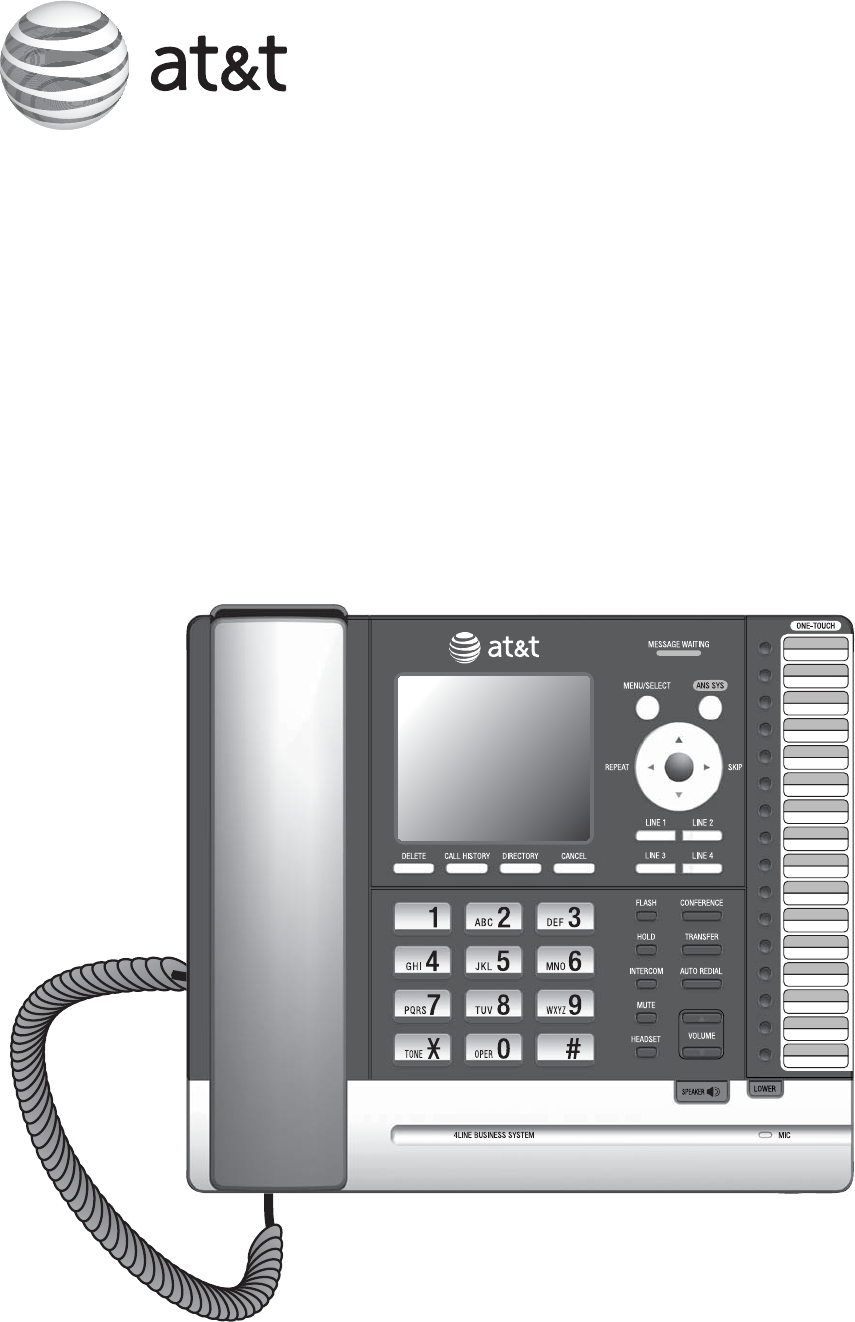
User’s manual
MS2085
DECT 6.0 4-line corded
Small Business Main Console
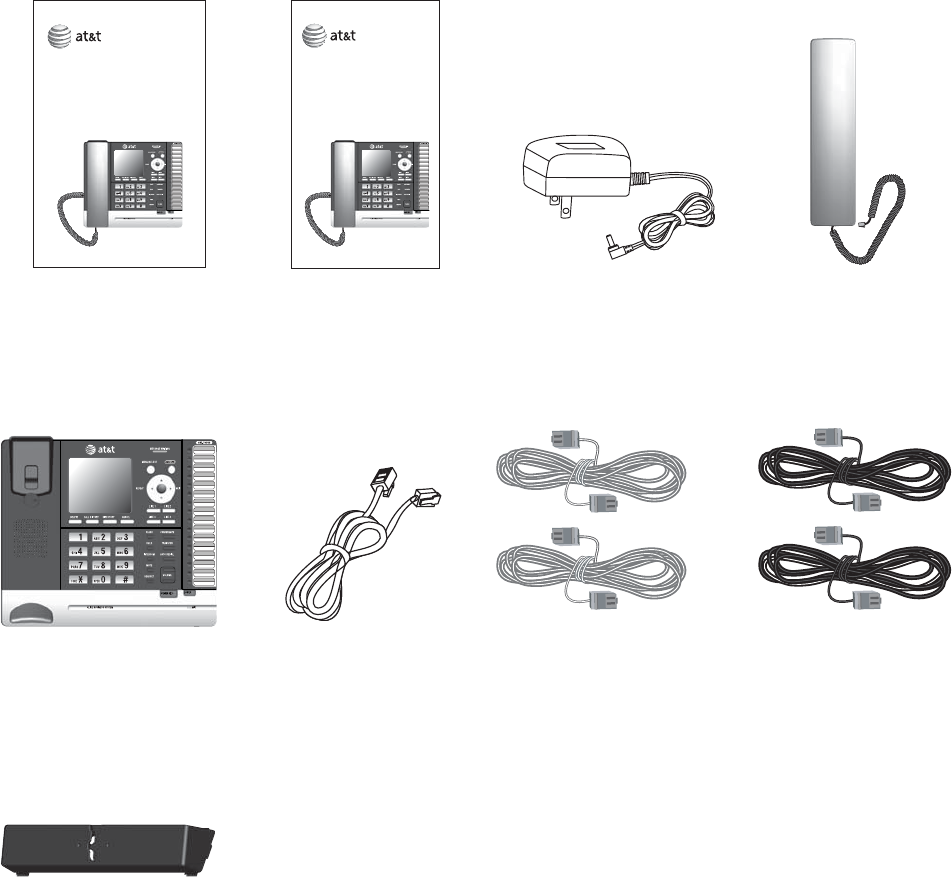
Parts checklist
Your telephone package contains the following items. Save your sales receipt
and original packaging in the event warranty service is necessary
Handset with coiled
cord installed
User's manual
Console Two telephone line cords
(4-conductor)
Console power
adapter
Quick start guide
User’s manual
MS2085
DECT 6.0 4-line corded
Small Business Main Console
Quick start guide
MS2085
DECT 6.0 4-line corded
Small Business Main Console
Ethernet cable
Wall mount bracket
Two telephone line cords
(2-conductor)
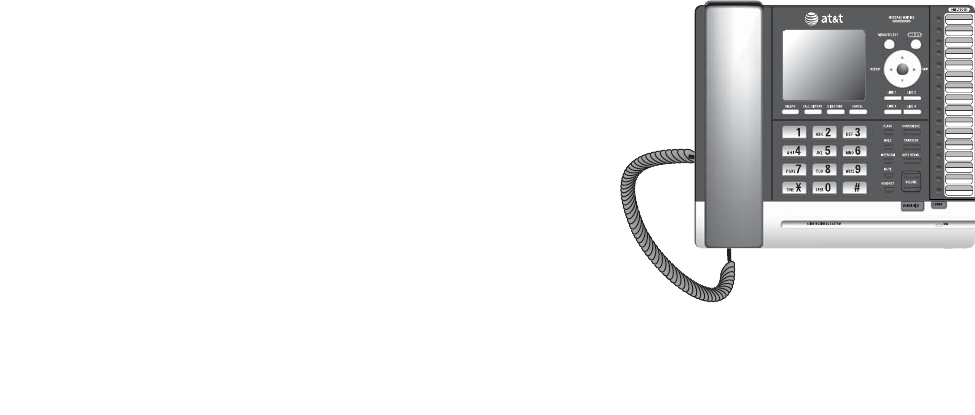
Table of contents
User’s manual
MS2085
DECT 6.0 4-line corded
Small Business Main Console
Getting started
Quick reference guide .............................. 1
Introduction.................................................... 4
Planning your system................................ 5
Installation...................................................... 6
Table/desktop installation...................... 7
Wall mount installation............................ 9
To mount the console
on the wall ................................................. 9
Wall mount to tabletop
installation................................................11
Adding and registering desksets.......12
To register a deskset to your
MS2085 main console ........................12
To register a cordless handset to
your MS2085 main console .............13
To register a cordless headset to
your MS2085 main console ............14
Deregistering cordless handset or
cordless headset....................................12
To deregister the cordless handset
or headset from the MS2085 main
console.......................................................15
Adding a corded headset......................16
To add a corded headset to the
console.......................................................16
System setup...............................................17
Menu settings..........................................17
Set extension number.........................18
Unassign extension number.............19
Prime line ..................................................20
Line group.................................................21
Set line mode..........................................22
Set master.................................................23
Network setup ........................................24
Network info............................................26
Ringer volume.........................................27
Ringer tone...............................................28
Delay ring..................................................29
Set Date/Time.........................................30
One Touch.................................................31
Assign a one-touch entry..................31
Review the one-touch entry ............33
Edit the one-touch key:......................33
Delete an one-touch key:..................34
LCD Language.........................................35
Area codes................................................36
Key Tone ....................................................37
LCD contrast ............................................37
Dial mode..................................................38
AUTO-MUTE ..............................................38
Hold reminder .........................................39
Voice announce......................................39
Phone rename.........................................40
Set default.................................................40
Customer support .................................40
Telephone operation
Telephone basic operation...................41
Line indicators.........................................41
Making a call............................................41
On hook dialing (predialing)............42
Using the speakerphone....................42
Answering a call ....................................42
Temporary ringer silencing...............42
Redial...........................................................43
Auto-redial................................................44
Options while on calls............................45
Call waiting...............................................45
Volume control .......................................45
Mute .............................................................46
Temporary tone dialing ......................46
Hold..............................................................47
Switching between lines....................47
Call privacy...............................................48
Chain dialing............................................49
Join a call in progress.........................50
Conference calls ....................................50
Intercom.........................................................52
Make an intercom call to an
extension...................................................52
Answer an intercom call....................52
End an intercom call............................52
Answer an incoming call during an
intercom call............................................52
Call transfer .................................................53
Blind transfer...........................................53
Transfer a call and speak to the
receiving party........................................54
Answer a transferred call..................54
Voice page....................................................55
Page a single device............................55
Page all devices.....................................55
End a page ..............................................55
Directory
About the directory..................................56
Capacity .....................................................56
Create directory entries.........................57
Create a new directory entry ..........57
Review directory entries ....................57
Search directory.........................................58
Search by name .....................................58
Dial, delete or edit entries....................59
Display dial ...............................................59
Delete an entry.......................................59
Edit an entry ............................................59
Caller ID
About caller ID ...........................................60
Information about caller ID with
call waiting...............................................60
Caller ID Information...............................61
How the caller ID information
(call log) works.......................................61
Caller ID operation...................................62
Memory match........................................62
Missed (new) calls indicator.............62
Review the caller ID information...62
View dialing options.............................63
Dial a call history entry......................63
Delete entries..........................................63
Save a call history entry to the
directory.....................................................64
Reasons for missing caller ID
information...............................................65
Answering system
Auto attendant setup (for
answering system)................................66
Announcement .......................................66
Auto attendant on/off ........................66
Auto attendant delay ..........................67
Delete all central mailbox
messages...................................................69
Reset auto attendant...........................69
Private mailbox setup .............................70
Private mailbox on/off........................70
Private mailbox delay..........................70
Announcement .......................................70
Delete all private mailbox
messages...................................................71
Record memo..........................................71
Call intercept...........................................72
Answering system setup........................72
Remote access code............................73
Message alert..........................................73
Message Length .....................................74
Call screening..........................................74
Record time..............................................74
About the auto attendant.....................75
Answering system capacity..............75
Auto attendant operation .....................76
Using the auto attendant .................76
Auto attendant flow chart ................77
Answering system operation...............78
New message indication....................78
Message playback.................................78
Options during playback....................78
Remote access............................................79
Maintenance.................................................81
Important safety information ..............82
FCC part 68 and ACTA............................84
FCC part 15..................................................85
Limited warranty........................................86
Technical specifications .........................88
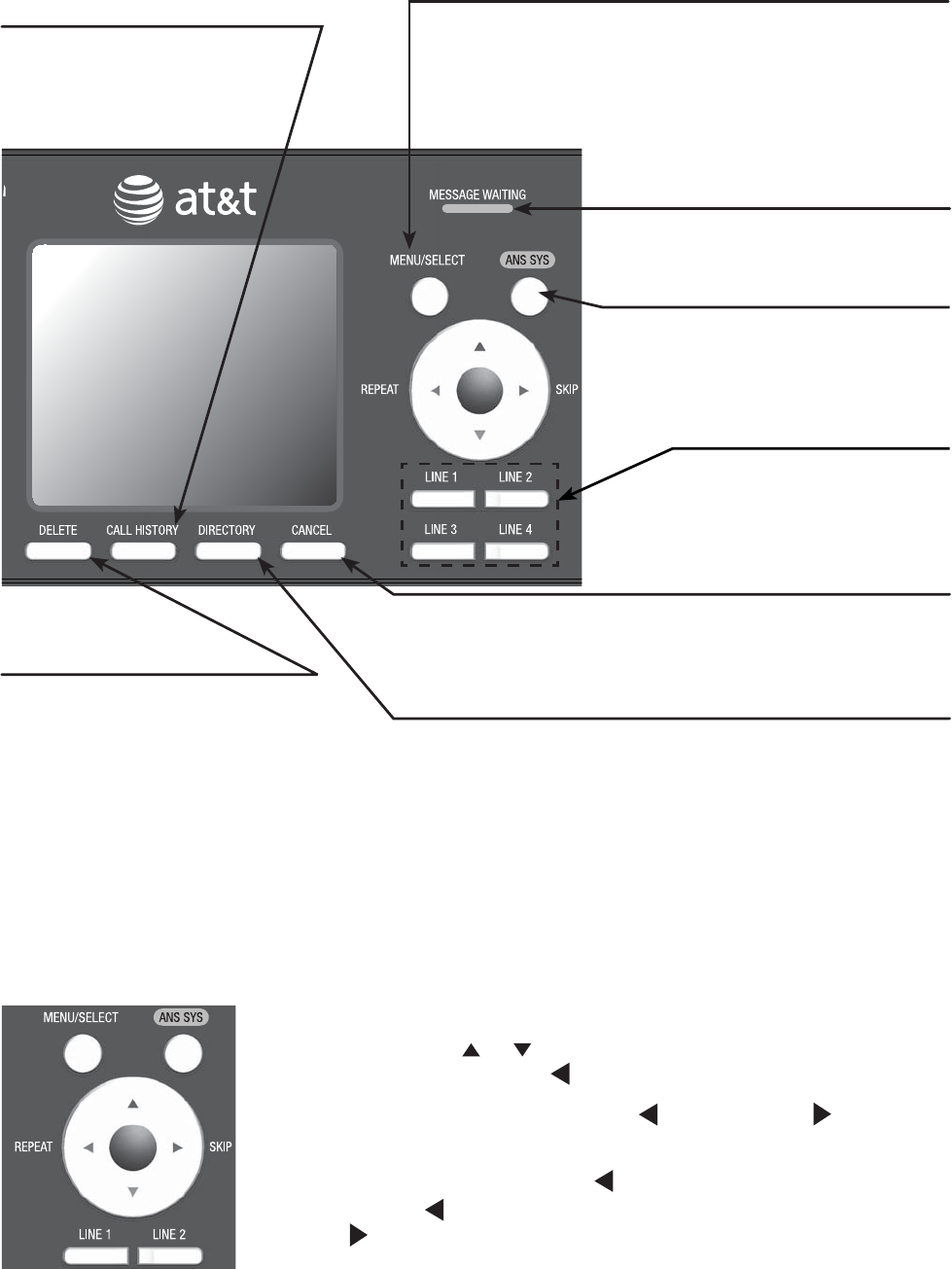
1
MENU/SELECT
Press to enter the menu.
While in the menu, press to
select an item or save an
entry or setting.
Navigation keys
While in menus, press or to scroll through the menus, highlight
items or change settings. Press REPEAT to return to the previous menu.
While entering names or numbers, press REPEAT or SKIP to move
the cursor to the left or right.
While playing back messages, press REPEAT once to repeat the
message, or press REPEAT twice to hear the previous message, or
press SKIP to skip to the next message.
CANCEL
While in a menu, press to
cancel an operation and exit
the menu display.
LINE 1-LINE 4 keys
Press to make or answer
a call on the desired line
(pages 40-41).
ANSWER ON keys
Press to show the
automatic answer options
for that line ().
MESSAGE WAITING
indicator
On when there are new or
missed calls (page 61).
CALL HISTORY
Press to view caller ID
information (page 61).
DIRECTORY
Press to view directory
information ().
DELETE
While playing a message,
press to delete the
message (page 62).
While reviewing the caller
ID information, press to
delete an individual entry
(page 62).
While predialing, press to
delete digits (page 41).
Getting started
Quick reference guide
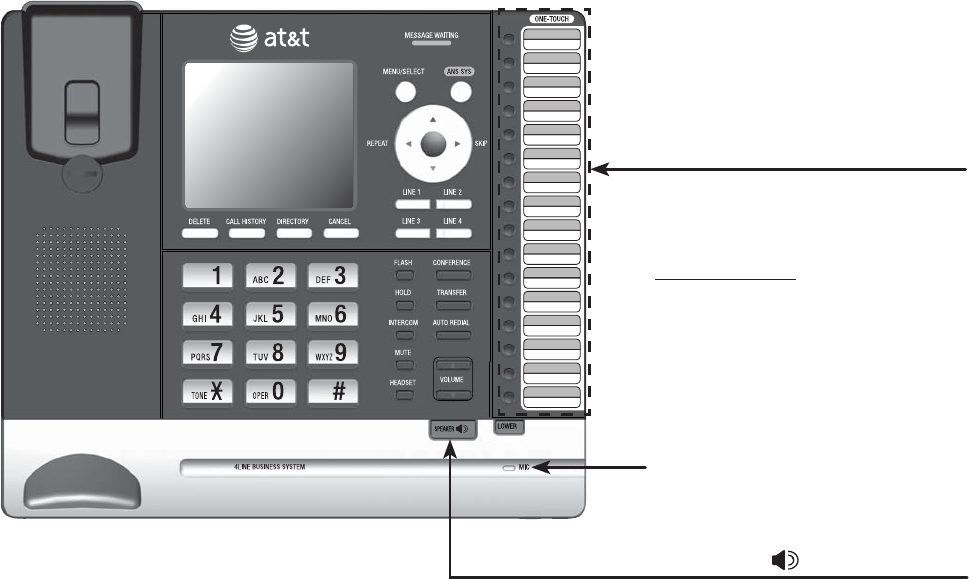
Getting started
Quick reference guide
2
One-touch keys, EXT 1-16
Press to intercom with the
desired extension number
(page 51).
Press and hold to broadcast
your voice to that extension ().
Directory card
To write names on the directory card, follow the steps below:
Pull out the directory card.
Write the information on the directory card.
Replace the directory card and the plastic cover.
1.
2.
3.
SPEAKER
Press to turn on the
speakerphone. Press again to
turn it off (page 41).
MIC
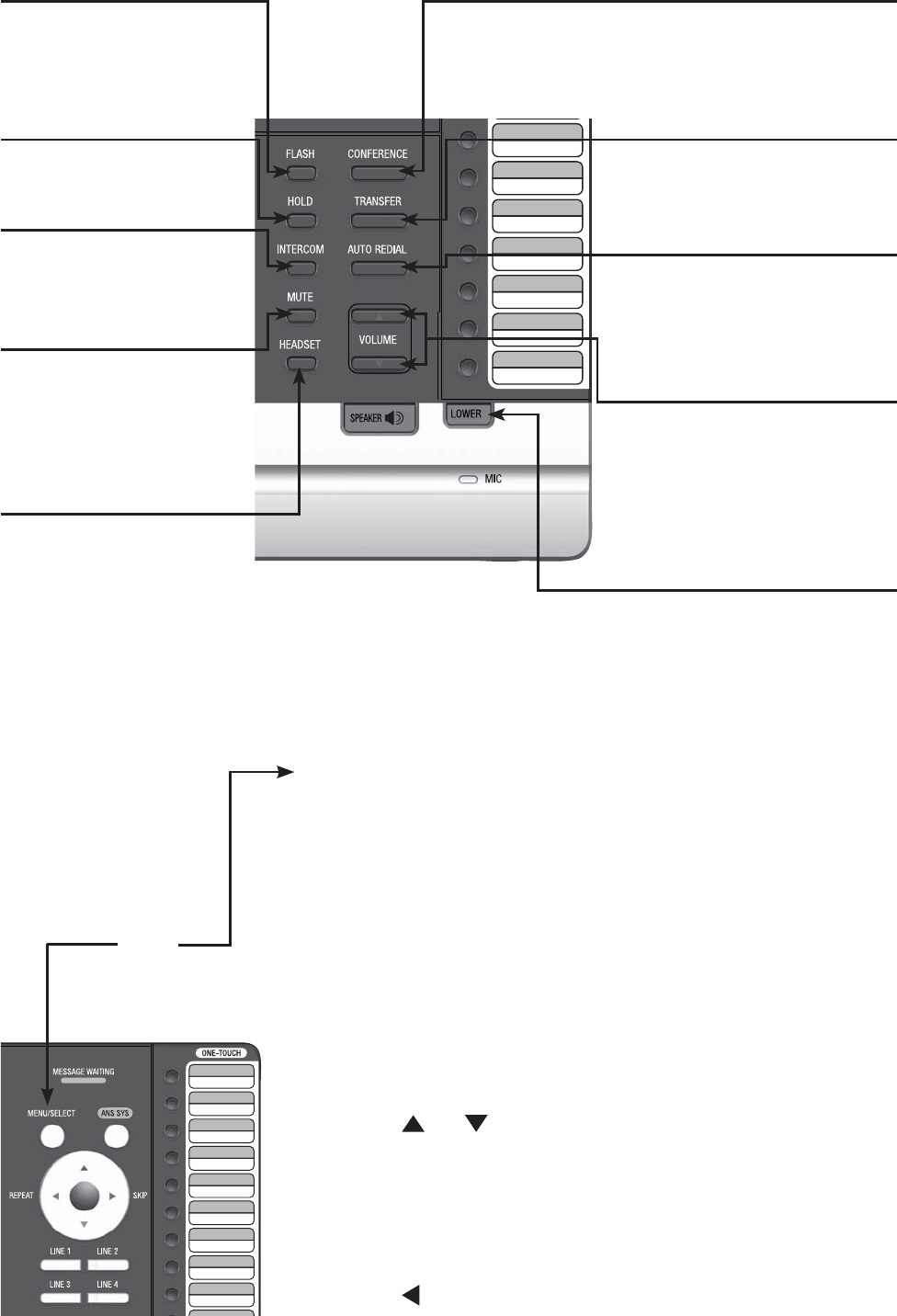
Getting started
Quick reference guide
3
AUTO REDIAL
Press repeatedly to view the
last 10 numbers dialed
(page 43).
TRANSFER
Press to transfer a call to an
extension (page 53).
MUTE
During a call, press to mute
the microphone (). During
an incoming call, press to
mute the ringer (page 41).
S/VOLUME/T
During a call, press to adjust the
listening volume (page 44).
During message playback, press
to adjust the playback volume
(page 77).
FLASH
During a call, press to answer
an incoming call when you
receive a call waiting alert
(page 44).
INTERCOM
When in idle mode, press
to initiate an intercom call
(page 51).
Main menu
The > symbol highlights a menu item.
Main menu
System Setup
Ringers
Set Date/Time
One Touch
Phone Settings
Registration
Customer Support
Using menus
Press MENU/SELECT to show the first menu item,
System Setup.
Press or to scroll through menu items.
Press MENU/SELECT to select or save changes to
a highlighted menu item.
Press CANCEL to cancel an operation, exit the
menu display or return to the idle screen.
Press /REPEAT to back up to the previous menu.
•
•
•
•
•
•
•
•
•
•
•
•
Menu
HEADSET
When a corded headset is
connected to the console,
press to get a line, answer a
call or hang up (pages 41-42).
The red indicator is on when
the headset is in use.
CONFERENCE
Press to add another extension
or outside line to an existing
call (pages 49-51).
HOLD
Press to place an outside
call on hold (page 46).
LOWER
When assigning an One-touch
key, press to store the number
to the desired location..
4
This AT&T Small Business System is expandable to a 16-extension telephone
system, with a maximum of 15 MS2015 extension desksets and a MS2025
cordless telephone. This system is not compatible with any other AT&T 4-line
small business telephones, except for the MS2015 and MS2025 telephones.
The MS2085 telephone is hearing-aid compatible and can be connected to
four incoming telephone lines. This telephone features a speakerphone for
handsfree use and a headset jack compatible with most two-band 2.5mm
headsets (sold separately).
There are two additional ports, known as the LAN port and PC port. The
Ethernet port allows the MS2085 telephone to connect with extension
desksets via a router. The PC port is for connecting the telephone to another
device such as a personal computer.
The MS2085 console enables paging, intercom, and call transfers between
system extensions and is capable of connecting three parties (two external
lines and a system extension) in the same conference call.
This telephone also features a 32-number one- and two-touch memory for
faster dialing and has a directory that can store up to 50 additional numbers
with names. This telephone has a caller ID feature that supports caller ID
with call waiting service. Caller ID services are subscriber services available
from many telephone service provider for a fee. The telephone can store up
to 200 caller ID entries.
Your MS2085 telephone also features a built-in digital answering system with
a central and private mailbox each that can store approximately 60 minutes
of messages, memos and conversations or a total of up to 99 messages.
You can access the answering system from a remote non-system touch-tone
telephone or from another system telephone. This MS2085 telephone is
equipped to function as an Auto Attendant in a multi-telephone system. An
Auto Attendant telephone can pick up and redirect incoming calls to other
extensions in your telephone system. You can assign more than one Auto
Attendant for your telephone system. For details, see the Auto attendant
operation section (pages 59-63). This user’s manual contains detailed
instructions for using your AT&T Small Business System MS2085 telephone.
Please read this user’s manual before using this telephone.
Getting started
Introduction
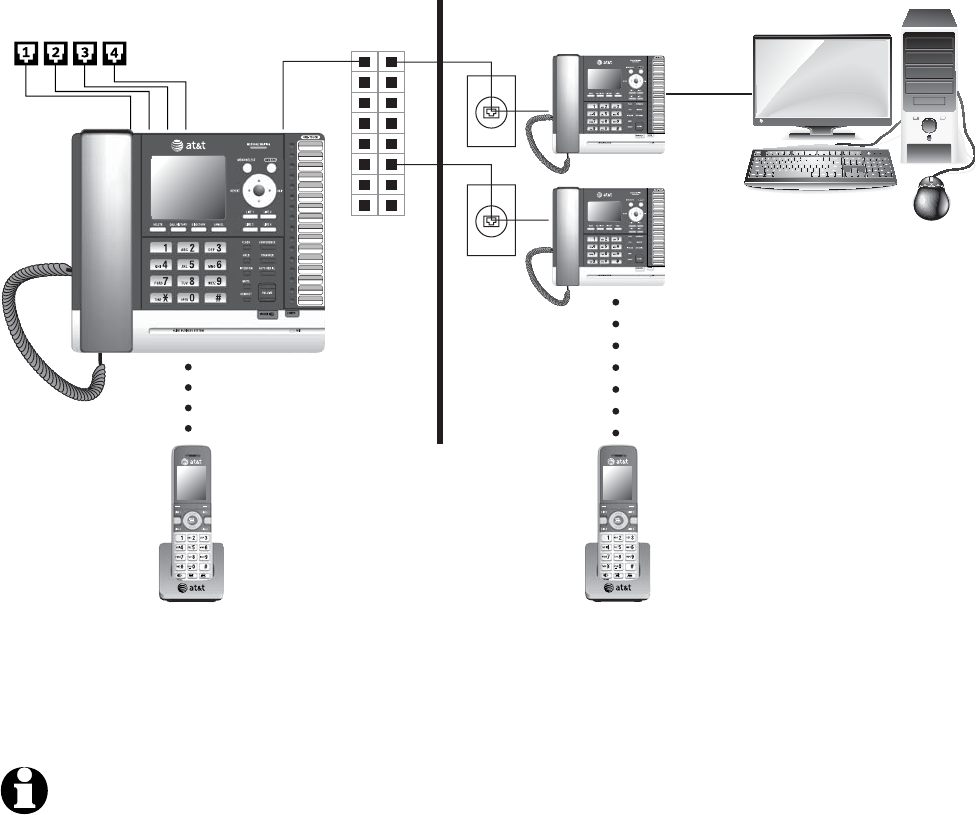
5
The MS2085 package includes only the telephone console. You have to
purchase MS2015 extension deskset and/or MS2025 cordless handset
separately to expand your system. To order them, visit our website at
www.telephones.att.com or call 1 (800) 222-3111. In Canada, dial
1 (866) 288-4268. The MS2085 telephone can accommodate a maximum
of 15 extension desksets and a cordless handset.
NOTES:
You must have modular telephone jacks and electrical outlets not controlled by wall switches near
where you are installing the phones.
The auto-attendant function is available only on MS2085 telephone.
Assign a different system extension number EXT XX to each system telephone (see the
EXTENSION NUMBER section on page XX). We recommend assigning EXT 11 to an auto-attendant
telephone. Every individual phone in your telephone system MUST be assigned a unique extension
number for the intercom feature to work.
•
•
•
Getting started
Planning your system
+06 1((
%#0%'.
+06 1((
%#0%'.
M2015
M2085
Console Station
M2025
Cordless handset
Phone lines Ethernet switch
(up to 15 stations)
6
Install the console close to the telephone jacks, a router and a power outlet
not controlled by a wall switch. The telephone can be placed on a flat surface
or vertically mounted on the wall (page XX). For optimum range and better
reception, place the console in a central and open location.
If you subscribe to high-speed Internet service (DSL - digital subscriber line)
through your telephone lines, you must install a DSL filters between the
telephone line cords and the telephone wall jacks (see page XX). The filter
prevents noise and caller ID problems caused by DSL interference. Please
contact your DSL service provider for more information about DSL filters.
Your product may be shipped with a protective sticker covering the console
display - remove it before use.
For customer service or product information, visit our website at
www.telephones.att.com or call 1 (800) 222-3111. In Canada, dial
1 (866) 288-4268.
Avoid placing the console too close to:
Communication devices such as television sets, VCRs, or other
cordless telephones.
Excessive heat sources.
Noise sources such as a window with traffic outside, motors, microwave ovens,
refrigerators, or fluorescent lighting.
Excessive dust sources such as a workshop or garage.
Excessive moisture.
Extremely low temperature.
Mechanical vibration or shock such as on top of the washing machine or
work bench.
•
•
•
•
•
•
•
Getting started
Installation
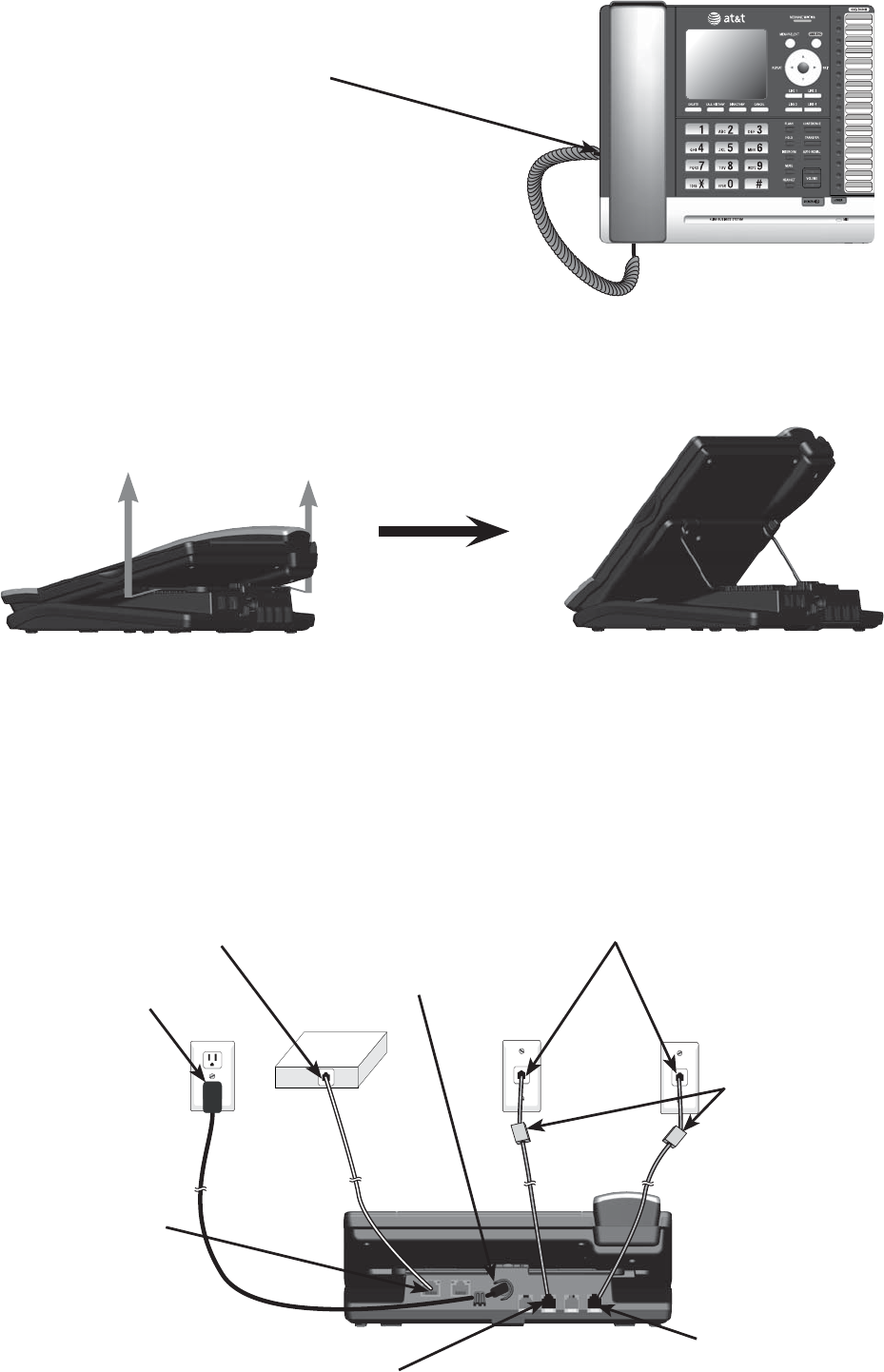
7
Plug the end of the coiled
handset cord into the
HANDSET jack on the left
side of the telephone.
1.
Lift the kickstand as the arrows indicated below to detach it from the
console. There are seven grooves designed to hold the console in different
angles for maximum visibility. Snap the kickstand into the desired groove
until it locks into place.
2.
Install the telephone line cords and power adapter as shown below. If
you subscribe to high-speed Internet service (DSL - digital subscriber line)
through your telephone lines, you must install a DSL filter between each
telephone line cord and telephone wall jack. The filter prevents noise and
caller ID problems caused by DSL interference. Please contact your DSL
service provider for more information about DSL filters.
Option 1: To connect two 2-line wall jacks
3.
Router
Line 3/4 Line 1/2
Plug the larger
end of the console
power adapter into
an electrical outlet
not controlled by a
wall switch.
If you have DSL
high-speed
Internet service,
a DSL filter (not
included) is
required on each
DSL line.
The DSL filter
must be plugged
into the telephone
wall jack.
Plug one end of the
Ethernet cable into
the Ethernet jack
at the back of
the console.
Plug the another end of the
telephone line into a 2-line
telephone wall jack
Plug the other end of the
Ethernet cable into a router
Plug one end of the black telephone
line cord into the L3/4 jack at the back
of the console.
Plug one end of the
black telephone line
cord into the L3/4
jack at the back of
the console.
Getting started
Table/desktop installation
Plug the small end of the
console power adapter into the
power jack on the back of the
console.
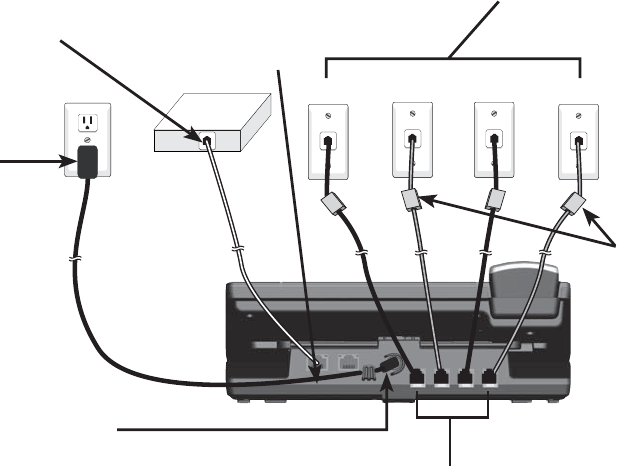
8
Getting started
Table/desktop installation
Option 2: To connect four single line wall jacks
IMPORTANT INFORMATION
Use only the power adapter supplied with this product. To order a replacement power adapter, visit
our website at www.telephones.att.com, or call 1 (800) 222-3111.
In Canada, dial 1 (866) 288-4268.
The power adapter is intended to be correctly oriented in a vertical or floor mount position. The
prongs are not designed to hold the plug in place if it is plugged into a ceiling, under-the-table or
cabinet outlet.
1.
2.
Line 4
Router
Line 2Line 3/4 Line 1/2
Plug the larger
end of the
console power
adapter into an
electrical outlet
not controlled by
a wall switch.
If you have DSL
high-speed
Internet service,
a DSL filter (not
included) is
required on each
DSL line.
The DSL
filter must be
plugged into the
telephone wall
jack.
Plug one end of the
Ethernet cable into the
Ethernet jack at the back
of the console.
Plug the another end of the
telephone line into a 1-line
telephone wall jack
Plug the other end
of the Ethernet
cable into a router
Plug one end of the telephone
line cord into the L1, L1/2, L3
and L3/4 jack at the back of the
console.
Plug the small end of the
console power adapter into
the power jack on the back
of the console.
The console takes at least one minute to start up.
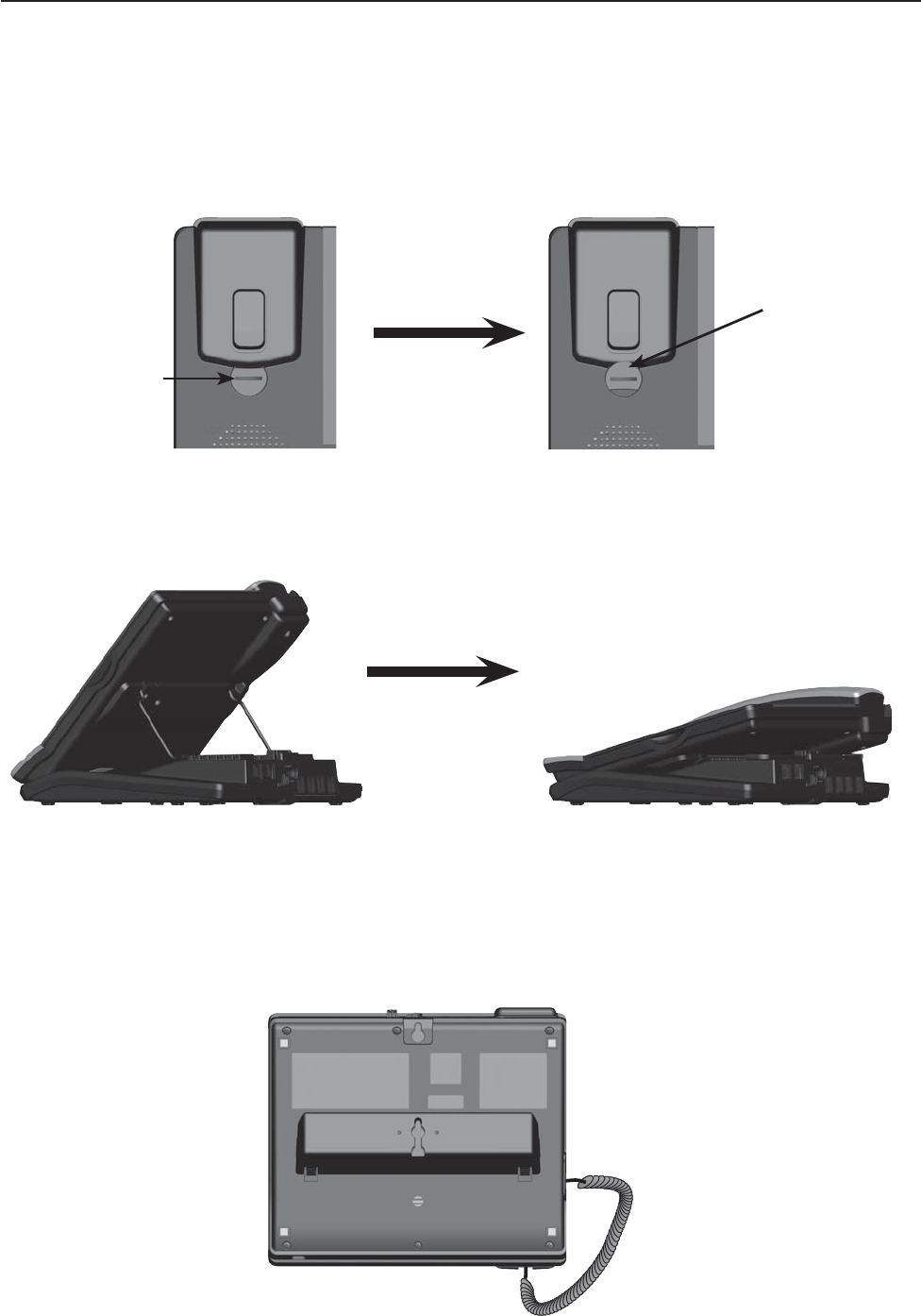
9
To mount the console on the wall:
Lift the kickstand to detach it from the console, then snap it into the
outermost groove until it locks into place.
2.
Install the wall mount bracket to the console as shown below. Insert the
upper tabs of the mounting bracket into the upper slots of the console.
Press the lower tabs of the mounting bracket into the lower slots of the
console until they lock into place.
3.
Unplug the power adapter from the power outlet. Unplug the telephone
line cords from the wall jacks (or DSL filters). Unplug the Ethernet cable
from the router.
Put the corded handset aside. Use a coin to rotate the handset tab 180
degrees. The protruding edge holds the corded handset when the phone is
mounted on the wall.
1.
2.
Protruding edge
Handset tab
Getting started
Wall mount installation
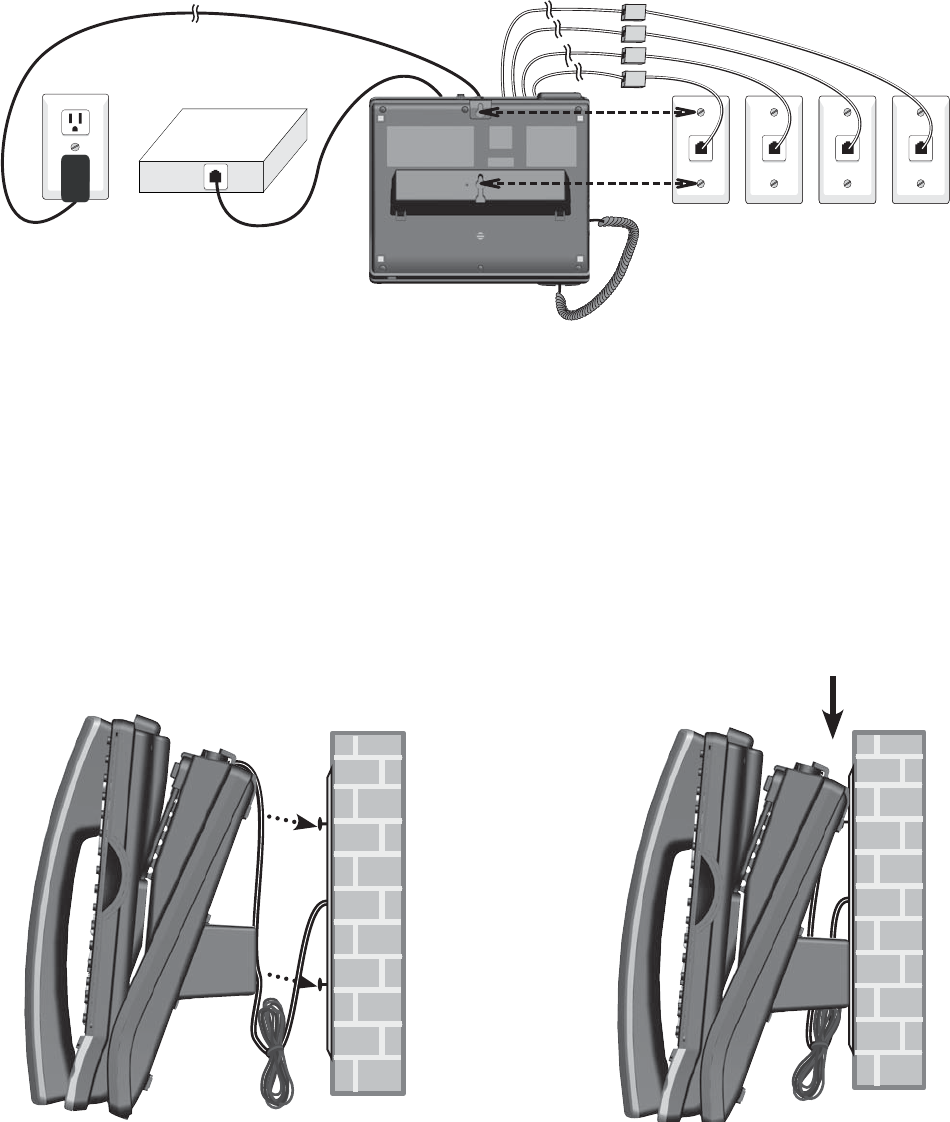
10
Getting started
Wall mount installation
Router
Line 1/2 Line 2 Line 3/4 Line 4
Install the telephone line cords and power adapter as shown below. 4.
To connect two 2-line wall jacks, refer to the Option 1: To connect two
2-line wall jacks illustration on page 7.
Align the upper wall mounting hole on the back of the console with the
upper tab of the standard wall plate. Make sure the lower wall mounting
hole on the mounting bracket also aligns with the lower tab of the
standard wall plate. Push the console down until it clicks securely in place.
Bundle the telephone line cord and power adapter cord neatly with
twist ties.
5.
6.
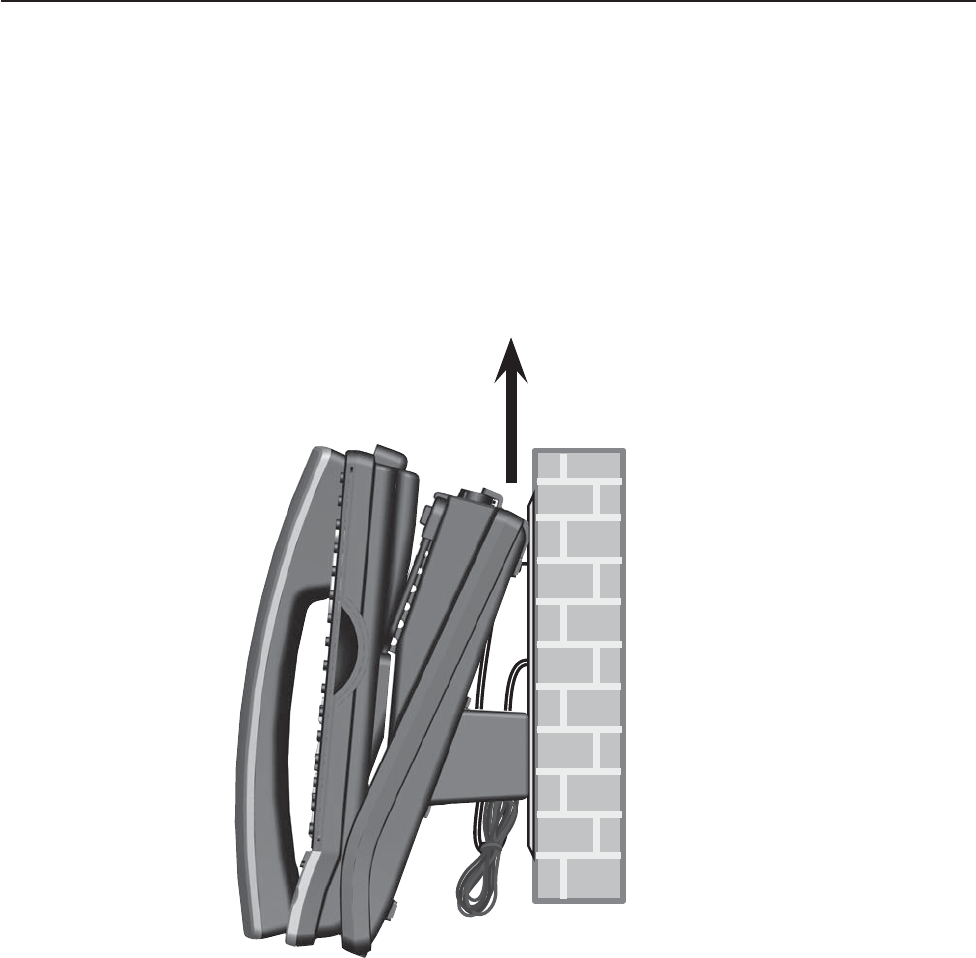
11
Getting started
Wall mount installation
Wall mount to tabletop installation
To change the console from the wall mount position to tabletop position,
follow the steps below.
If the telephone line cords and power adapter cord are bundled, untie
them first.
Push the console up to remove it from wall. Unplug the telephone line
cords (or DSL filters) from the wall. Unplug the power adapter from the
power outlet. Unplug the Ethernet cable from the router.
See Table/desktop installation. on pages 7-8.
1.
2.
3.
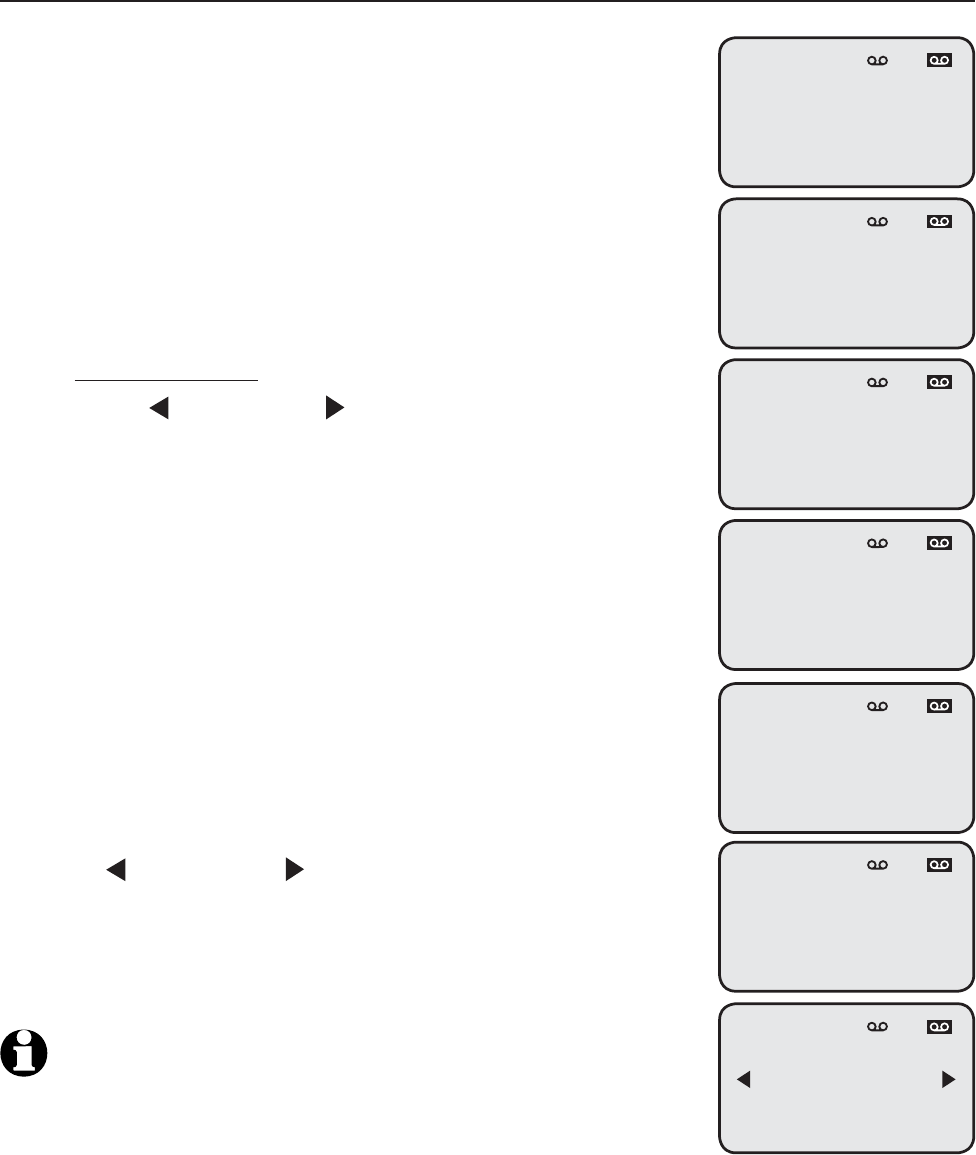
12
Your telephone can support up to 15 desksets. The desksets must be registered
to the console before use. You must register each deskset separately.
Make sure your deskset is installed properly. Start registration when the deskset
screen shows IP obtained: XXX.XXX.X.X Press SELECT to proceed.
To register a deskset to your MS2085 main console
The deskset shows IP obtained: XXX.XXX.X.X Press
SELECT to proceed.before you begin registration.
On the main console, press MENU/SELECT.
The deskset screen displays Enter the name of the
Console that this phone is connected to. Then the
screen displays Console’s name:
Use the dialing key on the deskset to enter the name
of Console.
Press DELETE to delete a character.
Press and hold DELETE to delete all characters.
Press /REPEAT or /SKIP to move the cursor
left or right.
Press MENU/SELECT to save. The deskset screen
displays Connecting to Console X... (Console X
represents the deskset name).
It takes up to 60 seconds to complete the
registration. You hear a confirmation tone when the
registration is successful. The console shows Deskset
is connected to Console X and the deskset shows
Deskset X (Deskset X represents the deskset name).
Press any key on the deskset to confirm. The deskset
screen displays Please set and extension number to
this phone.
Press /REPEAT or /SKIP to choose the desired
extension number. The extension ranges from 11
to 26.
Press MENU/SELECT to confirm. You hear a
confirmation tone.
NOTE: If the registration is not successful, the console screen
displays Deskset cannot connect to Console X with an error tone,
the deskset screen displays Check Console in idle screen. Try the
registration process again.
1.
2.
3.
4.
•
•
•
5.
6.
7.
8.
9.
IP obtained:
XXX.XXX.X.X
Press SELECT
To proceed
L1 L2 L3 L4
Enter the name of
the Console that
this phone is
connected to.
L1 L2 L3 L4
Console’s name:
_
L1 L2 L3 L4
Connecting to
Console X
...
L1 L2 L3 L4
Deskset is
connected to
Console X
L1 L2 L3 L4
Please set an
extension number
to this phone
L1 L2 L3 L4
Set Ext no.
11
L1 L2 L3 L4
Getting started
Adding and registering desksets
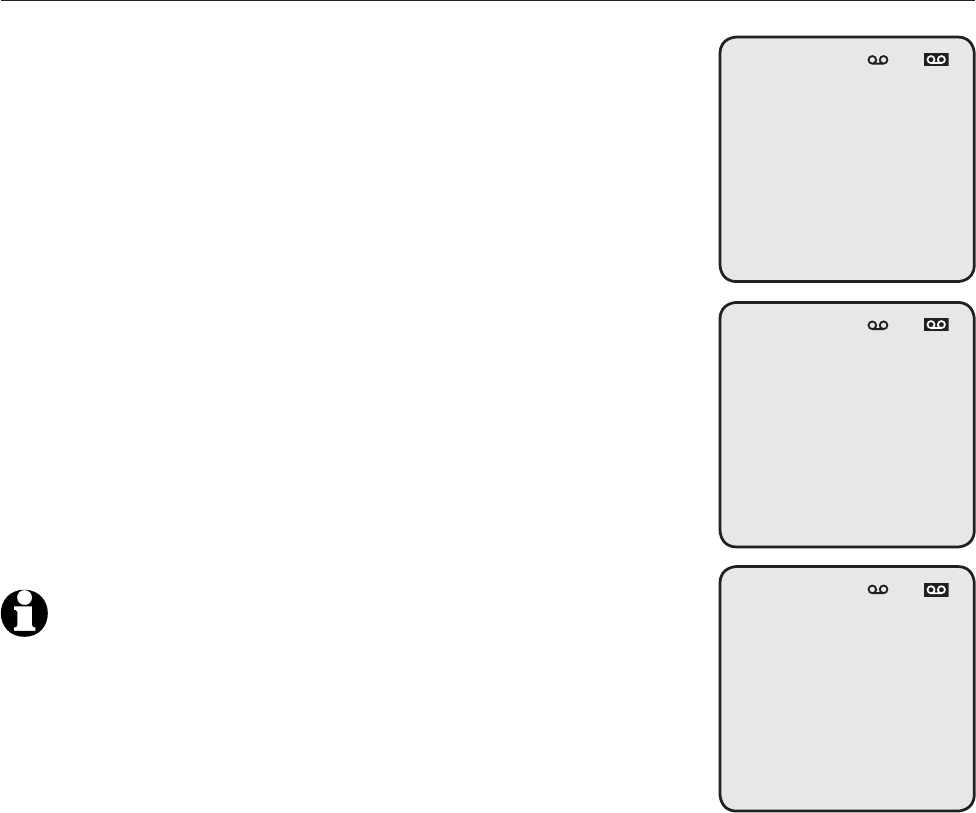
13
Getting started
Adding and registering a cordless handset
You can add a new handset (MS2025, purchased separately) to your telephone
system, but it must be registered with the MS2085 main console before use.
When first purchased, the expansion handset shows Choose Handset in
Registration at base menu. And put handset on cradle to register.
If the handset does not have enough power to proceed with the registration,
you need to charge the new handset for at least five minutes (see Battery
installation and charging in the cordless handset manual). Start registration
when the handset screen shows Choose Handset in Registration at base menu.
And put handset on cradle to register.
To register a cordless handset to your MS2085 main console
Make sure the cordless handset is out of the
charger and the screen shows Choose Handset in
Registration at base menu. And put handset on
cradle to register.
On the MS2085 main console, press MENU/SELECT.
Scroll down to Registration and press MENU/SELECT.
Press MENU/SELECT again to select Handset. The
MS2085 main console screen shows Registering
handset... (Put handset on cradle to start).
Place the unregistered cordless handset into the
charger. The handset beeps once and begins
registering to the MS2085 main console. It takes up
to 60 seconds to complete the registration. There
is a beep sound when the registration is successful.
The MS2085 main console shows Handset registered
and then the handset shows Handset X (Handset X
represents the handset name).
NOTES:
If the registration is not successful, the MS2085 main console screen
displays Registration failed with an error tone. To reset the
handset, remove the handset from the cradle. Try the registration
process again.
Make sure to remove all unregistered system handsets or cordless
headset from the cradles before registering a new handset.
1.
2.
3.
4.
5.
1.
2.
System Setup
Ringers
Set Date/time
One Touch
Phone Settings
>Registration
Customer Support
L1 L2 L3 L4
Registration
>Handset
DECT Headset
L1 L2 L3 L4
Registering
handset...
(Put handset on
cradle to start)
L1 L2 L3 L4
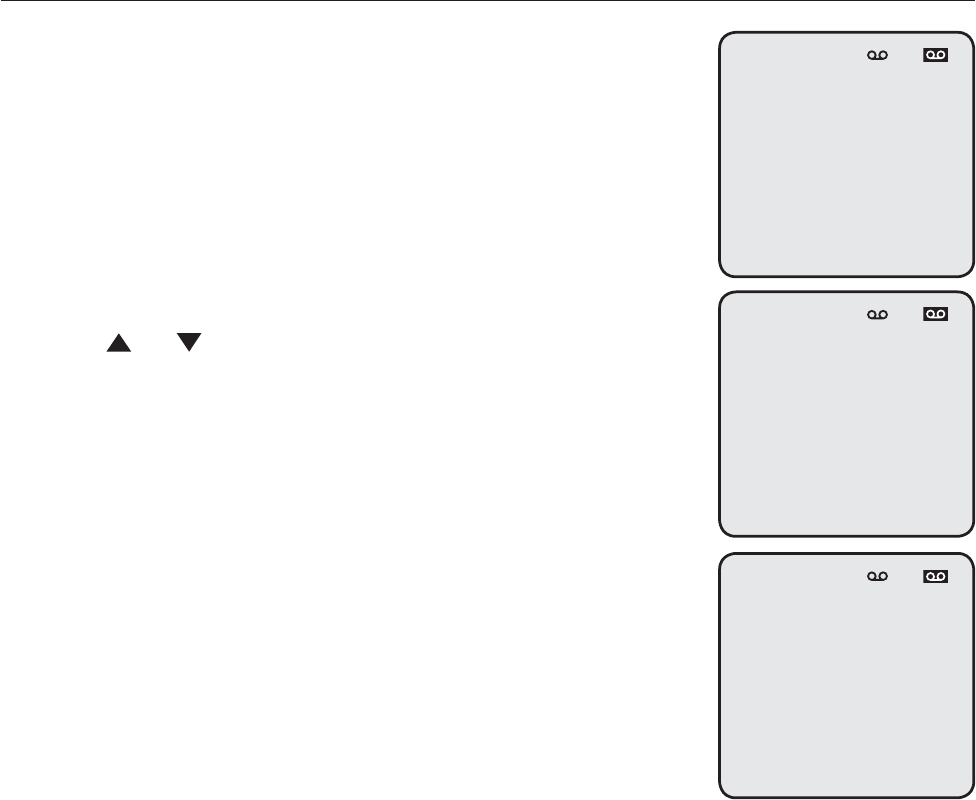
14
You can use this phone handsfree when you register a DECT 6.0 cordless
headset to the MS2085 main console. You can only register one cordless
headset to the MS2085 main console. The cordless headset must have a
charged battery. Make sure the headset battery is properly installed.
The telephone system is compatible with certain AT&T DECT 6.0 cordless
headsets. Visit www.telephones.att.com/headsets for a list of
compatible cordless headsets.
To register a cordless headset to your MS2085 main console
Place the headset in the headset charger and allow
it to charge for at least five minutes before beginning
registration. Make sure the headset is out of the
headset charger before you begin registration.
On the MS2085 main console, press MENU/SELECT.
Scroll down to Registration and press MENU/SELECT.
Set your headset to discoverable mode, refer to the
user’s manual of your headset for instructions.
Press or to scroll to DECT Headset then press
MENU/SELECT. The MS2085 main console shows
Registering DECT Headset... It takes up to
60 seconds to complete the registration.
The MS2085 main console shows DECT Headset
registered and you hear a confirmation tone when
the registration is successful.
Refer to the user’s manual of your cordless headset
for more details on registration. For a list of
compatible DECT 6.0 cordless headset, visit
www.telephones.att.com/headsets.
1.
2.
3.
4.
5.
6.
Registration
Handset
>DECT Headset
Deregistration
L1 L2 L3 L4
Registering
DECT headset...
L1 L2 L3 L4
System Setup
Ringers
Set Date/time
One Touch
Phone Settings
>Registration
Customer Support
L1 L2 L3 L4
Getting started
Adding and registering a cordless headset
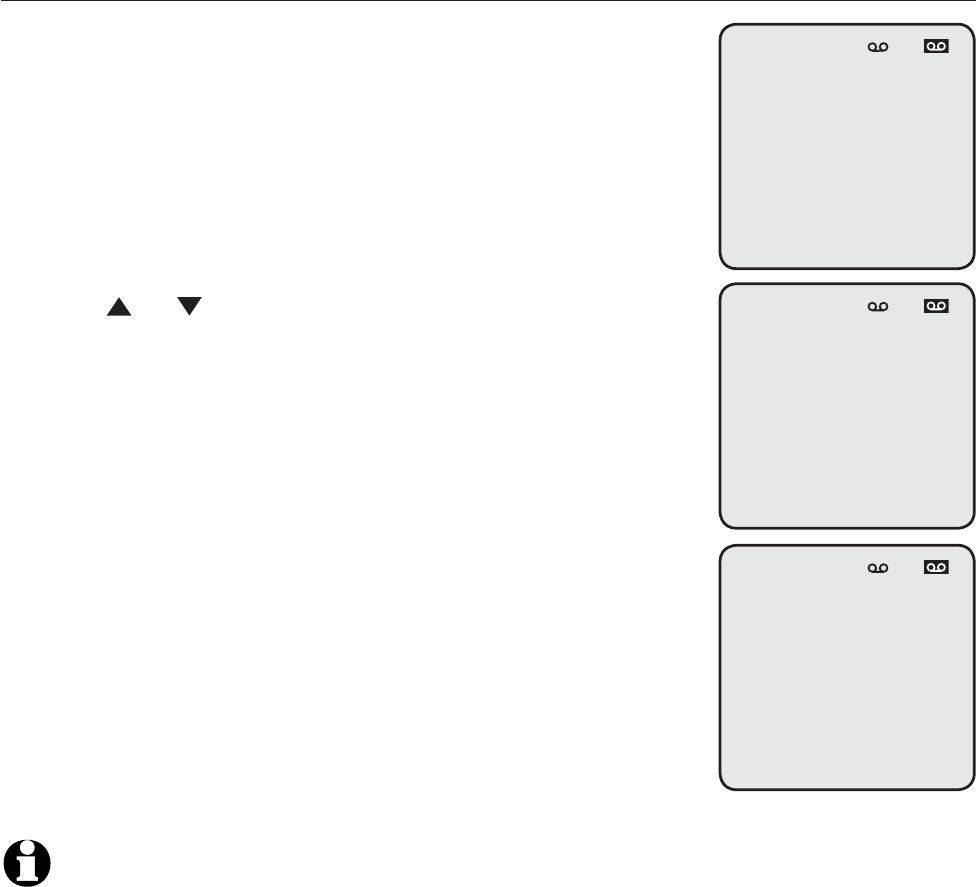
15
You may need to deregister your cordless handset or headset when you have
a registered handset or headset and need to replace one. Please read all
the instructions on this page before beginning the deregistration process.
Please make sure the telephone system is not in use before deregistration.
To deregister the cordless handset or headset from the MS2085
main console
On the console, press MENU/SELECT.
Scroll down to Registration and press MENU/SELECT.
Scroll down to Deregistration and press
MENU/SELECT.
Press MENU/SELECT.
Press MENU/SELECT to choose Handset.
-OR-
Press or to choose DECT Headset.
The console screen shows Deregister Handset?
Press <SELECT> to confirm if you selected
HANDSET, or Deregister DECT Headset? Press
<SELECT> to confirm if you selected DECT Headset.
Press MENU/SELECT to confirm.
The console shows Deregistering. It takes up to 10
seconds to complete the deregistration.
If you are deregistering the cordless handset,
the console shows Handset deregistered and a
confirmation tone when the deregistration
is successful.
If you are deregistering the DECT headset, the
console shows DECT Headset deregistered and
a confirmation tone when the deregistration
is successful.
NOTES:
If the deregistration process is not successful, you might need to reset the system and try again.
To reset, you can press CANCEL on the console. You can also reset the console by unplugging the
power from the console and plugging it back in.
To register a cordless handset again, refer to the registration information on page 13.
To register a cordless headset again, refer to the registration information on page 14.
1.
2.
3.
4.
5.
6.
7.
•
•
1.
2.
3.
Registration
Handset
>DECT Headset
Deregistration
L1 L2 L3 L4
Deregister
Handset?
Press <SELECT>
to confirm
L1 L2 L3 L4
Degistration
>Handset
DECT Headset
Deregistration
L1 L2 L3 L4
Getting started
Deregistering cordless handset or cordless headset
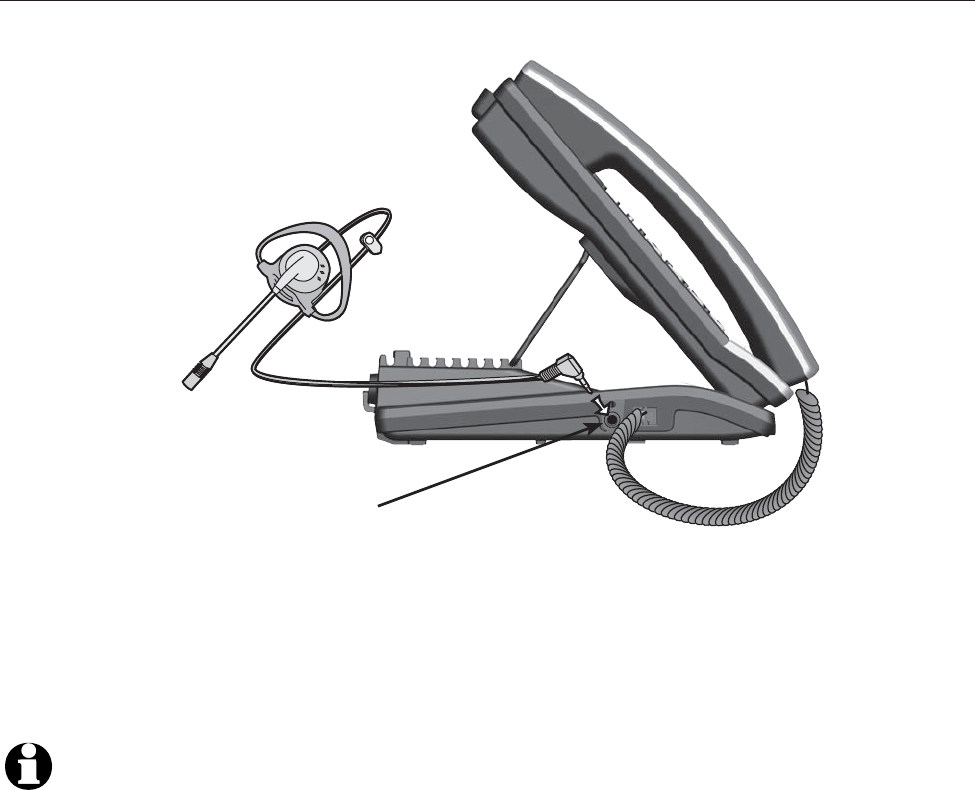
16
You can use this telephone handsfree when you install any industry-standard
2.5mm corded telephone headset (purchased separately). For best results,
use an AT&T 2.5mm corded headset. To purchase a headset, visit our website
at www.telephones.att.com, or call 1 (800) 222-3111. In Canada,
dial 1 (866) 288-4268. See page 44 for instructions on using the corded
headset with this telephone.
Plug a 2.5 mm headset into
the HEADSET jack on the side
of the console.
Side view of the console
NOTE: If you have corded and cordless headsets connected to your console, theIf you have corded and cordless headsets connected to your console, the HEADSET
button only controls the corded headset.
To add a corded headset to the console
Getting started
Adding a corded headset

17
Menu settings
Use this menu to change the telephone system settings.
Press MENU/SELECT when in idle mode (when the telephone is not in use)telephone is not in use) is not in use)
to enter the main menu.
Press or to scroll to the feature to be changed.to scroll to the feature to be changed.
The > symbol indicates the selected menu item.
Press MENU/SELECT to select the menu item.
Press CANCEL to exit setup without making changes.
NOTE: Press CANCEL to cancel an operation, exit the menu display, or return to idle mode.
1.
2.
3.
4.
Getting started
System setup
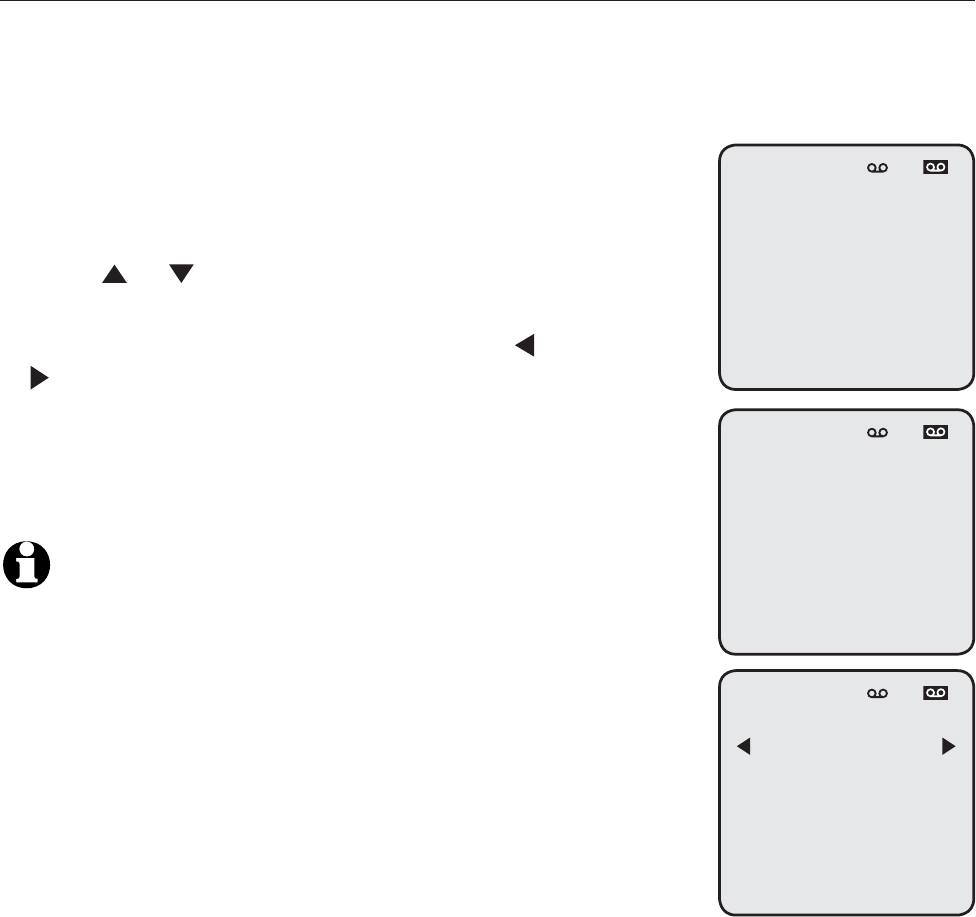
18
Set extension number
Each individual phone in the telephone system MUST be assigned a unique
extension number for the intercom feature to work. The assignment is done
automatically when the phone is initially setup.
To change the extension number:
When the console is idle, press MENU/SELECT.
Press MENU/SELECT to choose System Setup.
Press or to scroll to Set Ext. No. then press
MENU/SELECT.
The screen displays Set Ext No. Press /REPEAT or
/SKIP to choose the desired extension number
(11-26).
Press MENU/SELECT to save the setting and return to
the previous menu. There is a confirmation tone. To
exit without making changes, press CANCEL.
NOTES:
If the extension number is already being used, the screen displays
Extension number already in use briefly and you hear an error tone.
If you want to assign an extension number that is already being used,
see Unassign extension number on page 19 to replace the number.
1.
2.
3.
4.
5.
1.
2.
>System Setup
Ringers
Set Date/time
One Touch
Phone Settings
Registration
Customer Support
L1 L2 L3 L4
System Setup
>Set Ext No.
Unassign Ext No.
Prime Line
Line Group
Set Line Mode
Set Master
L1 L2 L3 L4
Set Ext No.
11
L1 L2 L3 L4
Getting started
System setup
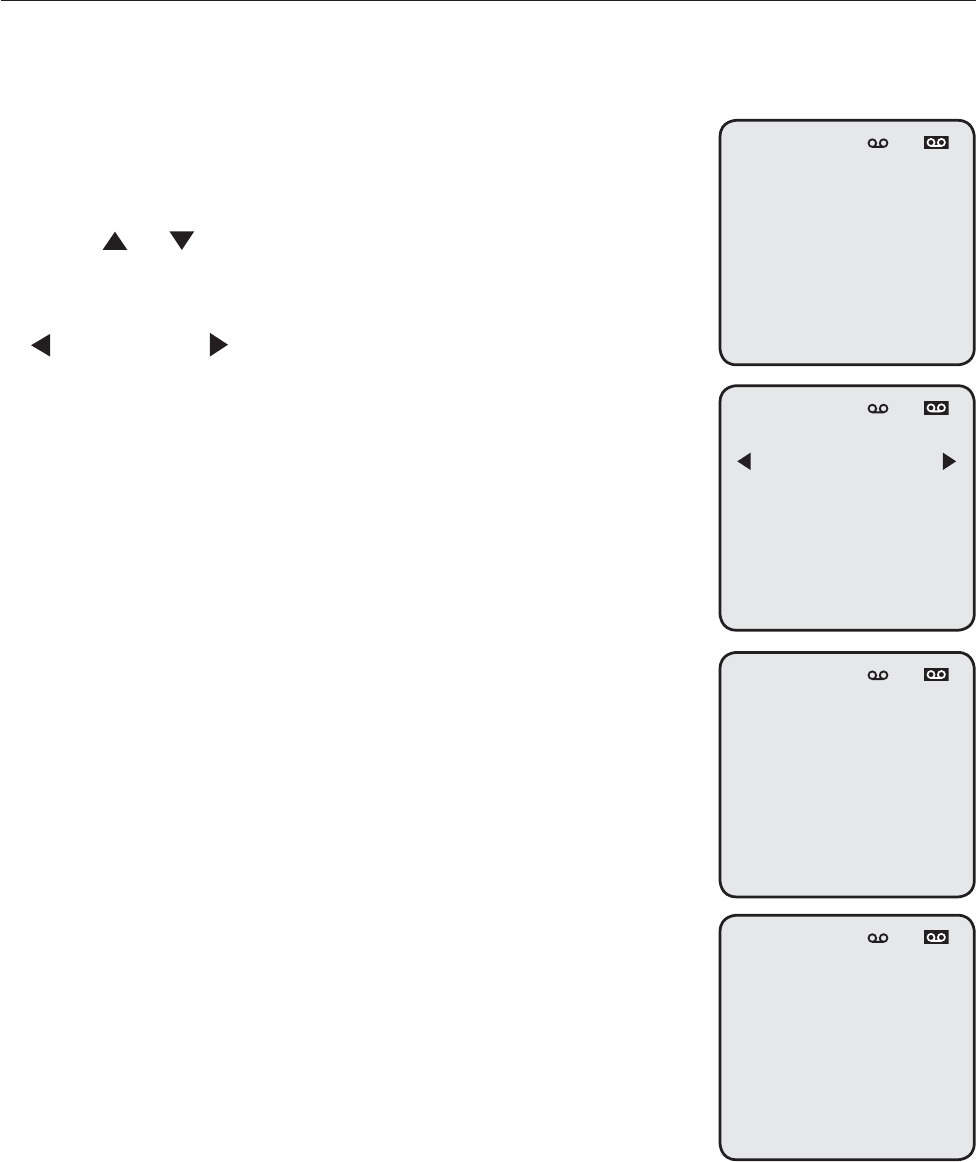
19
Unassign extension number
You can unassign an extension number that is already being used from the
telephone system to make it available for other desksets.
To unassign an extension number:
When the console is idle, press MENU/SELECT.
Press MENU/SELECT to choose System Setup.
Press or to scroll to Set Ext. No. then press
MENU/SELECT.
The screen displays Unassign Ext No. Press
/REPEAT or /SKIP to choose the desired
extension number (11-26) and then press
MENU/SELECT.
The screen displays Unassign Ext No. XX from phone:
Deskset X? Press MENU/SELECT to confirm. There is a
confirmation tone. The screen displays Extension No.
XX is available for use now.
1.
2.
3.
4.
5. Unassign Ext No.
11
L1 L2 L3 L4
System Setup
Set Ext No.
>Unassign Ext No.
Prime Line
Line Group
Set Line Mode
Set Master
L1 L2 L3 L4
Unassign Ext No.
XX from phone:
Deskset X
?
L1 L2 L3 L4
Extension No. XX
is available
for use now.
L1 L2 L3 L4
Getting started
System setup
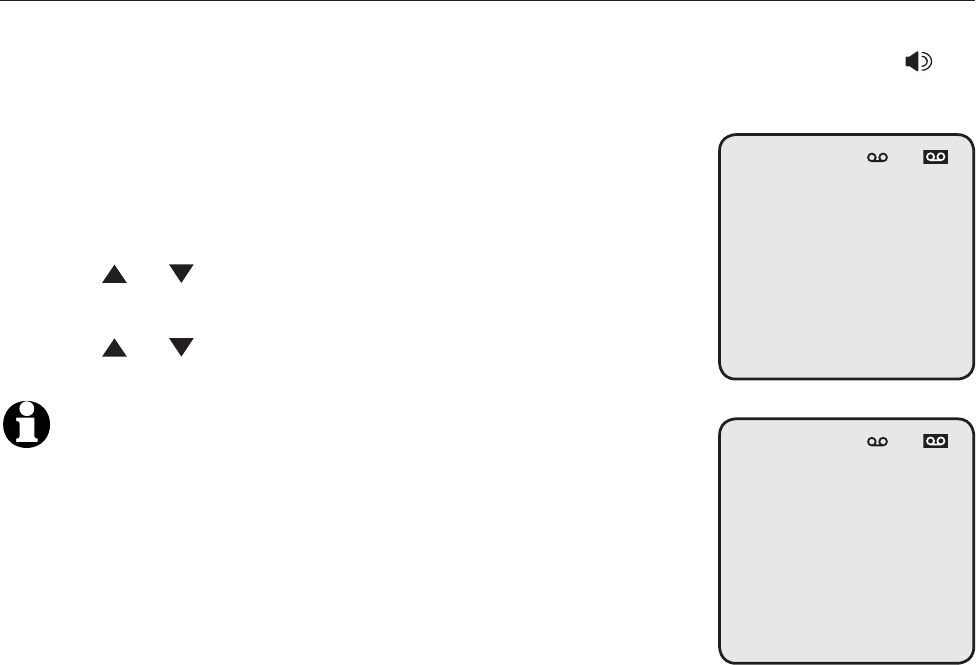
20
Getting started
System setup
Prime line
Use this feature, also known as automatic line selection, to choose which line
is automatically selected each time you lift the handset, press SPEAKER or
HEADSET (if a headset is connected) to make an outside call.
To set the prime line:
When the console is idle, press MENU/SELECT.
Press MENU/SELECT to choose System Setup.
Press or to scroll to Prime Line then press
MENU/SELECT.
Press or to choose the desired line and then
press MENU/SELECT.
NOTE: If you choose the line that is not connected to theIf you choose the line that is not connected to the
telephone wall jack, the console main console displays No line
connects to Line X. But settings will still be saved. and you
hear a notification tone.
1.
2.
3.
4.
System Setup
Set Ext No.
Unassign Ext No.
>Prime Line
Line Group
Set Line Mode
Set Master
L1 L2 L3 L4
Prime Line
>Line 1
Line 2
Line 3
Line 4
Auto
L1 L2 L3 L4
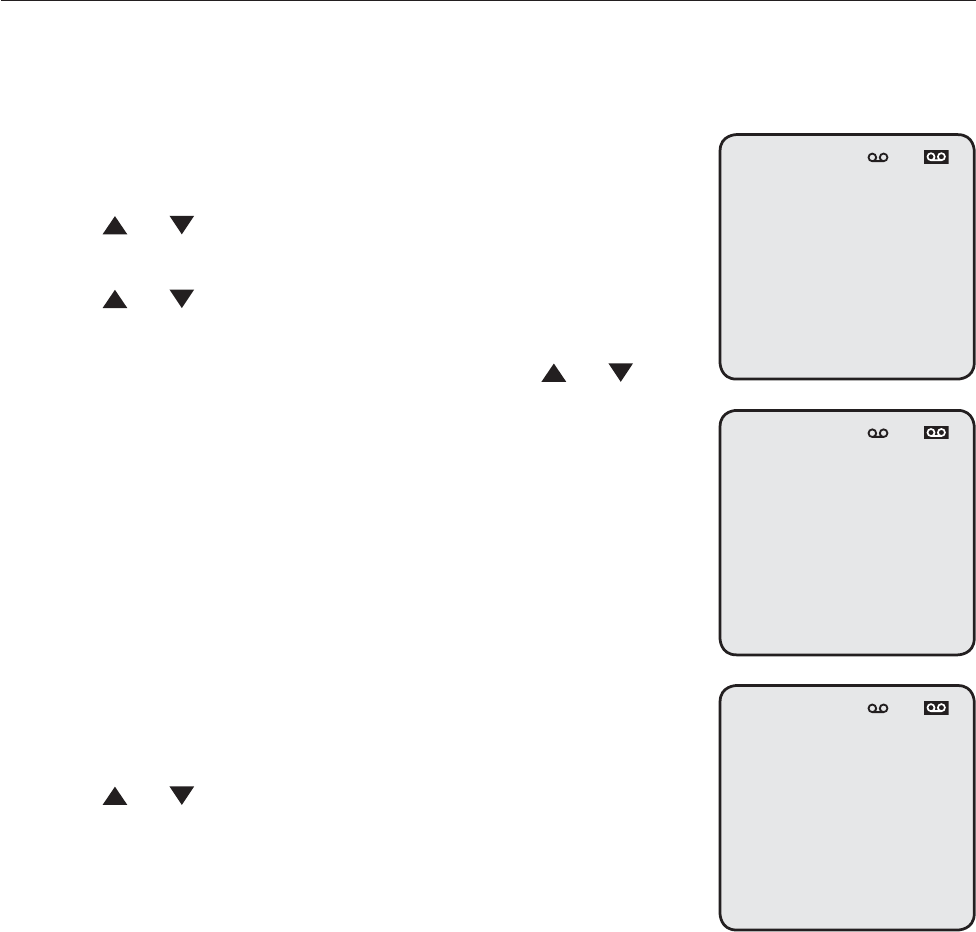
21
Getting started
System setup
Line group
You can set an extension or several extensions to receive incoming calls from
a specific telephone line. Extensions that have not been selected will not ring
when there is an incoming call from that specific line.
When the console is idle, press MENU/SELECT.
Press MENU/SELECT to choose System Setup.
Press or to scroll to Line Group then press
MENU/SELECT.
Press or to choose the desired line and then
press MENU/SELECT.
The screen displays Set Ext to Ring. Press or to
scroll to the desired extension, then press MENU/SELECT.
Repeat this step until all desired extensions are selected.
The extensions marked with a tick will ring when
there is an incoming call from the line chosen in
Step 4.
The extensions not marked with a tick will not
ring when there is an incoming call from the line
chosen in Step 4, unless the caller tries to reach
the extension by entering that specific extension
number while playing the auto attendant
announcement (see Auto attendant on page 65).
Press or scroll to DONE then press
MENU/SELECT to save the setting. There is a
confirmation tone. To exit without making changes,
press CANCEL.
1.
2.
3.
4.
5.
•
•
6.
System Setup
Set Ext No.
Unassign Ext No.
Prime Line
>Line Group
Set Line Mode
Set Master
L1 L2 L3 L4
Line Group
>Line 1
Line 2
Line 3
Line 4
L1 L2 L3 L4
Set Ext to Ring
>Administrat...11 9
Engineering 12 9
Marketing 13 9
Shipping 14
Accounting 15
Done
L1 L2 L3 L4
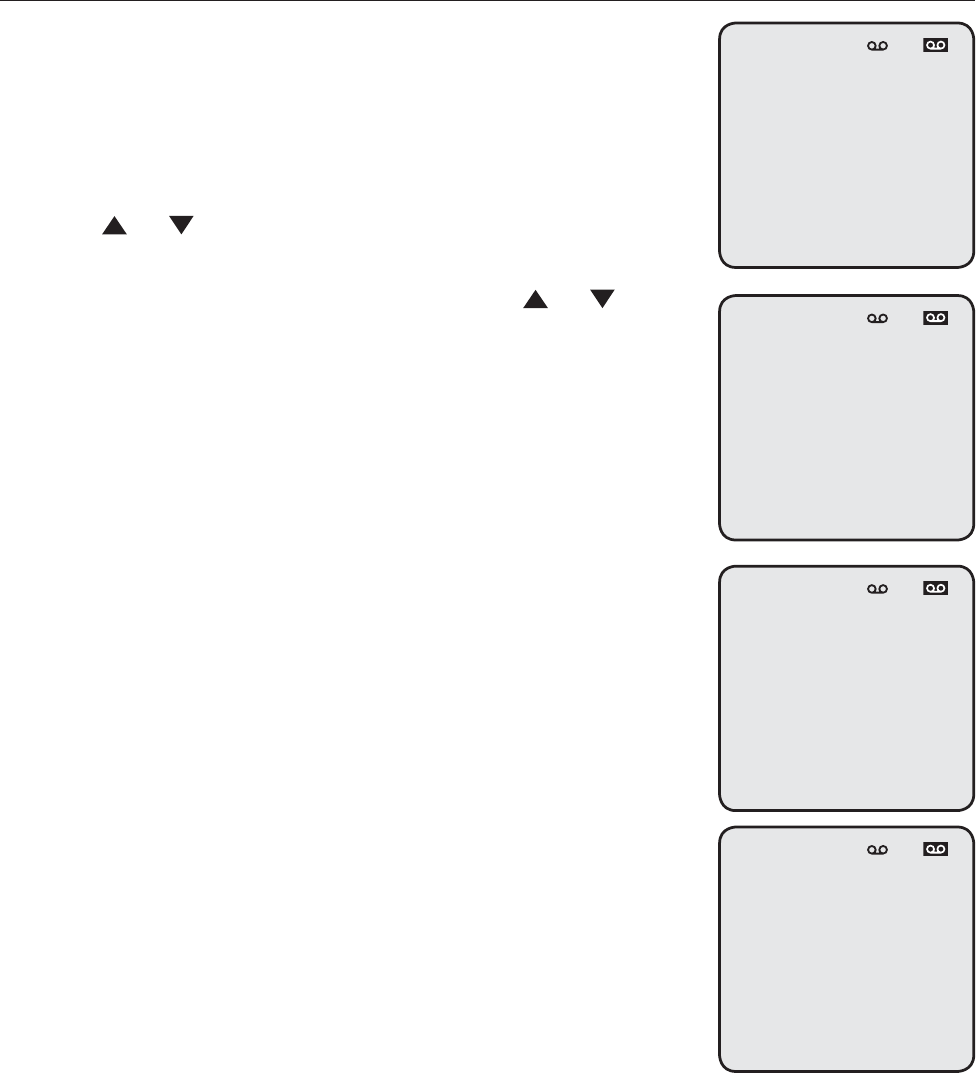
22
Getting started
System setup
Set master
This telephone serves as a main console by default. You
can change it to function as a deskset by following the
steps below.
When the console is idle, press MENU/SELECT.
Press MENU/SELECT to choose System Setup.
Press or to scroll to Set Master then press
MENU/SELECT.
The screen displays Set Phone As. Press or to
scroll to Master Console or Deskset.
Press MENU/SELECT to save the setting. There is a
confirmation tone. To exit without making changes,
press CANCEL.
If you choose Master Console, the screen displays
System desksets can link to this phone. Please
connect PSTN lines to phone jacks. Then returns
to previous menu.
If you choose Deskset, the screen displays This
phone can link to a master console. Please
do NOT connect ant PSTN lines to phone jack.
Refer to Adding and registering desksets on
page 12 for instructions on registering this phone
to a MS2085 console.
1.
2.
3.
4.
5.
•
•
System Setup
Set Ext No.
Unassign Ext No.
Prime Line
Line Group
Set Line Mode
>Set Master
L1 L2 L3 L4
Set Phone As
>Master Console
Deskset
L1 L2 L3 L4
System desksets
can link to
this phone.
Please connect
PSTN lines to
phone jacks.
L1 L2 L3 L4
This phone can
link to a
master console.
Please do NOT
connect ant PSTN
lines to
phone jack.
L1 L2 L3 L4
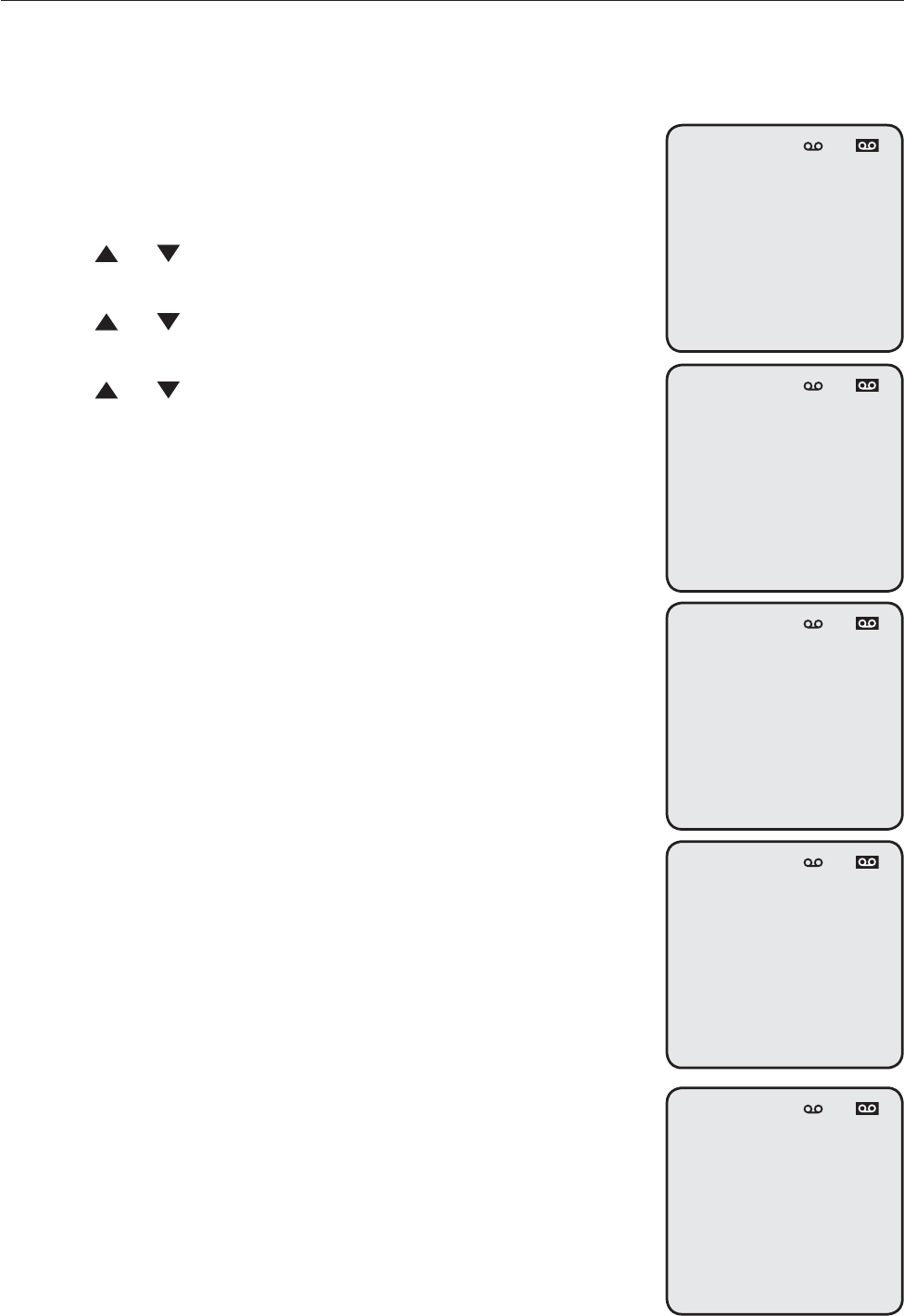
23
Getting started
System setup
Network setup
The main console must have an IP address locating its connection with the
router/SIP server. You can set the console to obtain IP from a DHCP server
or assign a specific IP on your own.
To enable the Auto set IP:
When the console is idle, press MENU/SELECT.
Press MENU/SELECT to choose System Setup.
Press or to scroll to Network Setup then press
MENU/SELECT.
Press or to scroll to Auto set IP then press
MENU/SELECT.
Press or to scroll to Yes then press MENU/SELECT.
The screen displays Obtain IP from DHCP server?
Press MENU/SELECT to save the setting. There is a
confirmation tone.
The screen displays Obtaining IP from DHCP server
Please wait... The process takes up to one minute.
There is a confirmation tone when the IP is
successfully assigned. The screen displays
IP obtained: XXX.XXX.X.X Check network info?
Press MENU/SELECT to read the network info, or press
CANCEL to return to the main menu.
If the IP did not successfully retrieved, the screen
displays Unable to obtain IP. Please check DHCP
server. briefly, and then Set static IP to this
extension? You may press MENU/SELECT to enter
the Static IP setting.
1.
2.
3.
4.
5.
6.
7.
8.
•
System Setup
Unassign Ext No.
Prime Line
Line Group
Set Line Mode
Set Master
>Network setup
L1 L2 L3 L4
Network setup
>Auto set IP
Set static IP
L1 L2 L3 L4
Auto Set IP
>Yes
No
L1 L2 L3 L4
Obtain IP from
DHCP server?
L1 L2 L3 L4
IP obtained:
192.168.1.3
Check
network info?
L1 L2 L3 L4
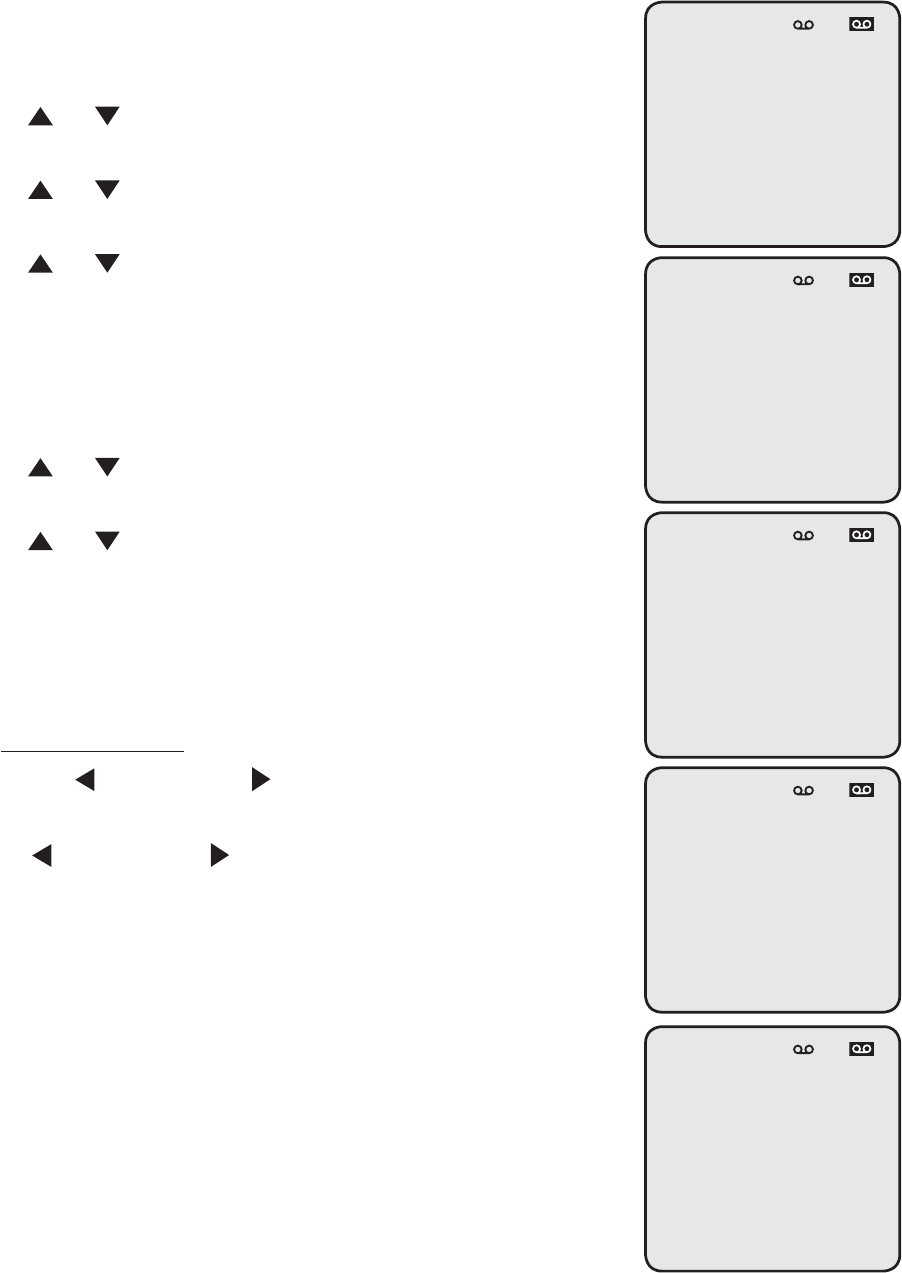
24
Getting started
System setup
If you want to switch from Auto set IP to Set static IP, you have to change disable
the auto IP setting first.
To disable the Auto set IP:
When the console is idle, press MENU/SELECT.
Press MENU/SELECT to choose System Setup.
Press or to scroll to Network Setup. Press
MENU/SELECT.
Press or to scroll to Auto set IP. Then press
MENU/SELECT.
Press or to scroll to No. Press
MENU/SELECT. The main console
To enable the Static IP:
When the console is idle, press MENU/SELECT.
Press MENU/SELECT to choose System Setup.
Press or to scroll to Network Setup. Press
MENU/SELECT.
Press or to scroll to Static IP. Then press
MENU/SELECT.
The screen displays Enter static IP.
Use the dialing keys to enter a specific IP.
Press DELETE to delete a character.
Press and hold DELETE to delete all characters.
Press /REPEAT or /SKIP to choose Add dot,
then press MENU/SELECT to add a dot.to add a dot..
Press /REPEAT or /SKIP to choose Done, then
press MENU/SELECT.
There is a confirmation tone when a valid IP is
entered. The screen displays IP obtained:
XXX.XXX.X.X Check network info? Press
MENU/SELECT to read the network info, or press
CANCEL to return to the main menu.
If the IP entered is invalid, the screen displays IP is
invalid. briefly and then returns to the
Enter static IP screen.
1.
2.
3.
4.
5.
1.
2.
3.
4.
5.
6.
•
•
•
7.
•
Network setup
>Auto set IP
Set static IP
L1 L2 L3 L4
Auto Set IP
Yes
>No
L1 L2 L3 L4
DHCP disabled.
Please set static
IP to this
extension now
L1 L2 L3 L4
Enter static IP
192.168.1._
L1 L2 L3 L4
Network setup
Auto set IP
>Set static IP
L1 L2 L3 L4
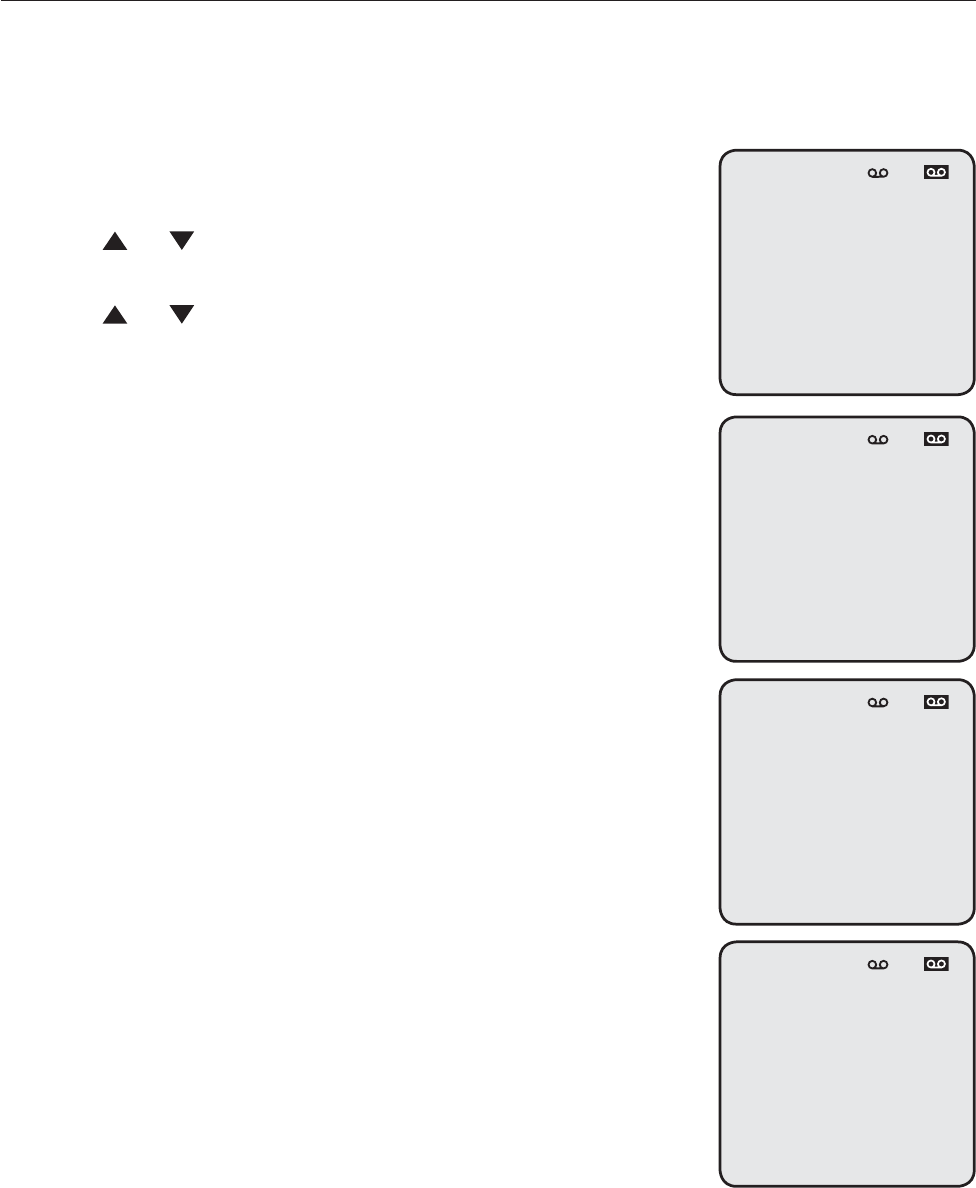
25
Getting started
System setup
Network info
Use this feature to view the information of IP address, subnet mask, router/
gateway, DNS servers, DHCP server of the telephone system.
To check the network information:
When the console is idle, press MENU/SELECT.
Press MENU/SELECT to choose System Setup.
Press or to scroll to Network Info. Press
MENU/SELECT.
Press or to browse through the
network information.
1.
2.
3.
4.
System Setup
Prime Line
Line Group
Set Line Mode
Set Master
Network setup
>Network Info
L1 L2 L3 L4
Network Info
IP address:
192.168.1.3
Subnet mask:
255.255.255.0
Router/Gateway:
192.168.1.1
L1 L2 L3 L4
Network Info
DNS servers:
61.10.128.1
213.180.10.1
DHCP enabled:
Yes
DHCP server:
L1 L2 L3 L4
Network Info
DHCP enabled:
Yes
DHCP server:
192.168.1.1
IP lease date:
08/22 12:50 AM
L1 L2 L3 L4
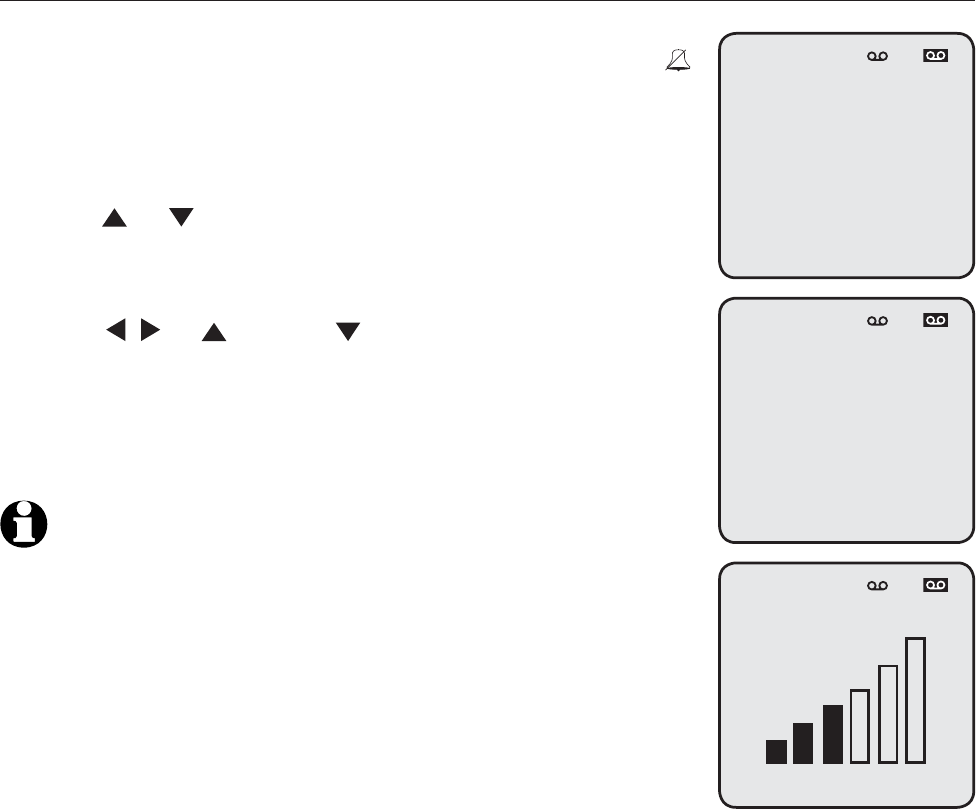
26
Telephone settings
Telephone setup
Ringer volume
Use this feature to set the ringer volume to one of six
levels or turn the ringer off. When the ringer is off, the
icon appears on the console screen. The MS2085 console
stores the volume setting for all lines.
When the console is idle, press MENU/SELECT.
Press or to scroll to Ringers then press
MENU/SELECT.
Press MENU/SELECT again to select Ringer volume.
Press , ,or VOLUME on the console to adjust
the ringer volume.
Press MENU/SELECT to save the setting and return to
the previous menu. There is a confirmation tone. To
exit without making changes, press CANCEL.
NOTE: The ringer volume also determines the ringer volume for
intercom calls (page 51). If the console ringer volume is set to
off, that console is silenced for all incoming calls, including
intercom calls.
1.
2.
3.
4.
5.
Ringer Volume
L1 L2 L3 L4
System Setup
>Ringers
Set Date/time
One Touch
Phone Settings
Registration
Customer Support
L1 L2 L3 L4
Ringers
>Ringer Volume
Ringer Tone
Delay Ring
L1 L2 L3 L4
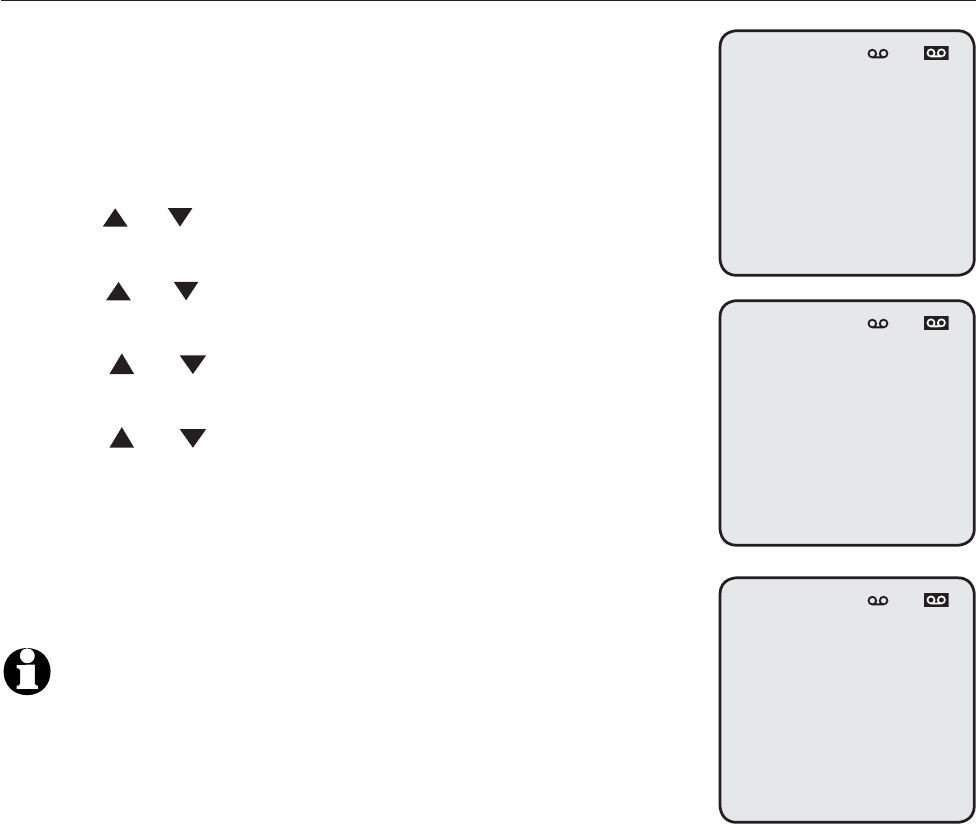
27
Telephone settings
Telephone setup
Ringer tone
Use this feature to choose one of the ten ringer tones
for incoming calls. You can choose different ringer
tones for different lines so you can easily identify which
line is calling.
When the console is idle, press MENU/SELECT.
Press or to scroll to Ringers then press
MENU/SELECT.
Press or to scroll to Ringer tone then press
MENU/SELECT.
Press or to select the desired line
(Line 1, Line 2, Line 3 or Line 4).
Press or to select a desired ringer tone.
Repeat steps 4-5 above to choose ringer tones for
other lines if desired.
Press MENU/SELECT to save the setting and return to
the previous menu. There is a confirmation tone. To
exit without making changes, press CANCEL.
NOTE: If you turn off the ringer volume, you will not hear ringer
tone samples.
1.
2.
3.
4.
5.
6.
7.
Ringers
Ringer Volume
>Ringer Tone
Delay Ring
L1 L2 L3 L4
Ringer Tone
>Tone 1
Tone 2
Tone 3
Tone 4
Tone 5
Tone 6
L1 L2 L3 L4
Ringer Tone
>Line 1
Line 2
Line 3
Line 4
L1 L2 L3 L4
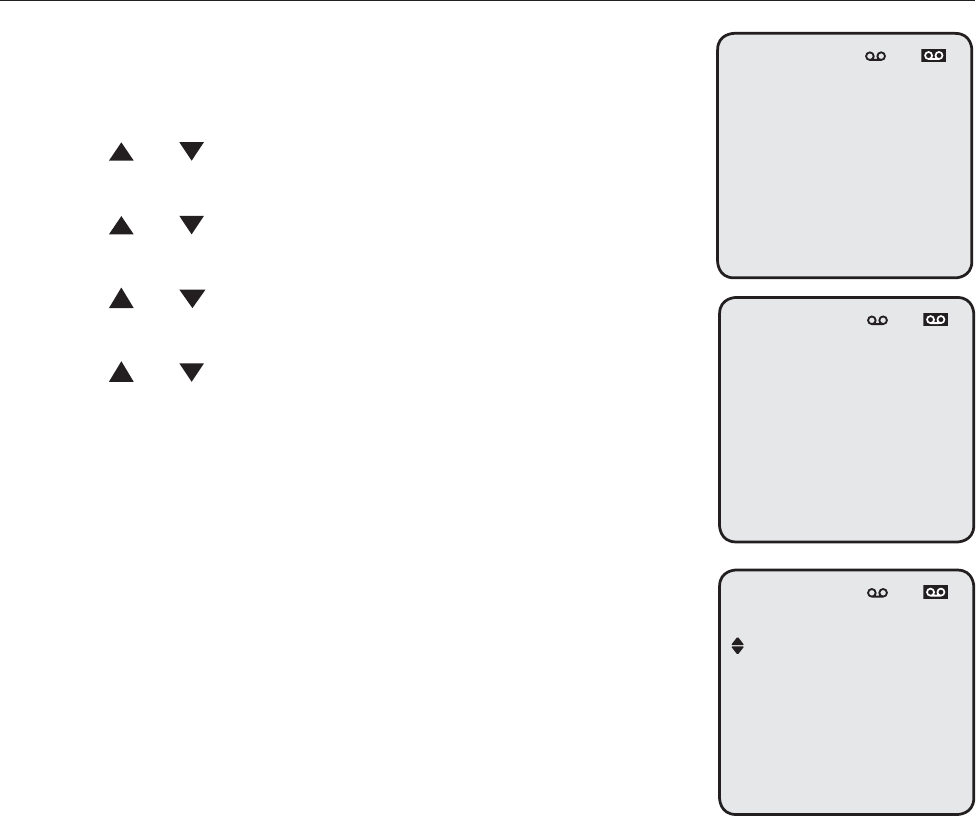
28
Telephone settings
Telephone setup
Delay ring
Use this feature to set the length of time before an
incoming call will ring.
When the console is idle, press MENU/SELECT.
Press or to scroll to Ringers then press
MENU/SELECT.
Press or to scroll to Delay ring then press
MENU/SELECT.
Press or to select a desired line (Line 1, Line 2,
Line 3 or Line 4).
Press or to scroll to the desired time
(2 seconds to 30 seconds).
Press MENU/SELECT to save the setting and return to
the previous menu. There is a confirmation tone. To
exit without making changes, press CANCEL.
1.
2.
3.
4.
5.
6.
Ringers
Ringer Volume
Ringer Tone
>Delay Ring
L1 L2 L3 L4
Delay Ring
>Line 1
Line 2
Line 3
Line 4
L1 L2 L3 L4
Delay Ring
2 seconds
L1 L2 L3 L4
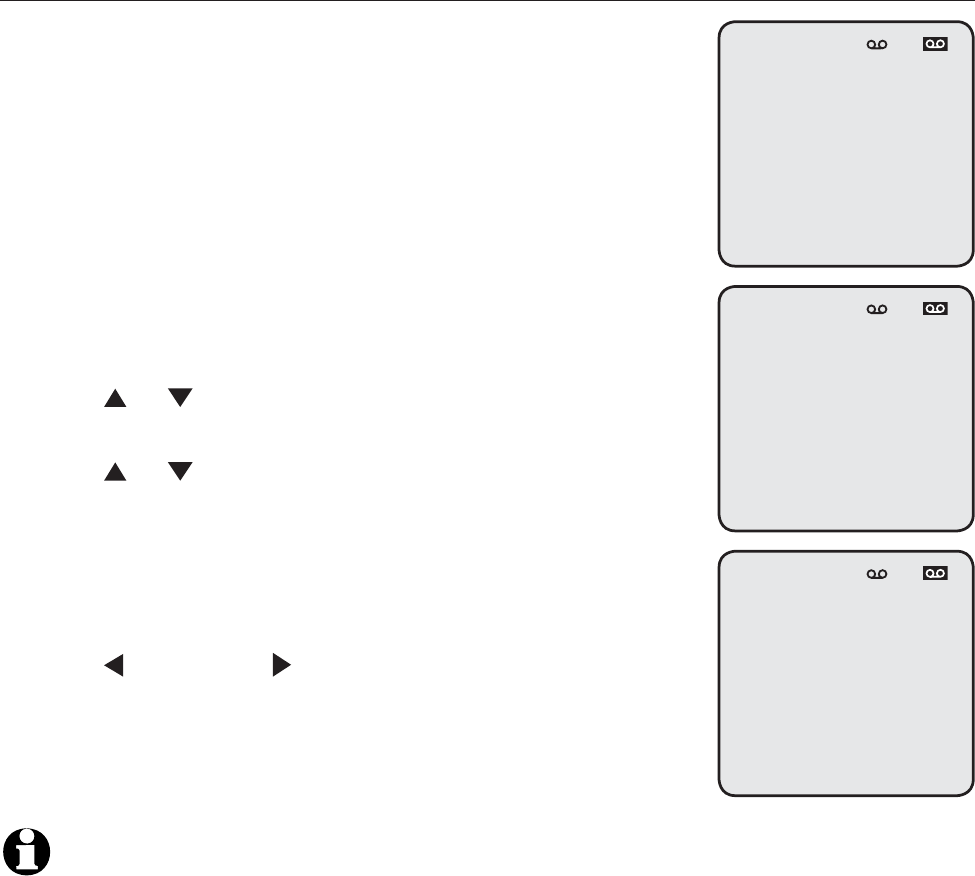
29
Telephone settings
Telephone setup
Set Date/Time
The answering system displays the date and time of
the message while playing messages. Before using the
answering system, set the date and time as follows. If
you subscribe to caller ID service, the day, month and
time are set automatically with each incoming call. The
year must be set so that the day of the week can be
calculated from the caller ID information.
Follow the steps below to set the month, day, year
and time:
When the console is idle, press MENU/SELECT.
Press or to scroll to Set Date/Time then press
MENU/SELECT.
Press or to scroll to Date and time then press
MENU/SELECT.
Use the dialing keys to enter the day, month and year.
Press MENU/SELECT to move to the time editing.
Use the dialing keys to enter the hour and minute.
Press /REPEAT or /SKIP to select AM or PM, or
press 2 for AM or 7 for PM.
Press MENU/SELECT to save the setting and return to
the previous menu. There is a confirmation tone. To exit
without making changes, press CANCEL.
NOTES:
The time is in a 12-hour format. If you set an invalid time, you will hear an error tone after pressing
MENU/SELECT to save the setting.
If the date and time are not set when a message is recorded, the system does not display date and
time on the screen while playing messages.
1.
2.
3.
4.
5.
6.
7.
8.
1.
2.
Set Date
12/ -- /--
MM/DD/YY
L1 L2 L3 L4
System Setup
Ringers
>Set Date/time
One Touch
Phone Settings
Registration
Customer Support
L1 L2 L3 L4
Set Time
--:-- /--
L1 L2 L3 L4
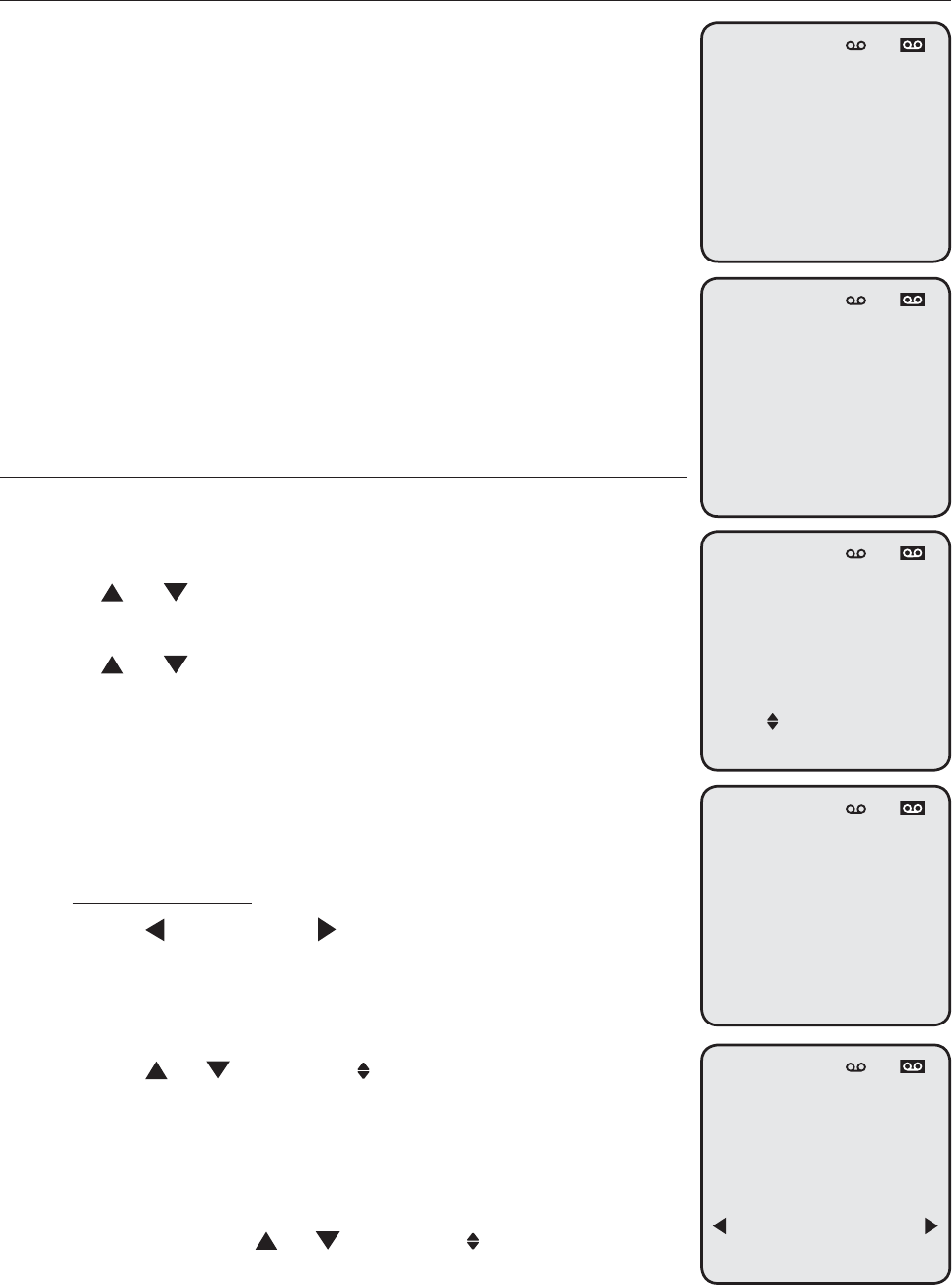
30
Telephone settings
Telephone setup
One Touch
This telephone has 32 one-touch locations (speed dial
locations) where you can store the phone numbers you
wish to dial using fewer keys than usual. You can store
up to 24 digits in each location.
You can access the first 16 locations using only
the one-touch buttons. To access the remaining 16
locations, press LOWER and then the one-touch button
for the desired location. You might wish to write the
names or telephone numbers of the one-touch entries
on the directory card, using the light gray spaces for
the first 16 locations and the white spaces for the
second 16 locations.
Assign a one-touch entry
Use the following steps to program the one-touch keys.
When the console is idle, press MENU/SELECT.
Press or to scroll to One Touch then press
MENU/SELECT.
Press or to scroll to Program then press
MENU/SELECT.
The screen displays Enter Number.
Use the dialing keys to enter a telephone number
(up to 24 digits).
Press DELETE to delete a digit.
Press and hold DELETE to delete all digits.
Press /REPEAT or /SKIP to move the cursor to
the left or right.
You can include a pause while storing a dialing
sequence that requires one during actual dialing.
Press or to choose Add Pause, then press
MENU/SELECT. A P appears on the screen.
Store a signal for switching to temporary
tone signalling. If you have dial pause (rotary)
service, this signal is required for some special
services. Press or to choose Add Tone, then
press MENU/SELECT. A T appears on the screen. All
numbers you enter after this will send touch-tone
signals during dialing.
1.
2.
3.
4.
5.
•
•
•
•
•
System Setup
Ringers
Set Date/time
>One Touch
Phone Settings
Registration
Customer Support
L1 L2 L3 L4
One Touch
View
>Program
L1 L2 L3 L4
Enter Number
_
Select to:
Add Flash
L1 L2 L3 L4
Press a
1-touch key
to save the
number
L1 L2 L3 L4
One Touch #18
18002223111
Edit
L1 L2 L3 L4
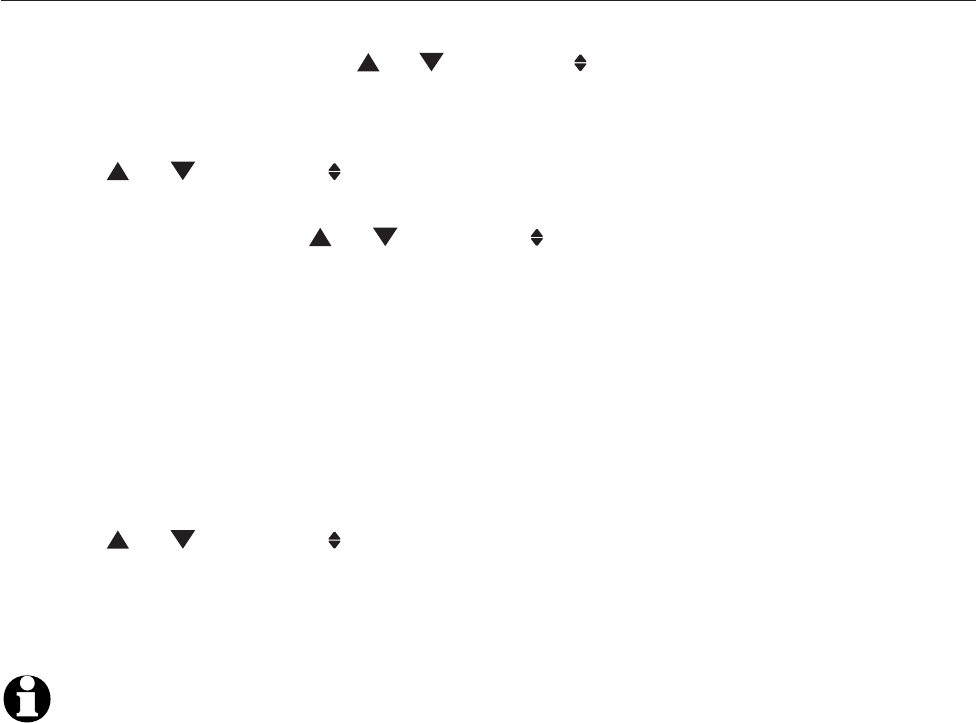
31
Telephone settings
Telephone setup
Assign a one-touch entry (continued)
You can store the flash signal required by some special services as part of a
dialing sequence. Press or to choose Add Flash, then press
MENU/SELECT. A F appears on the screen. Continue storing the number
as usual.
Press or to choose Done then press MENU/SELECT to save the setting
and return to the previous menu. There is a confirmation tone. To exit without
making changes, press or to choose CANCEL then press MENU/SELECT,
or press CANCEL to previous menu.
The screen displays Press a 1-touch key to save the number.
Press the desired one-touch key to store a the telephone number in the
upper location.
-OR-
Press LOWER, then press the desired one-touch key to store the telephone
number in the lower location.
Press or to choose Done, then press MENU/SELECT to save the setting.
The screen displays Number saved to 1-touch key briefly, and then
One Touch #XX (X represents the one-touch location) and the
telephone number.
NOTE: If the one-touch location already has an assigned number, the screen displays
Replace 1-touch key memory? Press MENU/SELECT to replace the old number with the
new one.
•
6.
7.
8.
9.
10.
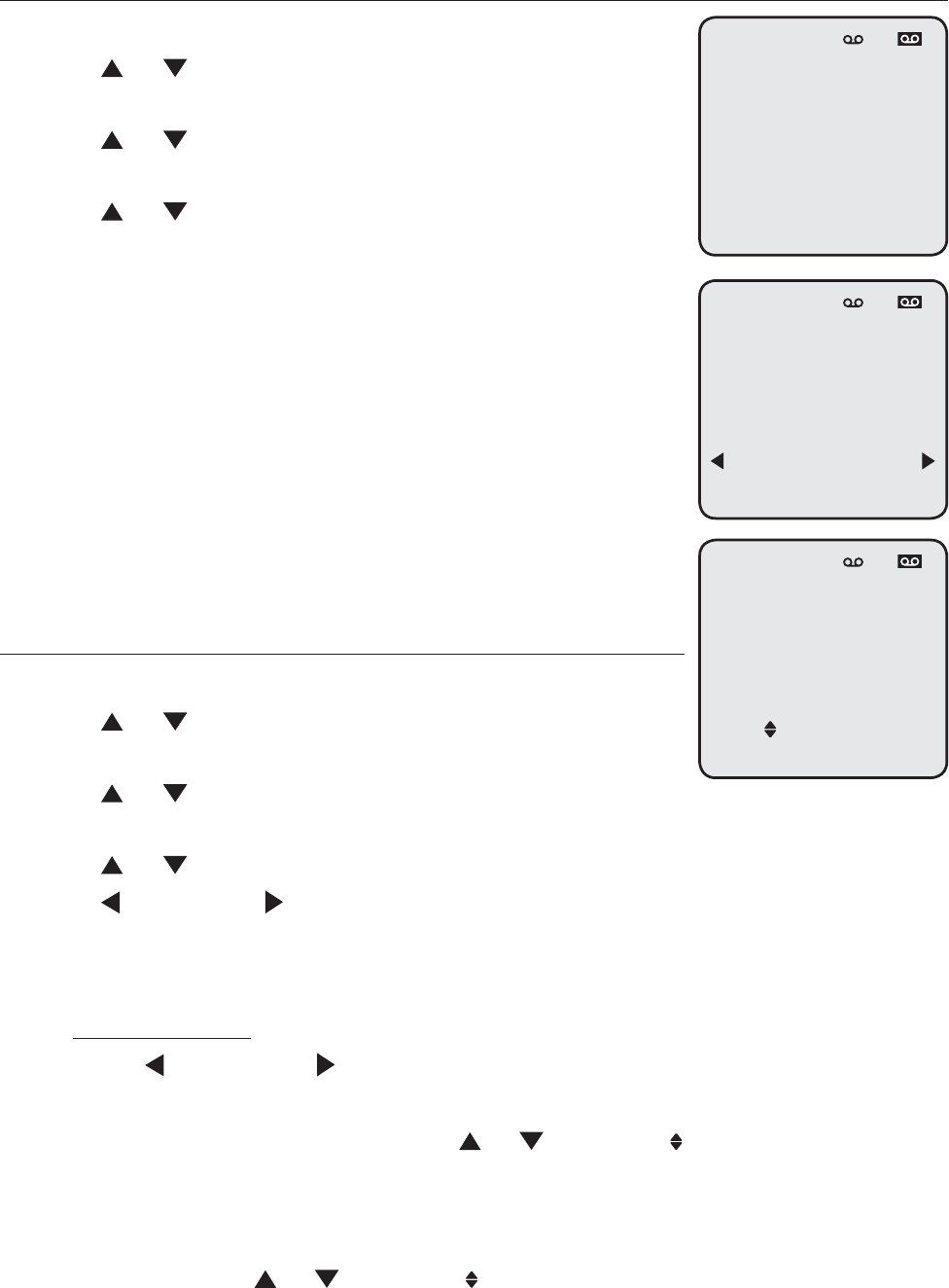
32
Telephone settings
Telephone setup
Review the one-touch entry
When the console is idle, press MENU/SELECT.
Press or to scroll to One Touch then press
MENU/SELECT.
Press or to scroll to View then press
MENU/SELECT.
Press or to scroll to the desired one-touch location.
The screen displays the One-touch location number, the
telephone number.
To dial a one-touch entry
When the console is idle, press the one-touch button
for the destination party in the upper location.
-OR-
When the console is idle, press LOWER, then press
the one-touch button for the destination party in the
lower location.
Lift the handset or press SPEAKER to dial the call.
Edit the one-touch key:
When the console is idle, press MENU/SELECT.
Press or to scroll to One Touch. then press
MENU/SELECT.
Press or to scroll to View then press
MENU/SELECT.
Press or to scroll to the desired one-touch location.
Press /REPEAT or /SKIP to scroll to Edit, then press MENU/SELECT.
The screen displays Edit Number. Use the dialing keys to edit the number.
Press DELETE to delete a digit.
Press and hold DELETE to delete all digits.
Press /REPEAT or /SKIP to move the cursor to the left or right.
You can include a pause while storing a dialing sequence that requires
one during actual dialing. Press or to choose Add Tone, then press
MENU/SELECT. A P appears on the screen.
Store a signal for switching to temporary tone signalling. If you
have dial pause (rotary) service, this signal is required for some special
services. Press or to choose Add Tone, then press MENU/SELECT.
A T appears on the screen. All numbers you enter after this will send
touch-tone signals during dialing.
1.
2.
3.
4.
1.
2.
1.
2.
3.
4.
5.
6.
•
•
•
•
•
One Touch
>View
Program
L1 L2 L3 L4
One Touch #18
18002223111
Edit
L1 L2 L3 L4
Edit Number
_
Select to:
Add Flash
L1 L2 L3 L4
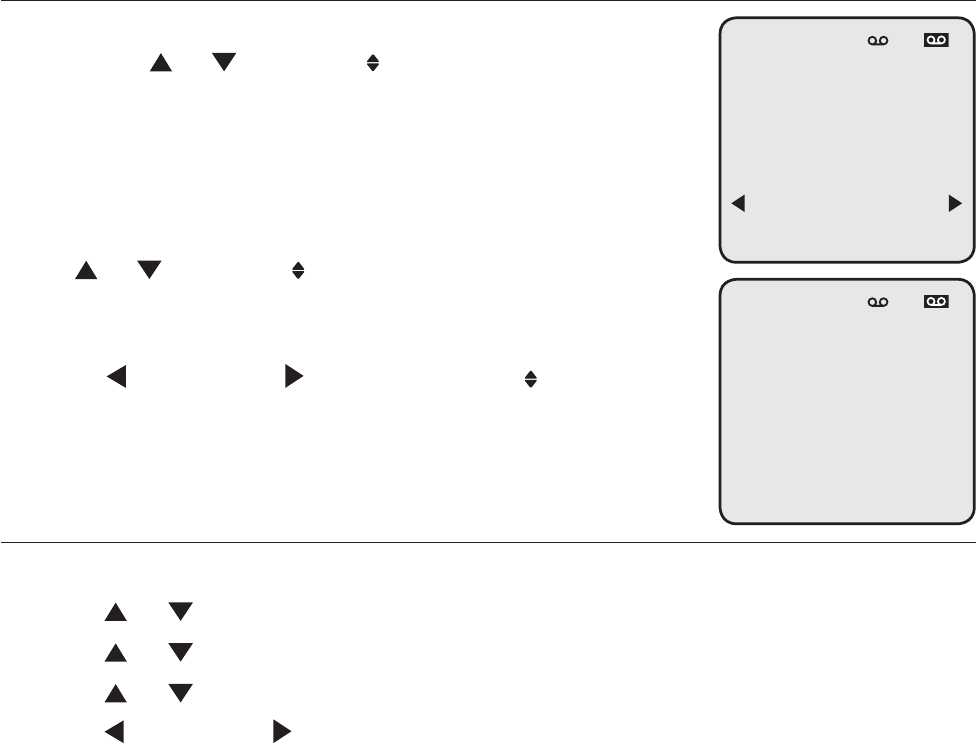
33
Telephone settings
Telephone setup
Edit the one-touch key (continued)
Store a signal for switch to temporary tone dialing.
Press or to choose Add Tone, then press
MENU/SELECT. A T appears on the screen.
All numbers you enter after this will send touch-tone
signals during dialing.
You can store the flash signal required by some
special services as part of a dialing sequence. Press
or to choose Add Flash, then press
MENU/SELECT. A F appears on the screen. Continue
storing the number as usual.
Press /REPEAT or /SKIP toto scroll to Done then
press MENU/SELECT to save the setting and return to the
previous menu. There is a confirmation tone.
Delete an one-touch key:
When the console is idle, press MENU/SELECT.
Press or to scroll to One Touch then press MENU/SELECT.
Press or to scroll to View then press MENU/SELECT.
Press or to scroll to the desired one-touch location.
Press /REPEAT or /SKIP to scroll to Delete, then press Delete memory?
Press MENU/SELECT to confirm. There is a confirmation tone. To exit without
making changes, press CANCEL.
•
•
7.
1.
2.
3.
4.
5.
6.
One Touch #18
18002223111
Delete
L1 L2 L3 L4
Press a
1-touch key
to save the
number
L1 L2 L3 L4
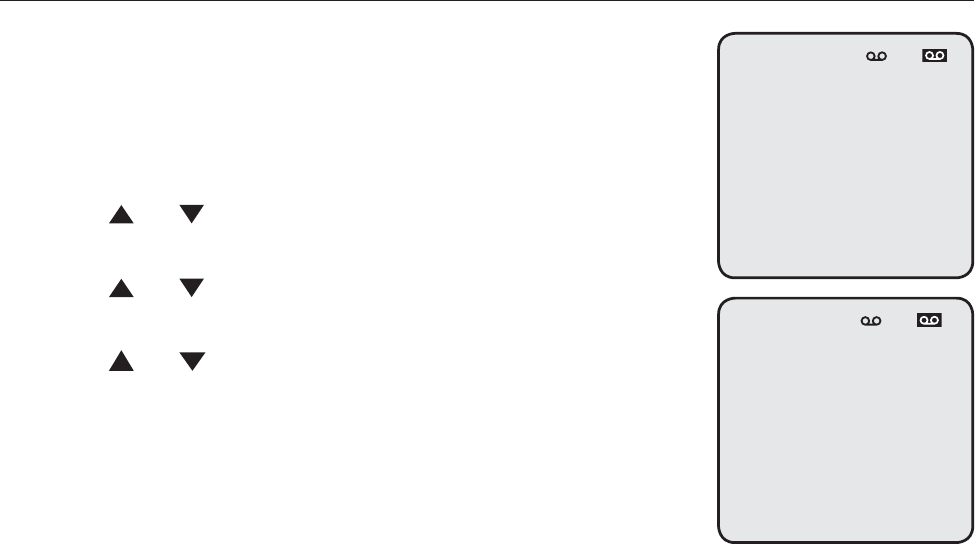
34
Telephone settings
Telephone setup
LCD Language
This feature allows you to change the language used for
all screen displays. The language settings on the main
console and desksets are independent. By default, the
language is set to English.
When the console is idle, press MENU/SELECT.
Press or to scroll to Phone Settings then press
MENU/SELECT.
Press or to scroll to LCD Language then press
MENU/SELECT.
Press or to select English,Français or Español.
Press MENU/SELECT again to save the setting and
return to the previous menu. There is a confirmation
tone. To exit without making changes, press CANCEL.
1.
2.
3.
4.
5.
System Setup
Ringers
Set Date/time
One Touch
>Phone Settings
Registration
Customer Support
L1 L2 L3 L4
LCD Language
>English
Francais
Espanol
L1 L2 L3 L4
,
~
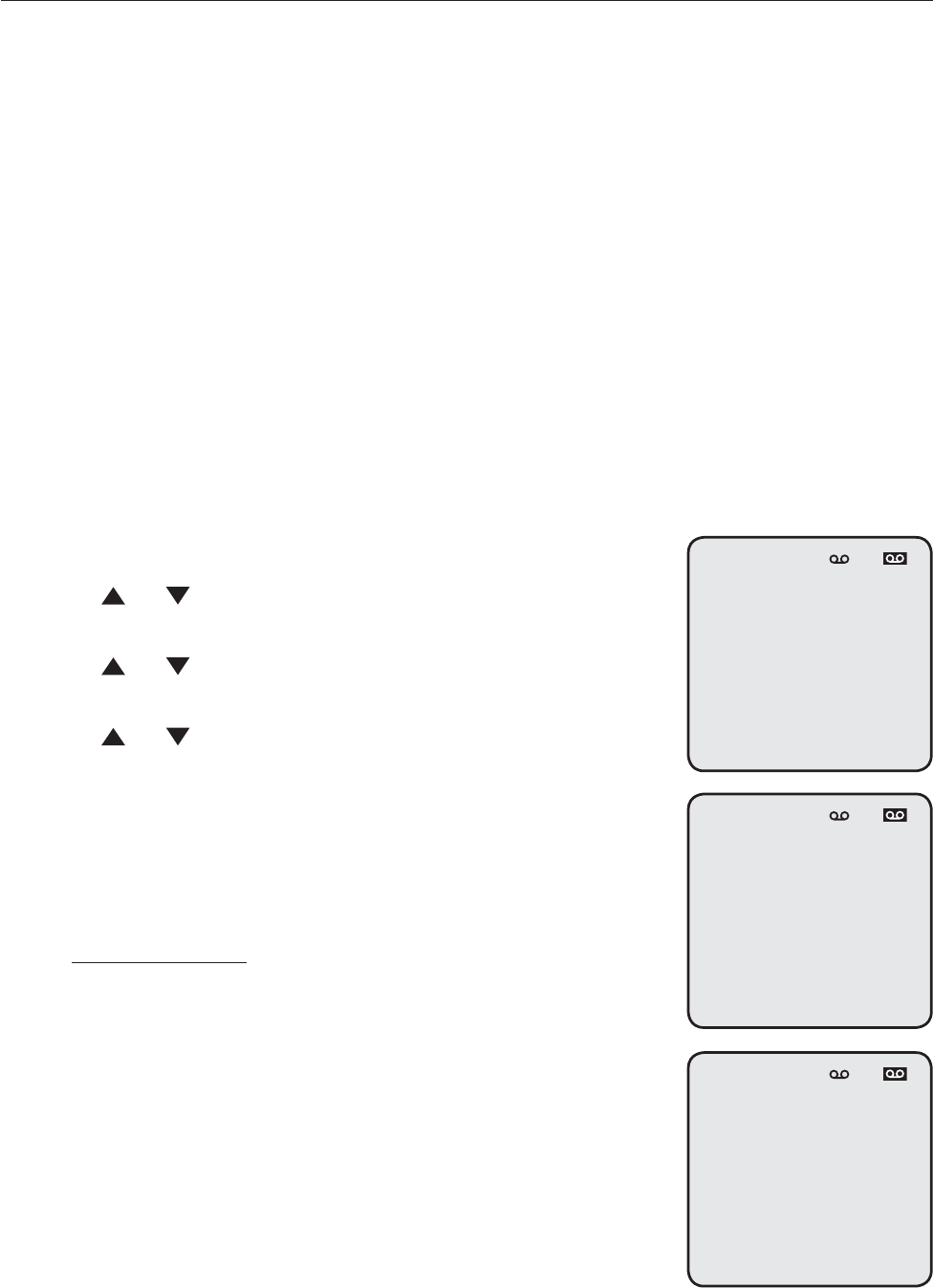
35
Telephone settings
Telephone setup
Area codes
Use this feature to program this system to recognize one home area code
and up to four local area codes. This feature makes it easy for you to place a
call from the caller ID log.
If you dial seven digits to make a local call (no area code required), enter
your area code into the telephone as the home area code. When you receive
a call from within your home area code, the caller ID information only
displays the seven digits of the telephone number, and when you dial from
the call log, only seven digits are dialed.
If you must dial 10 digits (the area code and telephone number) for local
calls, enter 000 for the home area code and enter your area code as a local
area code. Then, if you receive a call from within your area code, the screen
displays all 10 digits of the telephone number, and when you dial from the
call log, all 10 digits are dialed.
If you have more than one area code for your region, enter those area codes
as local area codes.
When the console is idle, press MENU/SELECT.
Press or to scroll to Phone Settings then press
MENU/SELECT.
Press or to scroll to Area Codes then press
MENU/SELECT.
Press or to scroll to Home area code or
Local area code 1 - Local area code 5. Press
MENU/SELECT to edit it.
Use the dial pad keys to enter a three-digit area
code.
Press DELETE to delete a digit.
Press and hold DELETE to delete all digits.
Press MENU/SELECT to save the setting and return to
the previous menu. There is a confirmation tone. To exit
without making changes, press CANCEL.
1.
2.
3.
4.
5.
•
•
6.
Phone Settings
LCD Language
>Area Codes
Key Tone
LCD Contrast
Tone/Pulse
AUTO-MUTE
L1 L2 L3 L4
Area Codes
>Home area code
Local area code1
Local area code2
Local area code3
Local area code4
Local area code5
L1 L2 L3 L4
Home Area Code
_
L1 L2 L3 L4
Telephone settings
Telephone setup
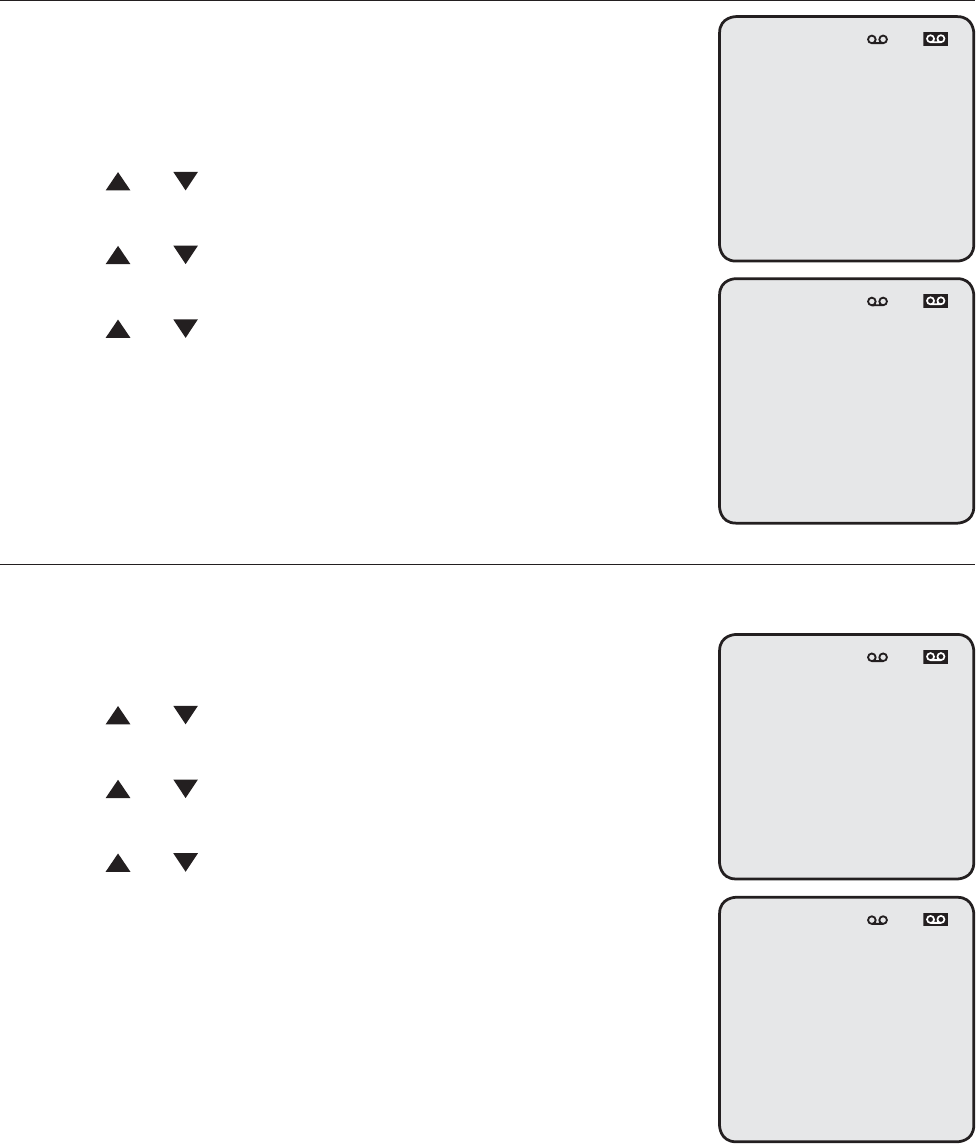
36
Telephone settings
Telephone setup
Key Tone
The console is set to beep with each key press. If you
turn off the key tone, there are no beeps when you
press keys.
When the console is idle, press MENU/SELECT.
Press or to scroll to Phone Settings then press
MENU/SELECT.
Press or to scroll to Key Tone then press
MENU/SELECT.
Press or to choose On or Off.
Press MENU/SELECT to save the setting and return to
the previous menu. There is a confirmation tone. To exit
without making changes, press CANCEL.
LCD contrast
Use this feature to adjust the screen contrast to one of eight levels to
optimize readability in different lighting conditions.
When the console is idle, press MENU/SELECT.
Press or to scroll to Phone Settings then press
MENU/SELECT.
Press or to scroll to LCD Contrast then press
MENU/SELECT.
Press or to choose the desired screen contrast
level (Level 1 - Level 8).
Press MENU/SELECT to save the setting and return to
the previous menu. There is a confirmation tone. To exit
without making changes, press CANCEL.
1.
2.
3.
4.
5.
1.
2.
3.
4.
5.
Phone Settings
LCD Language
Area Codes
>Key Tone
LCD Contrast
Tone/Pulse
AUTO-MUTE
L1 L2 L3 L4
Key Tone
>On
Off
L1 L2 L3 L4
Phone Settings
LCD Language
Area Codes
Key Tone
>LCD Contrast
Tone/Pulse
AUTO-MUTE
L1 L2 L3 L4
LCD Contrast
>Level 1
Level 2
Level 3
Level 4
Level 5
Level 6
L1 L2 L3 L4
Telephone settings
Telephone setup
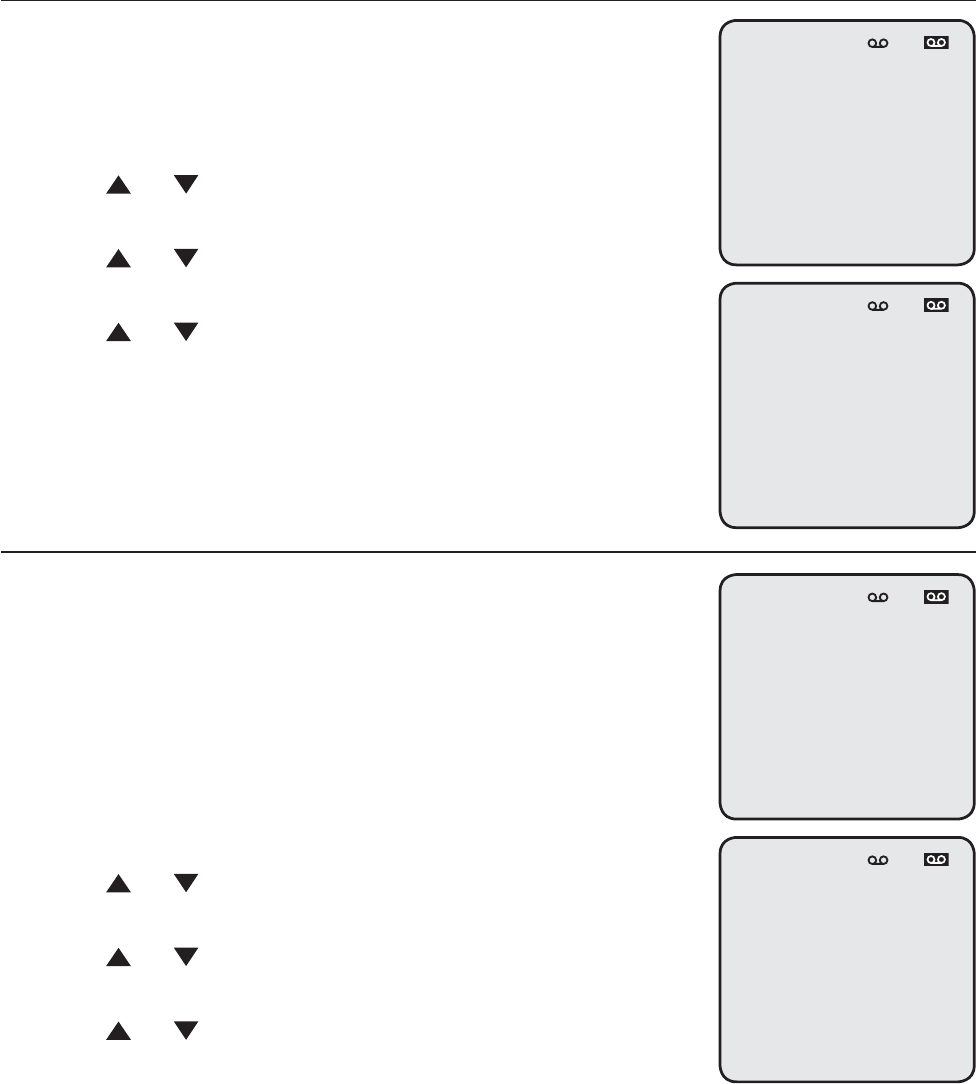
37
Telephone settings
Telephone setup
Dial mode
The dial mode is preset to tone dialing. If you have
pulse (rotary) service, you must change the dial mode
to pulse dialing before using the telephone.
When the console is idle, press MENU/SELECT.
Press or to scroll to Phone Settings then press
MENU/SELECT.
Press or to scroll to Tone/Pulse then press
MENU/SELECT.
Press or to choose Tone or Pulse.
Press MENU/SELECT to save the setting and return to
the previous menu. There is a confirmation tone. To exit
without making changes, press CANCEL.
AUTO-MUTE
Use this feature to choose whether a page will
broadcast on your console when you receive a page.
If you set AUTO-MUTE to Off, you can hear on the
console when you receive a page. If you set
AUTO-MUTE to On, the MUTE light turns on, and a
page is muted when you receive a page, unless you
press MUTE to unmute the page.
When the console is idle, press MENU/SELECT.
Press or to scroll to Phone Settings then press
MENU/SELECT.
Press or to scroll to AUTO-MUTE then press
MENU/SELECT.
Press or to choose On or Off.
Press MENU/SELECT to save the setting and return to
the previous menu. There is a confirmation tone. To exit
without making changes, press CANCEL.
1.
2.
3.
4.
5.
1.
2.
3.
4.
5.
Phone Settings
LCD Language
Area Codes
Key Tone
LCD Contrast
>Tone/Pulse
AUTO-MUTE
L1 L2 L3 L4
Tone/Pulse
>Tone
Pulse
L1 L2 L3 L4
Phone Settings
LCD Language
Area Codes
Key Tone
LCD Contrast
Tone/Pulse
>AUTO-MUTE
L1 L2 L3 L4
AUTO-MUTE
>On
Off
L1 L2 L3 L4
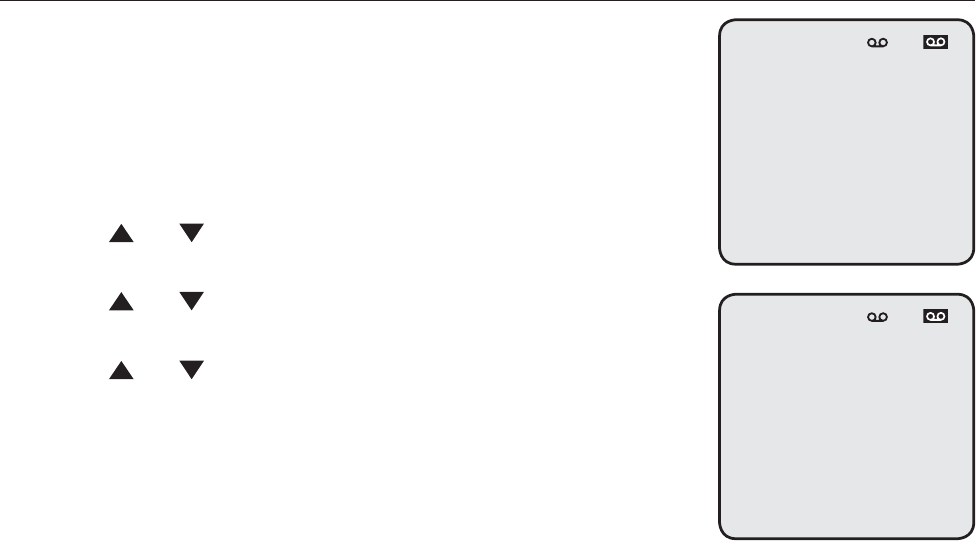
38
Telephone settings
Telephone setup
Hold reminder
When this feature is on and there is a call on hold for
more than three minutes, the console beeps once every
30 seconds.
To turn this feature on or off:
When the console is idle, press MENU/SELECT.
Press or to scroll to Phone Settings then press
MENU/SELECT.
Press or to scroll to Hold reminder then press
MENU/SELECT.
Press or to scroll to On or Off.
Press MENU/SELECT to save the setting and return to
the previous menu. There is a confirmation tone. To
exit without making changes, press CANCEL.
1.
2.
3.
4.
5.
Phone Settings
Area Codes
Key Tone
LCD Contrast
Tone/Pulse
AUTO-MUTE
>Hold Reminder
L1 L2 L3 L4
Hold Reminder
>On
Off
L1 L2 L3 L4
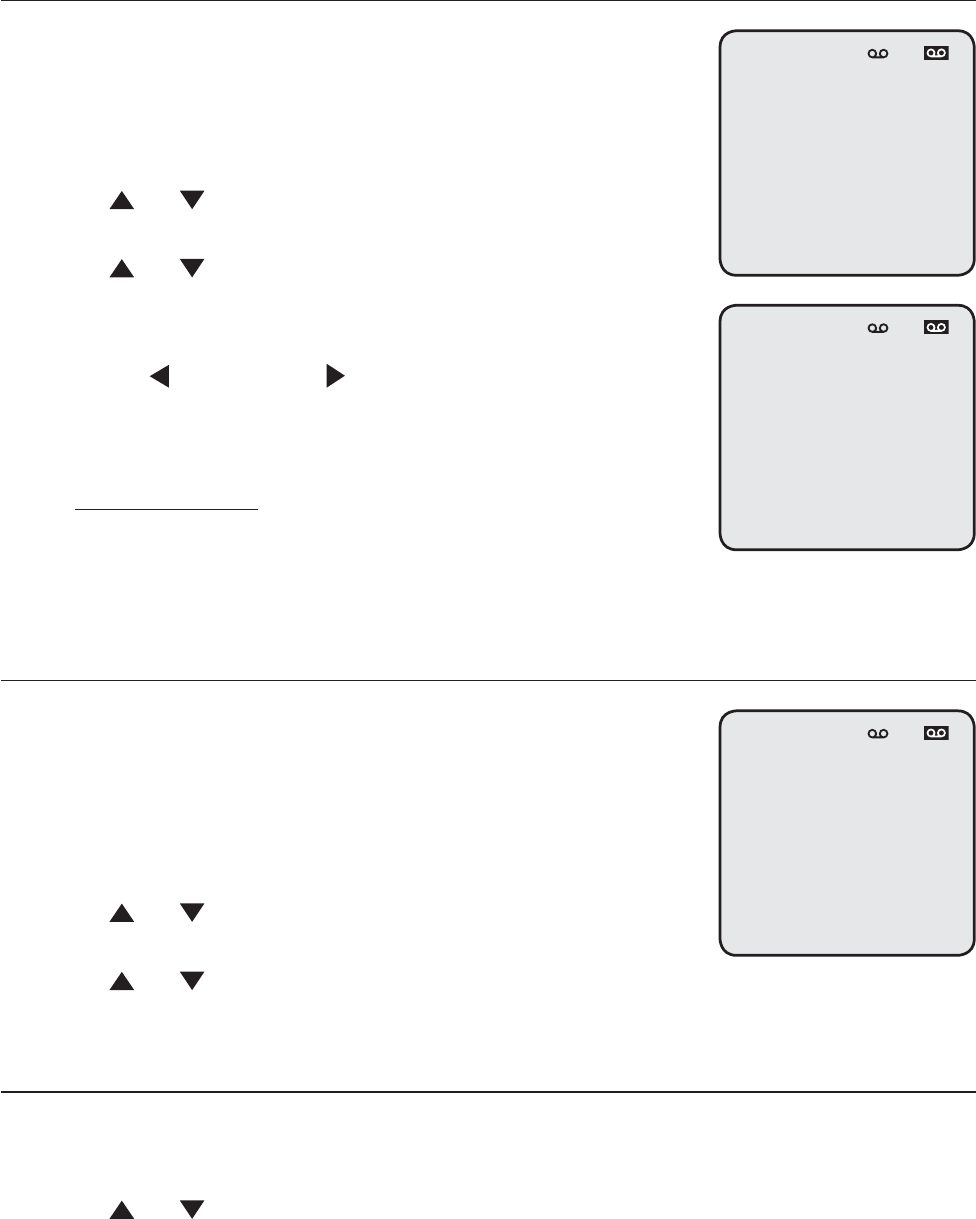
39
Telephone settings
Telephone setup
Phone rename
Use this feature to rename the console (up to
12 characters).
To change the setting:
When the console is idle, press MENU/SELECT.
Press or to scroll to Phone Settings then press
MENU/SELECT.
Press or to scroll to Phone Rename then press
MENU/SELECT.
Use the dialing key keys to change the name.
Press /REPEAT or /SKIP to move the cursor
left or right.
Press DELETE to delete a character.
Press and hold DELETE to delete all characters.
Press MENU/SELECT to save the setting and return to
the previous menu. There is a confirmation tone. To
exit without making changes, press CANCEL.
Set default
Use this feature to reset all feature settings for this
Console to their default settings. The messages stored
in the mailbox will not be reset.
To reset all feature settings to default:
When the console is idle, press MENU/SELECT.
Press or to scroll to Phone Settings then press
MENU/SELECT.
Press or to scroll to Set Default.
Press MENU/SELECT. There is a confirmation tone.
Customer support
Use this feature to display the AT&T website.
When the console is idle, press MENU/SELECT.
Press or to scroll to Customer Support then press MENU/SELECT.
Press CANCEL to return to the previous menu.
1.
2.
3.
4.
•
•
•
5.
1.
2.
3.
4.
1.
2.
3.
Phone Settings
LCD Contrast
Tone/Pulse
AUTO-MUTE
Hold Reminder
Voice Announce
>Phone Rename
L1 L2 L3 L4
Phone Rename
Console_
L1 L2 L3 L4
Phone Settings
Tone/Pulse
AUTO-MUTE
Hold Reminder
Voice Announce
Phone Rename
>Set Default
L1 L2 L3 L4
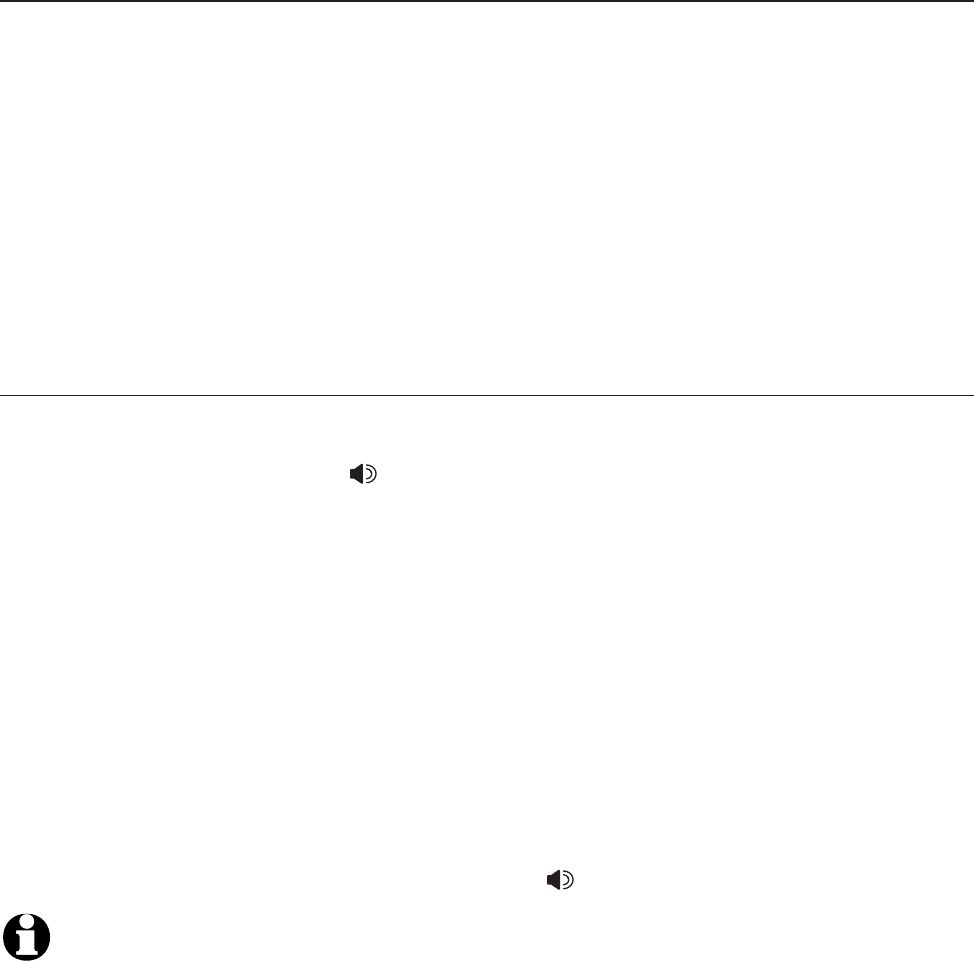
40
Telephone operation
Telephone basic operation
The telephone comes programmed to use line 1 (default primary line)
for calls when you do not press a line key. When you answer a call, the
telephone automatically selects the ringing line.
Line indicators
Each of the four indicators on LINE 1-LINE 4 indicate the state of the
corresponding telephone line.
On when the corresponding line is in use.
Flashes slowly when the line is on hold.
Flashes slowly when there is an incoming auto attendant answering or
transferring call on the corresponding line.
Flashes rapidly when there is an incoming call or a transferring call on the
corresponding line.
Making a call
To make a call from the console:
Lift the handset or press SPEAKER.
-OR-
To override automatic line selection, press LINE 1-LINE 4 for the desired
line, then lift the handset.
2. Wait for a dial tone, then enter the telephone number. The screen displays
the elapsed time as you talk (in hours, minutes and seconds).
To end a call from the console:
Place the handset on the console to hang up.
-OR-
If you are using the speakerphone, press SPEAKER to hang up.
NOTE: The elapsed time is not affected by accessing services from your telephone service provider.
•
•
•
•
1.
•
•
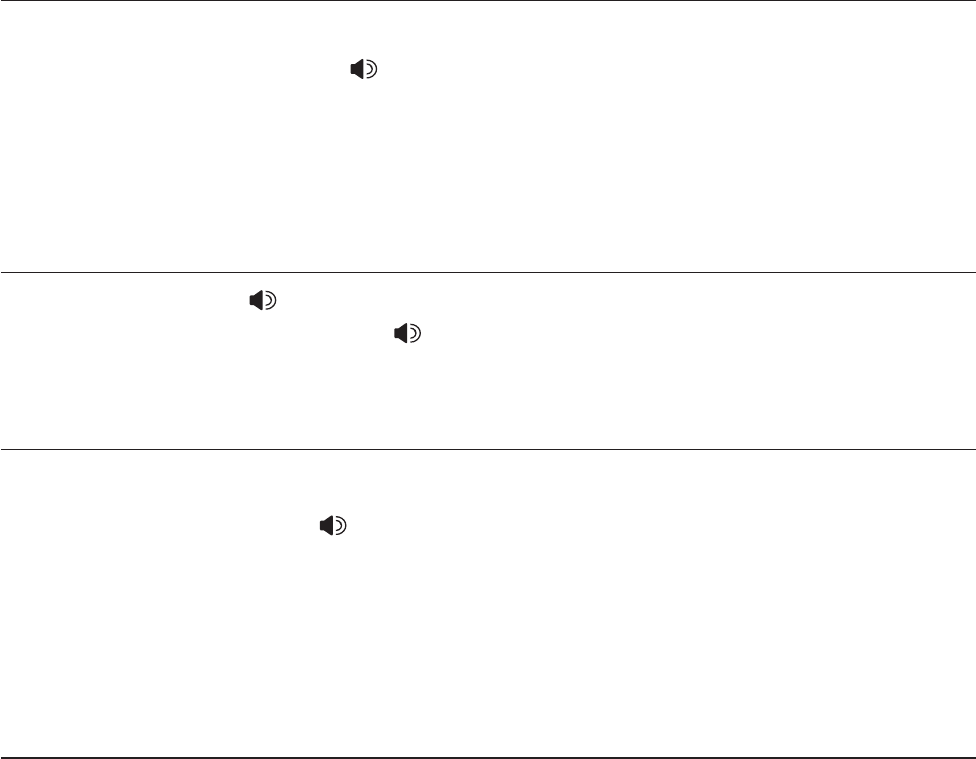
41
Telephone operation
Telephone basic operation
To make a call with a corded headset:
Make sure a corded headset is connected to the console (page 16).
Press HEADSET on the console.
Wait for a dial tone, then dial the number.
To hang up, press HEADSET.
To make a call with a cordless headset:
You can make a call using a registered cordless headset and the dial pad on
the console.
Press the ON/OFF button on the cordless headset.
Wait for a dial tone, then dial the number on the base.
To hang up, press thethe ON/OFF button.
On hook dialing (predialing)
Enter the telephone number. Press DELETE to make corrections.
Lift the handset or press SPEAKER to dial.
-OR-
To override automatic line selection, press LINE 1-LINE 4 for the desired
line, then lift the handset.
Using the speakerphone
During a call, press SPEAKER to switch between handsfree speakerphone
and normal handset use. Press SPEAKER again or place the handset on
the console to hang up.
Answering a call
To answer a call:
Lift the handset, press SPEAKER,HEADSET or the ON/OFF button on a
registered cordless headset.
-OR-
To override automatic line selection, press LINE 1-LINE 4 for the desired
line, then lift the handset.
Temporary ringer silencing
Press MUTE while the telephone is ringing to silence the ringer temporarily
on the console only. This turns off the ringer without disconnecting the call.
The next incoming call rings normally at the preset volume.
1.
2.
3.
1.
2.
3.
1.
2.
•

42
Telephone operation
Telephone basic operation
Redial
The last 10 telephone numbers dialed (up to 32 digits) are stored in
system memory.
To view and dial the 10 most recently dialed numbers:
Press AUTO REDIAL to enter the redial list and display the most recently
called number.
Press or to view other recently called numbers.
Press CANCEL to exit the redial list.
To redial a number:
To dial the displayed number, lift the handset, or presslift the handset, or press SPEAKER
or HEADSET.
To override automatic line selection, press LINE 1-LINE 4 for the desired
line, then lift the handset.
To delete a number:
While the screen displays the desired number, press DELETE to delete the
number from the redial memory.
1.
2.
3.
•
•
•

43
Telephone operation
Telephone basic operation
Auto-redial
Use this feature to automatically redial a number up to ten times. The
telephone uses the prime line to redial numbers if you have set the prime
line (page 20).
Press the desired line when necessary.
Press AUTO REDIAL to enter the redial list and display the most recently
called number.
While the screen displays the desired number, press /REPEAT or /SKIP
to choose Auto redial, then press MENU/SELECT.
The telephone calls the desired number using the speakerphone. The
screen displays Redial in XX secs.
When the other party answers, you will need to take an action to speak
with the other party. To answer the call, lift the handset, press
SPEAKER or HEADSET.
While auto-redial is active:
After a call is placed, if the line is busy, you will hear a busy tone for
five seconds before the set hangs up. Thirty seconds later, the call will
be redialed.
This process repeats up to 10 times or until the called number is no longer
busy. If the line is still busy after 10 attempts, no more attempts are made.
If the line is ringing but no party answers after two attempts, no more
attempts are made.
If you want to turn off the auto-redial feature during the 30-second waiting
time, press CANCEL.
1.
2.
3.
4.
5.
•
•
•
•

44
Telephone operation
Options while on calls
Call waiting
If you subscribe to call waiting service with your telephone service provider,
you hear a beep if someone calls while you are in the middle of a call.
Press FLASH to put your current call on hold and take the new call.
Press FLASH at any time to switch back and forth between calls.
Volume control
Use this feature to independently set the listening volume to one of six
levels for each of the listening options (corded handset, corded headset
and speakerphone). While using each, press VOLUME to adjust the
listening volume.
While adjusting the volume for the corded handset or the corded
headset you hear a triple beep when you reach the minimum or maximum
volume setting.
•
•

45
Telephone operation
Options while on calls
Mute
Use this feature during a telephone conversation to silence the microphone.
You can hear the caller, but the caller cannot hear you.
To mute a call:
Press MUTE. When mute is on, the MUTE light flashes; the screen also
displays MUTE.
To take a call off mute:
Press MUTE again and resume speaking.
NOTE: Transferring the call, changing lines or putting a call on hold also cancels the
mute function.
Temporary tone dialing
If you have dial pulse (rotary) service only, use this feature to temporarily
switch dial pulse to touch-tone dialing during a call by pressing TONE .
During a call:
Press TONE .
Use the dialing keys to enter the relevant number. The telephone sends
touch-tone signals.
The telephone automatically returns to pulse dialing mode after you end
the call.
•
•
1.
2.

46
Telephone operation
Options while on calls
Hold
Use this feature to hold one line while accessing another, or as part of the
conference and call transfer features.
While on a call, press and release HOLD. The LINE 1-LINE 4 indicator for the
line on hold flashes slowly. After the call has been on hold for more than
three minutes, a beep sounds every 30 seconds. (To turn off the reminder
beep, see Hold reminder on page 38).
If you are using the speakerphone, the speakerphone turns off automatically
when you press HOLD.
To release the hold, press and release LINE 1-LINE 4 of the call on hold.
NOTES:
A call on hold after 10 minutes is automatically forwarded to the auto attendant, even if the auto
attendant is not activated. To keep a call on hold longer than 10 minutes, release the held call
within 10 minutes and then place the call on hold again.
You cannot put an intercom call on hold.
Switching between lines
Use this feature to switch between lines during an outside call:
Press LINE 1-LINE 4 of another telephone line to make or answer another
call. The current call is put on hold automatically.
To return to the first call, press the original LINE 1-LINE 4. The second line
is put on hold automatically.
1.
2.
1.
2.

47
Telephone operation
Options while on calls
Call privacy
To ensure call privacy, this telephone allows only one set at a time to
use a line. You can also block all system handsets from joining a phone
conversation (see page 49 for instructions for joining calls).
To enable call privacy:
During the call, press MENU/SELECT to select Call Privacy. Press or
to choose On, then press MENU/SELECT. Any other extensions are dropped Any other extensions are dropped
and no extensions can join the call. If another extension tries to access the
line you are using, its screen displays Privacy.
To cancel call privacy:
During the call, press MENU/SELECT to select call privacy. Press or to
choose Off, then press MENU/SELECT. Other telephones can now join the Other telephones can now join the
call by pressing the appropriate line key.
NOTES:
Call privacy is automatically canceled when you end a call.
You cannot set call privacy during intercom or conference calls.
Call privacy applies only to system telephones. It does not affect non-system phones using the
same line(s).
•
•
1.
2.
3.

48
Telephone operation
Options while on calls
Chain dialing
While you are on a call, you can initiate a dialing sequence from the numbers
in the directory.
Chain dialing can be useful if you wish to access other numbers (such as
bank account numbers or access codes) from the directory.
To access the directory while on a call:
During the call, press DIRECTORY, then press or toto scroll to the
desired entry.
Press MENU/SELECT to dial the desired entry. To exit without making
changes, press CANCEL and continue with the conversation.and continue with the conversation.
To access the call history while on a call:
During the call, press CALL HISTORY, then press or toto scroll to the
desired entry.
Press MENU/SELECT to dial the desired entry. To exit without making
changes, press CANCEL and continue with the conversation.and continue with the conversation.
NOTE: You cannot edit a directory entry while on a call. See for more details about
the directory.
To access the one touch entry while on a call:
During the call, press the desired one touch key to dial an entry in the
upper location.
-OR-
During the call, press LOWER, then press the desired one-touch key to dial
an entry in the lower location.
1.
2.
1.
2.
1.

49
Telephone operation
Options while on calls
Join a call in progress
Use this feature to join in an ongoing call on any line that does not have call
privacy set (see Call privacy on page 47 for more information). The screen
displays Conf. when the line is in use.
Press and hold the desired LINE 1-LINE 4 on the console to join in the call,
which becomes a three-way conference (page 49).
NOTE: When you try to join an ongoing call on a line with call privacy on, the screen
displays Privacy and you hear four beep tones.
Conference calls
Use this feature to set up a conference call by using two lines at the same
time. You can also join an intercom call with a call on an outside line. The
outside line call must be established first because an intercom call cannot be
placed on hold.
The system supports a maximum of three extensions to have conference call
with two outside calls at a time.
To make a conference call:
Make or answer an outside call.
Press HOLD and call someone on another line, or start an intercom
connection.
-OR-
Call someone on another line, or intercom someone. The first line is
automatically put on hold.
3. Press CONFERENCE at any time to begin the conference call.
To talk privately with one party:
1. Press HOLD to place both lines on hold.
2. Press LINE 1-LINE 4 to talk privately with the person on that line.
3. Press CONFERENCE to resume the conference call.
To drop one line:
1. Press LINE 1-LINE 4 to activate the line you want to drop and place the
handset on the console to hang up or press SPEAKER. The other line is
put on hold automatically.
2. Press LINE 1-LINE 4 to resume the call and lift the handset on the console.
•
1.
2.

50
Telephone operation
Options while on calls
To drop an intercom:
Press LINE 1-LINE 4 to activate the external call. The intercom call
drops automatically.
To end a conference call:
Place the handset on the console to hang up or press SPEAKER. The
call does not terminate until all extensions hang up.
NOTES:
If an internal party hangs up, the ongoing call becomes a two-way conversation.
You cannot make any conference calls if all four telephone lines are in use.
If you are experiencing difficulty in using the conference features on this telephone, please
consider using AT&T’s complete line of teleconference services to find a solution that best meets
your needs. AT&T TeleConference Services reduces travel time and expenses while increasing
productivity wherever people are located, enabling you to host truly virtual meetings and share
important information in real time. To sign up for AT&T TeleConference Services, go to:
www.att.com/orderconference for details.
•
•
1.
2.
3.
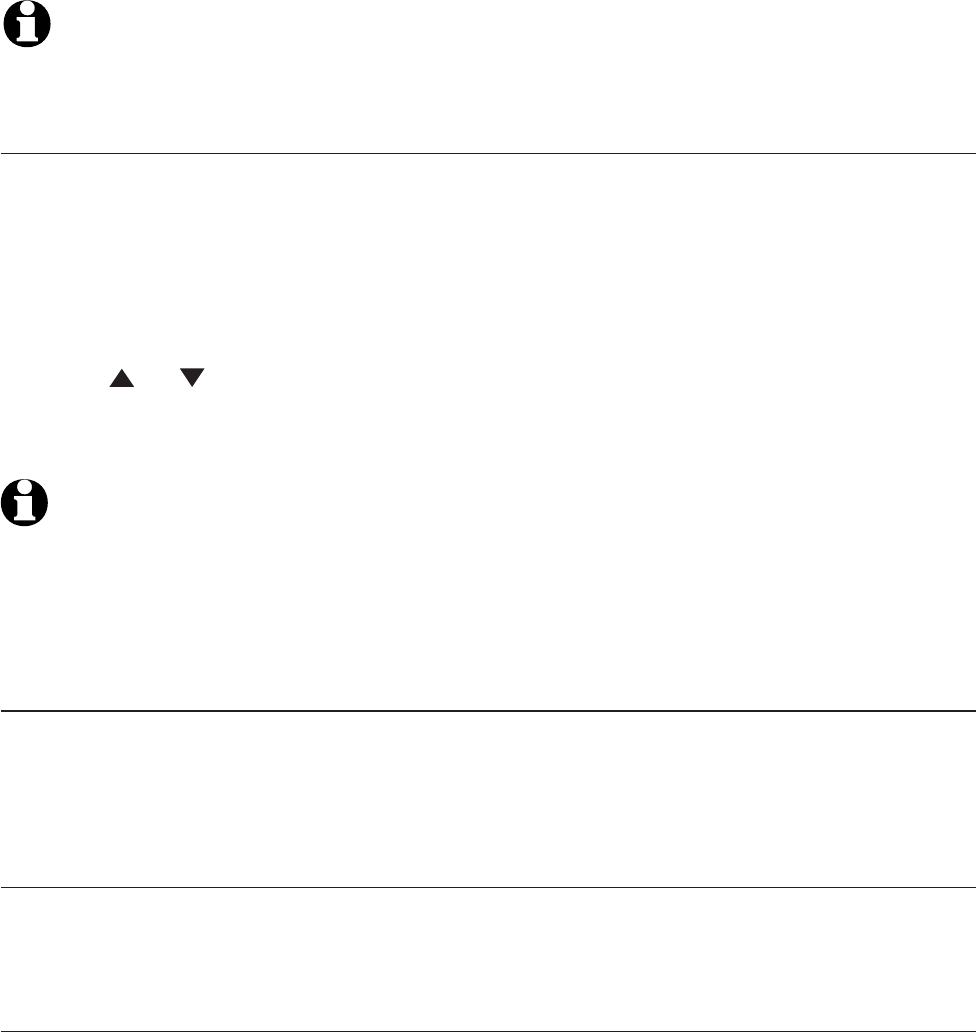
51
Telephone operation
Intercom
You can use the intercom feature for conversations between the system and
an accessory device, or between two accessory devices. When the system is
on one or more external calls, accessory devices can make intercom calls with
each other. If you have a cordless headset, it can only receive intercom calls.
Each individual phone in the telephone system MUST be assigned a unique
extension number for the intercom feature to work. The assignment is done
automatically when the phone is initially setup.
NOTE: A console connected to AC power but not to any telephone lines can still intercom
with charged and registered accessory cordless accessory.
Make an intercom call to an extension
Press INTERCOM on the console while on a call:
Press MENU/SELECT to choose Intercom.
Press the desired one touch location, refer to To dial a one-touch entry
on page 32.
-OR-
Press or to scroll to a desired extension, then press MENU/SELECT.
The screen displays Intercom to: Device X (Device X represents the name
of destination device).
NOTES:
Before the intercom call is answered, you can cancel the intercom by pressing CANCEL or END.
The intercom call automatically cancels if the call is unanswered after one minute.
Press MUTE to temporarily silence the intercom ringer.
Answer an intercom call
When you receive an intercom call, you hear a ringing tone and your screen
displays Intercom from: Device X (Device X represents the name of the
calling device).Lift the handset or pressLift the handset or press SPEAKER to answer.
End an intercom call
Place the handset back to the console or press SPEAKER if you are using
the speakerphone.
Answer an incoming call during an intercom call
If you receive an incoming outside call during an intercom call, there is an
alert tone.
To answer the call, press LINE 1-LINE 4. The intercom call ends automatically.
1.
2.
3.
4.
1.
2.
3.
Telephone operation
Intercom
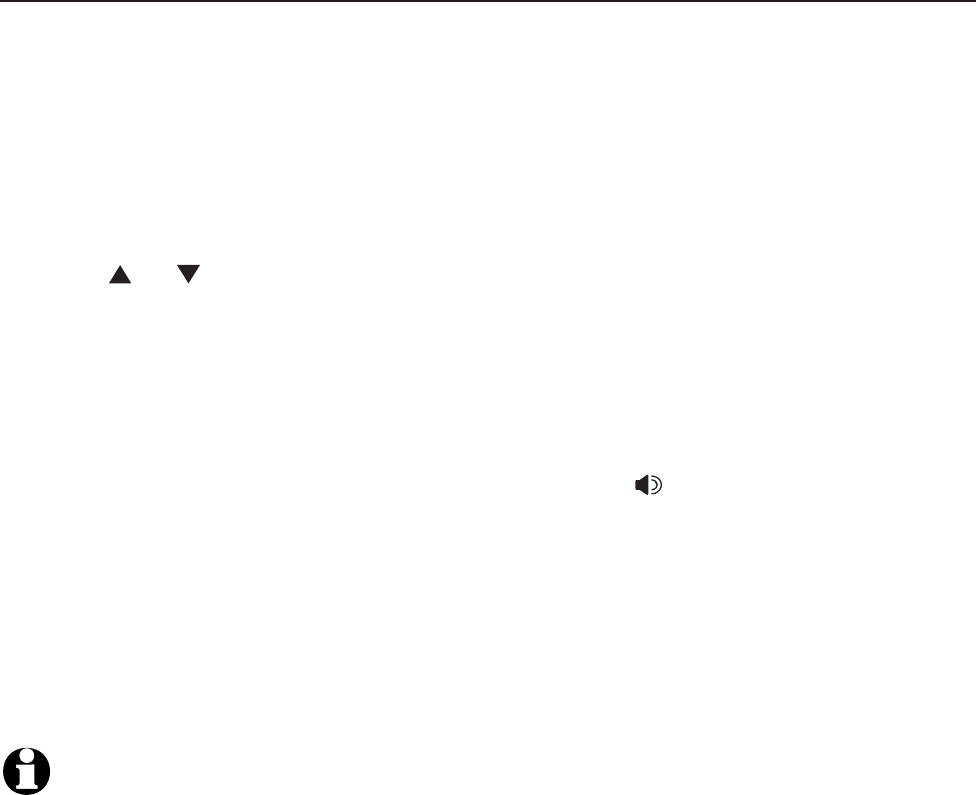
52
Telephone operation
Call transfer
You can transfer a call to any other system telephone. Once you transfer a
call, it can be answered by any system telephone, not just at the extension
you called.
Blind transfer
While on a call, you can transfer a call directly without notifying the
desired extension:
Press TRANSFER on the console while on a call:
Press the one-touch key for the desired extension, refer tofor the desired extension, refer tofor the desired extension, refer to To dial a one-
touch entry on page 32.
-OR-
Press or to scroll to the desired extension, then pressto scroll to the desired extension, then press press MENU/SELECT.
3. The current line is put on hold. The destination handset rings and the call
is answered by pressing LINE 1-LINE 4. You hear a short tone from the
console. The outside call is automatically transferred to the
desired extension.
4. Put the corded handset on the console or press SPEAKER to hang up.
-OR-
You can resume the call by pressing the corresponding flashing line key
LINE 1-LINE 4 before the desired extension answers the call.
You hear a beep tone every 30 seconds when a transferred call has not been
answered (To turn off the reminder beep, see Hold reminder on page 38).
NOTES:
If the desired extension does not answer the intercom call within one minute, the extension rings as
an incoming call to remind the extension user.
If the outside call is put on hold for 10 minutes, it is automatically transferred to the auto attendant.
The console returns to idle mode.
1.
2.
1.
2.
3.

53
Telephone operation
Call transfer using intercom
Transfer a call and speak to the receiving party
You can transfer a call and speak to the receiving party before completing
the transfer while on a call:
Press INTERCOM on the console while on a call:
Press MENU/SELECT to choose Intercom.
Press the desired one touch location, refer to To dial a one-touch entry
on page 32.
-OR-
Press or to scroll to a desired extension, then press MENU/SELECT.
The current line is put on hold. The destination extension rings and the call
is answered. You can now talk to the destination party.
Press TRANSFER to transfer the call to the destination extension.
You hear a beep tone every 30 seconds when a transferred call has not been
answered (To turn off the reminder beep, see Hold reminder on page 38).
NOTE: If the desired extension does not answer the intercom call within one minute, the extension
rings as an incoming call to remind the extension user.
Answer a transferred call
When you hear a short intercom ring from the console:
Lift the handset to intercom with an extension. You can talk privately with
the extension before picking up the outside call that is on hold. Press the
blinking LINE 1-LINE 4 when you are ready to talk to the outside call.
Other options for answering the transferred call:
To answer using the console speakerphone, press SPEAKER before
pressing LINE 1-LINE 4.
To answer handsfree using the corded headset, press HEADSET before
pressing LINE 1-LINE 4.
1.
2.
3.
4.
5.
•
•
Telephone operation
Call transfer using intercom
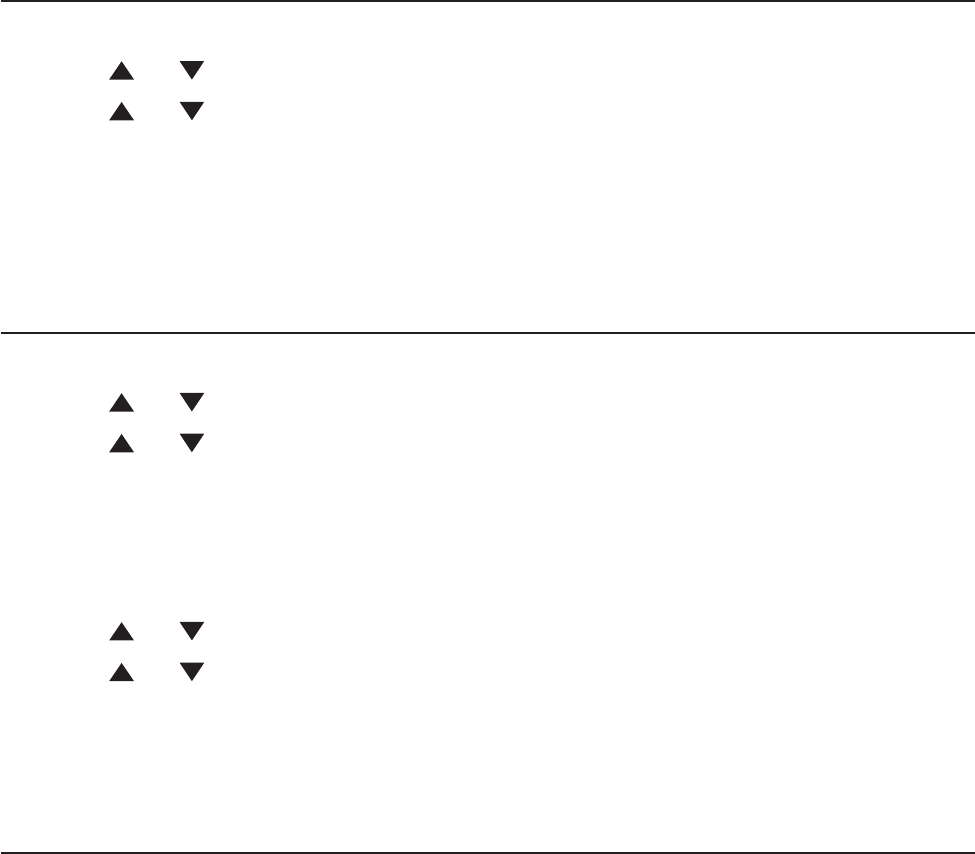
54
Telephone operation
Voice page
You can directly broadcast messages to the speakerphone of any extension.
The extension you called can respond by pressing the INTERCOM to begin a
two-way communication. Any registered cordless handset/deskset can make
PTT calls with each other or with the console. Up to five pairs of PTT calls can
be maintained at a time.
Page a single device
Press INTERCOM on the console while on a call:
Press or to scroll to Page, then press MENU/SELECT.
Press or to scroll to a desired extension, then press MENU/SELECT.
When the connection is made, both the caller and the destination party
hear three beeps. Speak into the base speakerphone. Your voice is
broadcast to the desired extension.
The destination party can now respond.
Page all devices
Press INTERCOM on the console while on a call:
Press or to scroll to Page all, then press MENU/SELECT.
Press or to scroll to a desired extension, then press MENU/SELECT.
When the connection is made, both the caller and the destination party
hear three beeps. Speak into the base speakerphone. Your voice is
broadcast to the desired extension. Answer a page
Press INTERCOM on the console while on a call:
Press or to scroll to Page all, then press MENU/SELECT.
Press or to scroll to a desired extension, then press MENU/SELECT.
When the connection is made, both the caller and the destination party
hear three beeps. Speak into the base speakerphone. Your voice is
broadcast to the desired extension.
End a page
Press INTERCOM, SPEAKER or place the handset back to the console to
end page.
1.
2.
3.
4.
5.
1.
2.
3.
4.
5.
6.
7.
8.
•
Telephone operation
Voice page

55
Directory
About the directory
Use the directory to store names and phone numbers. Directory entries are
not shared with other extensions. Each extension has its own directory.
Capacity
The directory of this console can store up to 50 entries, with a maximum of
15 alphanumeric characters (including spaces) for names and 30 digits for
telephone numbers. A convenient search feature can help you quickly find
and dial numbers (page 57).
If there are already 50 entries, the screen shows Memory is full. You cannot
store a new number until you delete one. If you try to view the directory when
there are no entries, the screen displays Directory empty.
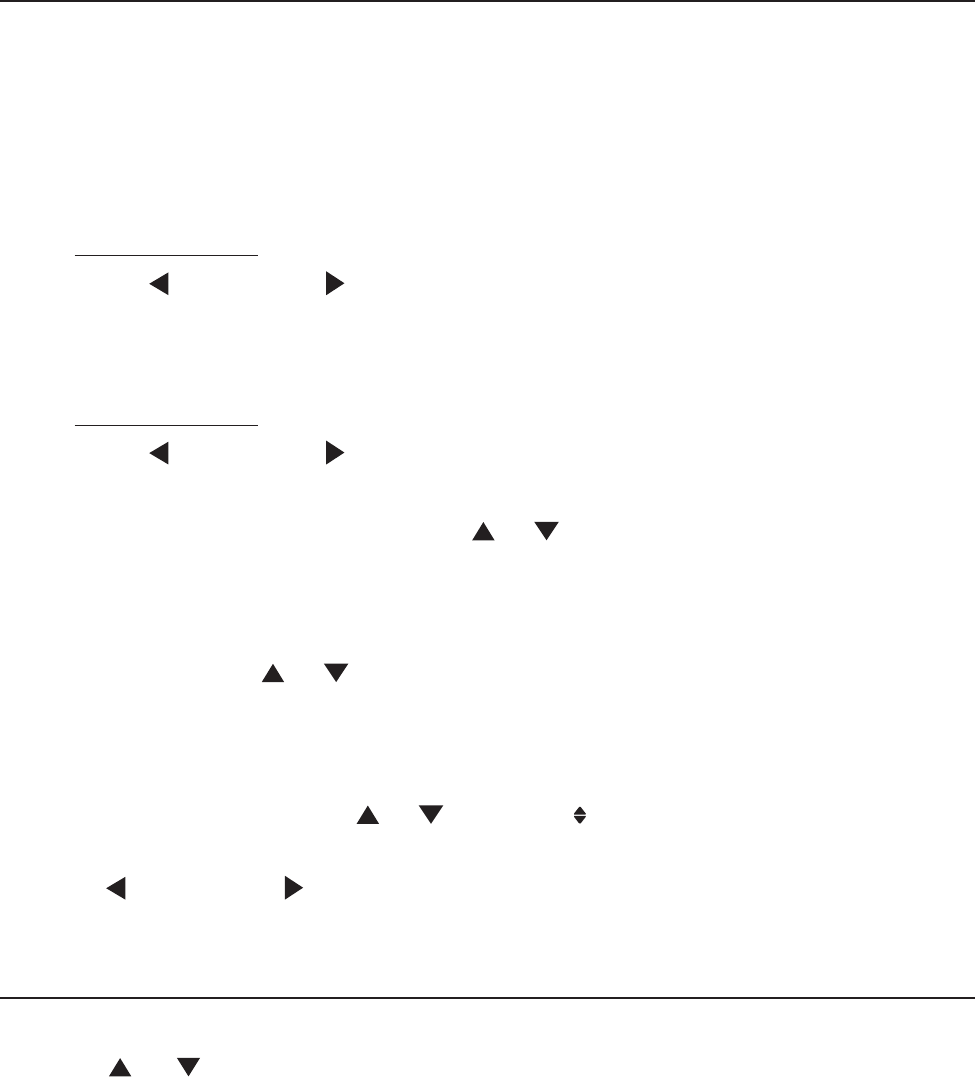
56
Create a new directory entry
Use the following steps to store a name and number in the directory.
When the console is idle, press DIRECTORY.
Press MENU/SELECT to add an entry.
Use the dialing keys to enter the name.
Press DELETE to delete a character.
Press and hold DELETE to delete all characters.
Press /REPEAT or /SKIP to move the cursor to the left or right.
Press MENU/SELECT to save. Use the dialing keys to enter the number.
Press DELETE to delete a digit.
Press and hold DELETE to delete all digits.
Press /REPEAT or /SKIP to move the cursor to the left or right.
You can include a pause while storing a dialing sequence that requires
one during actual dialing. Press or to choose Add Pause, then press
MENU/SELECT. A P appears on the screen.
Store a signal for switching to temporary tone signalling. If you
have dial pulse (rotary) service, this signal is required for some special
services. Press or to choose Add Tone, then press MENU/SELECT.
A T appears on the screen. All numbers you enter after this will send
touch-tone signals during dialing.
You can store the flash signal required by some special services as part of a
dialing sequence. Press or to choose Add Flash, then press
MENU/SELECT. A F appears on the screen.
Press /REPEAT or /SKIP to choose Done, then press MENU/SELECT. To
exit without making changes, press CANCEL.
Review directory entries
When the console is idle, press DIRECTORY.
Press or to browse through the directory. Entries appear
alphabetically by the first letter in the name.
Press CANCEL to cancel an operation and return to idle mode.
1.
2.
3.
•
•
•
4.
•
•
•
•
•
•
5.
1.
2.
3.

57
Directory
Search directory
Search by name
Follow the steps below to search for directory entries on the console.
When the console is idle, press press MENU/SELECT twice to select Directory.
-OR-
PressPress DIRECTORY on the console.
2. Press or to browse through the directory.browse through the directory.
3. When a name appears, press the dial pad keys (2-9) to start a name search.
The directory shows the first name beginning with the first letter
associated with the dial pad key if there is an entry in the directory
beginning with that letter. If there is no entry matching the letter you
press, it remains in the current entry.
4. To see other names starting with the letters on the same dial pad key, keep
pressing the key. The names appear in alphabetical order.
For example, if you have the names Jennifer,Jessie,Kevin and Linda in
your directory:
If you press 5 (JKL) once, you see Jennifer.
If you press 5 (JKL) twice, you see Kevin.
If you press 5 (JKL) three times, you see Linda.
If you press 5 (JKL) four times, you see Jennifer.
To view Jessie, press whilewhile Jennifer is displayed.
1.
•
•
•
•
•
•
Directory
Search directory
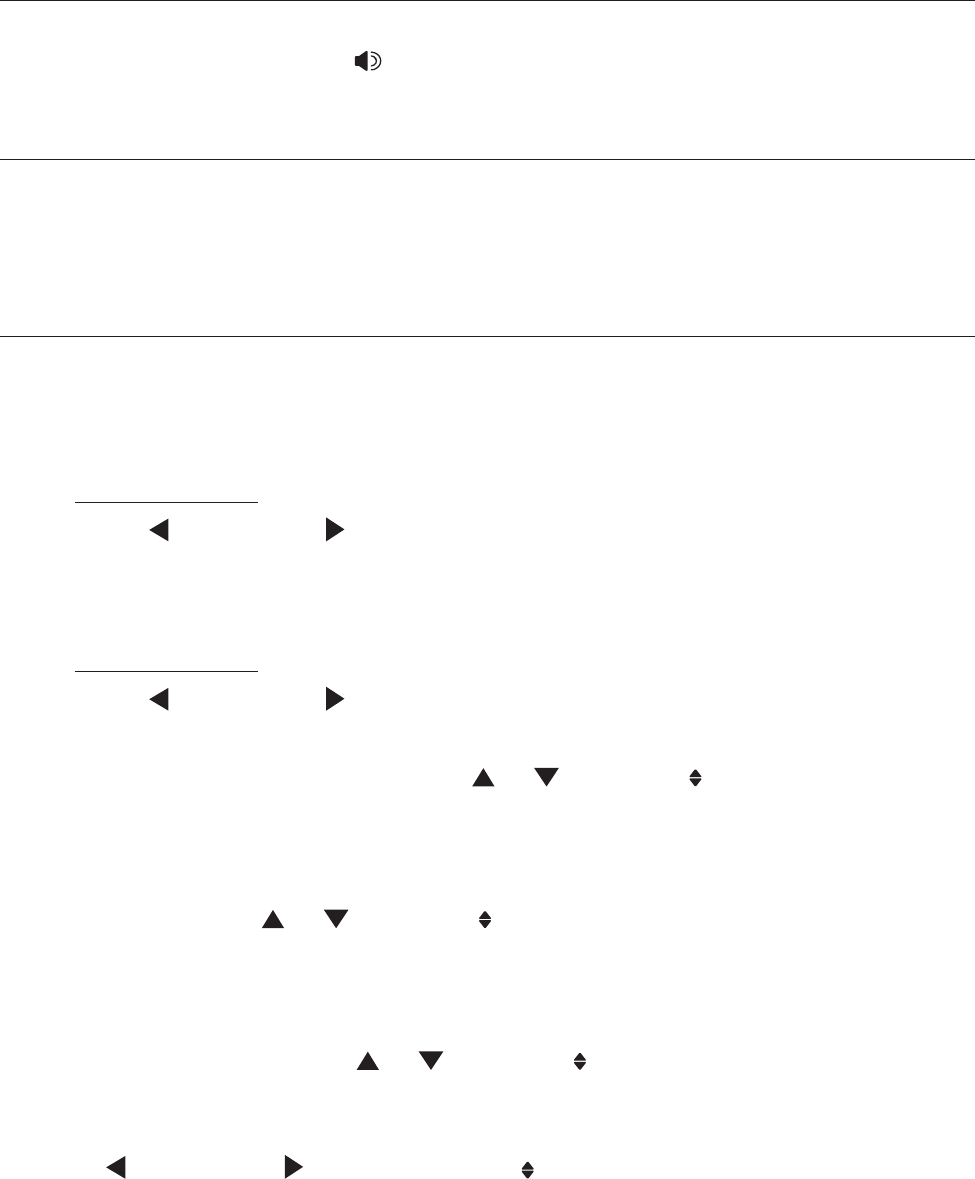
58
Directory
Dial, delete or edit entries
You can dial, delete or edit a directory entry (name and number) when it is
shown on the console screen. You can use the directory review (page 56) or
search (page 58) to show an entry.
Display dial
When a number is displayed on the screen, you can dial the number by lifting
the corded handset, pressing SPEAKER or LINE 1-LINE 4 for the desired line.
Delete an entry
When a directory entry appears, press DELETE .
The screen displays Delete Contact? Press MENU/SELECT to confirm. You
hear a confirmation tone.
Edit an entry
When a directory entry appears, press MENU/SELECT.
Use the dialing keys to edit the name.
Press DELETE to delete a character.
Press and hold DELETE to delete all characters.
Press /REPEAT or /SKIP to move the cursor to the left or right.
Press MENU/SELECT to save. Use the dialing keys to edit the number.
Press DELETE to delete a digit.
Press and hold DELETE to delete all digits.
Press /REPEAT or /SKIP to move the cursor to the left or right.
You can include a pause while storing a dialing sequence that requires
one during actual dialing. Press or to choose Add Pause, then press
MENU/SELECT. A P appears on the screen.
Store a signal for switching to temporary tone signalling. If you
have dial pulse (rotary) service, this signal is required for some special
services. Press or to choose Add Tone, then press MENU/SELECT.
A T appears on the screen. All numbers you enter after this will send
touch-tone signals during dialing.
You can store the flash signal required by some special services as part of a
dialing sequence. Press or to choose Add Flash, then press
MENU/SELECT. A F appears on the screen. Continue storing the number
as usual.
Press /REPEAT or /SKIP to choose Done, then press MENU/SELECT. To
exit without making changes, press CANCEL.
1.
2.
1.
2.
•
•
•
3.
•
•
•
•
•
•
4.
Directory
Dial, delete or edit entries

59
Caller ID
About the caller ID
This telephone supports caller ID services that most telephone service
providers offer. Caller ID allows you to see the name, number, date and time
of calls. Depending on your service subscription, you might see the caller’s
number, or the caller’s name and number from the telephone service provider
after the first or second ring. Caller ID information might not be available
for every incoming call. Callers may intentionally block their names and/or
telephone numbers.
This product can provide information only if both you and the caller are in
areas offering caller ID service and if both telephone service providers use
compatible equipment.
Information about caller ID with call waiting
Caller ID with call waiting lets you see the name and telephone number of
the caller before answering the telephone, and while on another call.
There are fees associated with caller ID services. In addition, this service might
be called by different names (such as caller ID with visual call waiting) by
different telephone service providers and might not be available in all areas.
It might be necessary to change telephone service to use this feature.
Contact your telephone service provider if:
You have both caller ID and call waiting, but as separate services (you
might need to combine these services).
You only have caller ID service, or only call waiting service.
You do not subscribe to caller ID or call waiting services.
NOTES:
You can use this telephone with regular caller ID service, or you can use this telephone’s other
features without subscribing to caller ID or caller ID combined with call waiting service.
The format of telephone numbers displayed depends on the home and local area codes you set
(See Area codes on page 36 for explanations and instructions on area code settings).
•
•
•
1.
2.

60
Caller ID
Caller ID information
How the caller ID information (call log) works
The telephone stores caller ID information for the last 200 incoming calls in
the console. Entries are stored in reverse chronological order. The telephone
deletes the oldest entry when the log is full to make room for new calls.
Each extension has independent caller ID information. Deleting the caller ID
information on any one extension does not affect the caller ID information on
other extensions.
If you answer a call before the information appears on the screen, it does
not show in the caller ID information.
Review the caller ID information to determine who called, to easily return the
call, or to copy the caller’s name and number into your directory.
NEW indicator turns on and XX Missed call(s) appears if there are new call
log entries (including new or missed calls).
The time and date of the call and the caller’s name and telephone number
are included in the display.
Caller ID information appears on the screen as the telephone rings, or until
the caller hangs up, or until the call has been answered at another extension,
or until the call ends.
If you subscribe to caller ID service, this phone automatically resets the time
and date each time new call information is received. You can also set the
time and date yourself (see Set date and time on page 29).
NOTES:
1. The caller ID information might not be available for every incoming call. Callers might intentionally
block their names and/or telephone numbers.
2. Each entry can store up to 24 digits for the telephone number and 15 characters for the name. If
the telephone number has more than 16 digits but less than or equal to 24 digits, only the last
17 digits appear. If the telephone number has more than 24 digits, only the 8th to 24th digits (17
digits) appear. If the telephone number has more than 24 digits, it is not saved or shown in the
call history.
Caller ID
Caller ID information
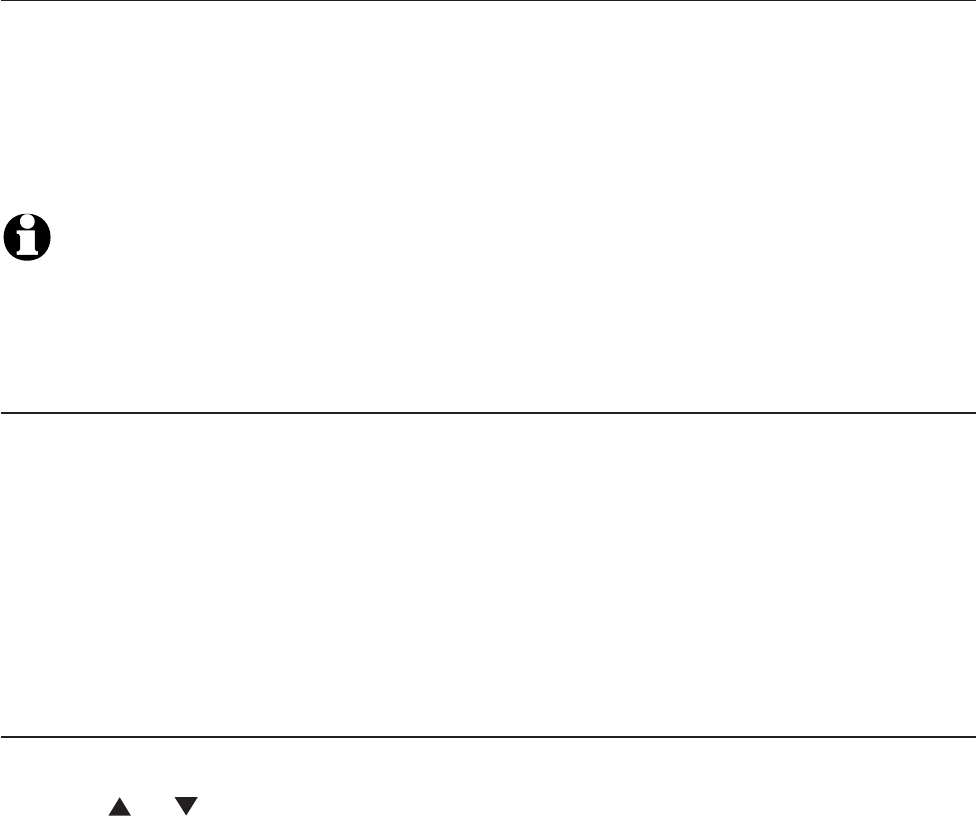
61
Caller ID
Caller ID operation
Memory match
If the incoming telephone number is an exact match with a telephone
number in your directory, the name that appears on the screen matches the
corresponding name in your directory.
For example, if Christine Smith calls, her name appears as Chris if this is how
you entered it into your directory.
NOTE: The number you see on your caller ID is in the format from the telephone service
provider. It usually delivers 10-digit telephone numbers (area code plus telephone number).
The telephone system ignores the area code when searching for a match and displays the
name of the first corresponding number from the directory.
Missed (new) calls indicator
When the console is in idle mode and has new or missed calls, its screen
shows XX Missed call(s).
All new or missed entries are counted as missed calls. Each time you review
a call history entry with the icon new, the number of missed calls decreases
by one. When all the entries in the caller ID information become old (have
been reviewed), the system removes the missed calls alert from the display,
and the NEW indicator turns off.
Review the caller ID information
When the console is idle, press CALL HISTORY.
2. Press or to review the caller ID information. The call history entries are
stored in reverse chronological order starting with the most recent entry.
3. To exit without making changes, press CANCEL.
1.
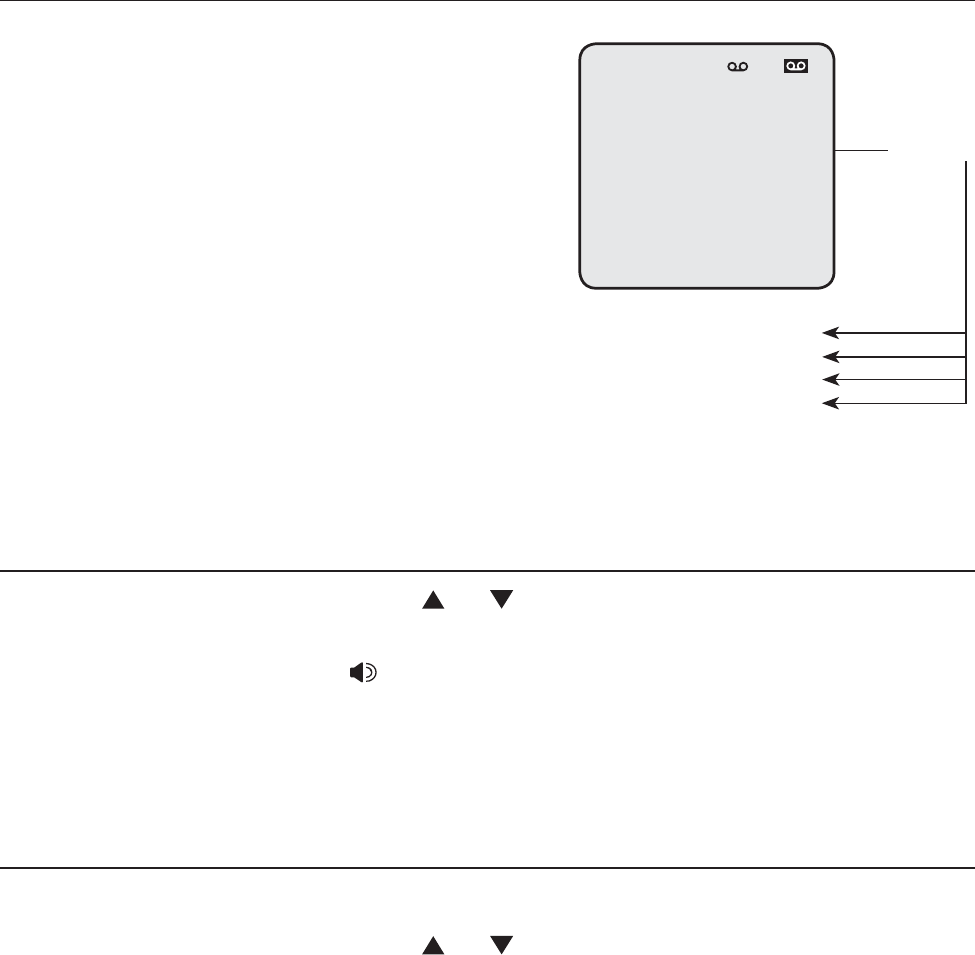
62
Caller ID
Caller ID operation
View dialing options
Although the incoming call history entries
have 10 digits (the area code plus the
seven-digit number), in some areas, you
may need to dial the seven digits only,
1 plus the seven digits, or 1 plus the area
code plus the seven digits. You can change
and store the number of digits that you
dial in the call history.
While reviewing the call history, press
#(pound key) repeatedly on the console to
show different dialing options for local and
long distance numbers before dialing or
saving the telephone number in
the directory.
Dial a call history entry
When in the call history, press or to browse the number you wish to
call.
Lift the handset or press SPEAKER.
-OR-
To override automatic line selection, press LINE 1-LINE 4 for the desired
line, then lift the handset.
Delete entries
Delete a call history entry:
When in the call history, press or to browse to the number you wish
to delete.
Press DELETE to delete the shown entry from the caller ID history.
Delete all call history entries:
When the console is idle, press CALL HISTORY.
2. Press DELETE. The screen displays All calls deleted and there is a
confirmation tone, then returns to the idle screen.
1.
2.
1.
2.
1.
722 7702
1 722 7702
888 722 7702
1 888 722 7702
Press #
LINE 1
CHRISTINE SMITH
888 722 7702
12:14PM MON12/21
L1 L2 L3 L4
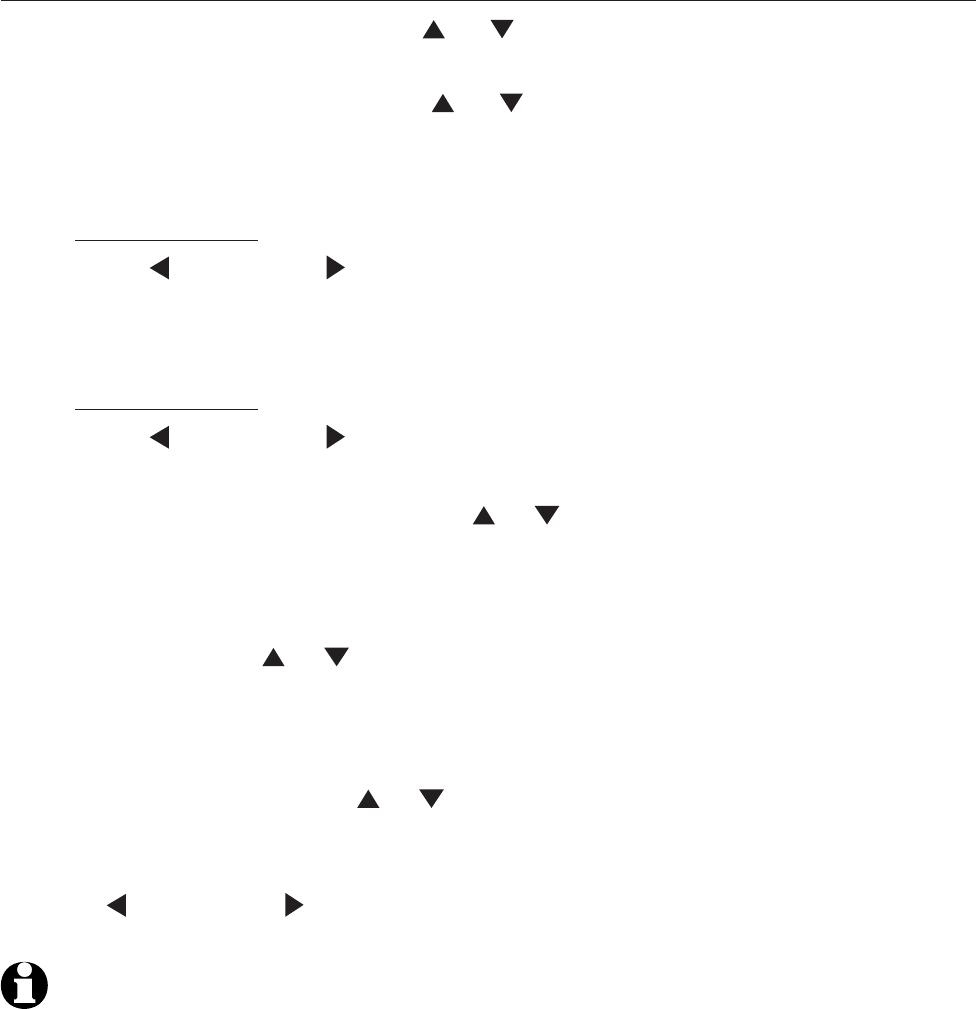
63
Caller ID
Caller ID operation
Save a call history entry to the directory
When in the call history, press or to browse the desired number
to save.
Press MENU/SELECT, then press or to choose Copy to DIR.
Press MENU/SELECT. Use the dialing keys to edit the name.
Press DELETE to delete a character.
Press and hold DELETE to delete all characters.
Press /REPEAT or /SKIP to move the cursor to the left or right.
Press MENU/SELECT to save. Use the dialing keys to edit the number.
Press DELETE to delete a digit.
Press and hold DELETE to delete all digits.
Press /REPEAT or /SKIP to move the cursor to the left or right.
You can include a pause while storing a dialing sequence that requires
one during actual dialing. Press or to choose Add Pause, then press
MENU/SELECT. A P appears on the screen.
Store a signal for switching to temporary tone signalling. If you
have dial pulse (rotary) service, this signal is required for some special
services. Press or to choose Add Tone, then press MENU/SELECT.
A T appears on the screen. All numbers you enter after this will send
touch-tone signals during dialing.
You can store the flash signal required by some special services as part of a
dialing sequence. Press or to choose Add Flash, then press
MENU/SELECT. A F appears on the screen. Continue storing the number
as usual.
Press /REPEAT or /SKIP to choose Done, then press MENU/SELECT. To
exit without making changes, press CANCEL.
NOTE: You will need to change how a caller ID number is dialed if the entry does not
appear in the correct format. Caller ID numbers might appear with an area code that might
not be necessary for local calls, or without a 1 that might be necessary for long distance
calls (see View dialing options on the previous page for more information).
1.
2.
3.
•
•
•
4.
•
•
•
•
•
•
4.
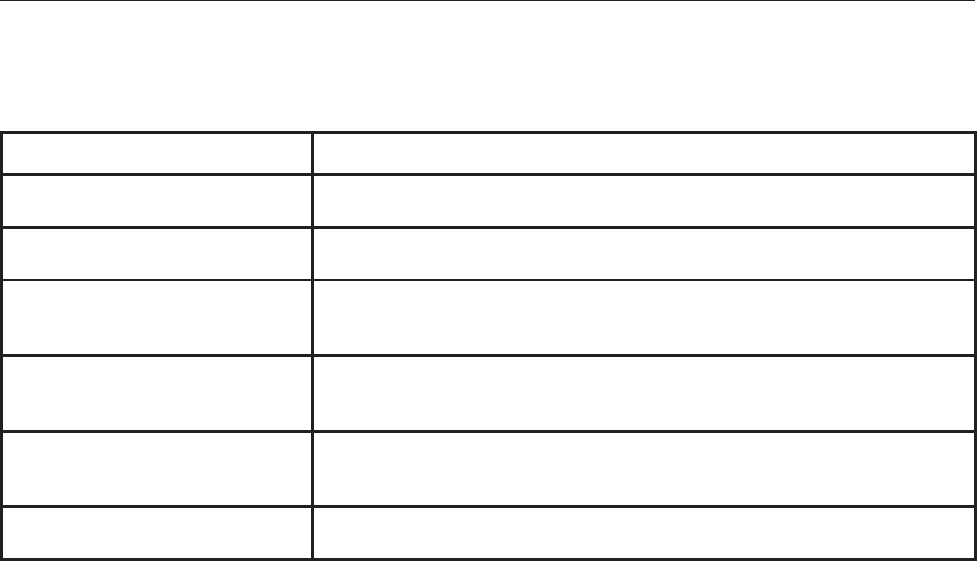
64
Caller ID
Reasons for missing caller ID information
Reasons for missing caller ID information
There are also occasions when other information or no information shows for
various reasons:
On-screen message Reason
PRIVATE NAME The caller prefers not to show the name.
PRIVATE NUMBER The caller prefers not to show the phone number.
PRIVATE CALLER The caller prefers not to show the phone number
and name.
UNKNOWN NAME Your telephone service provider cannot determine
the caller’s name.
UNKNOWN NUMBER Your telephone service provider cannot determine
the caller’s number.
UNKNOWN CALLER No information is available about this caller.

65
Answering system
Auto attendant setup (for answering system)
You can set up the auto attendant to answer outside calls, provide callers with
a company directory, automatically forward calls to a specified extension, and
enable callers to record voice messages when there is no answer. You can
use a default announcement or record up to five announcements of your own.
For details on how to use the auto attendant feature, see the Auto attendant
operation on page 75 of this user’s manual.
Announcement
Use this feature to record up to five new announcements so that you can
have different announcements for daytime and after hours. You can easily
switch among the recorded announcements. Each announcement can be up
to 75 seconds.
The system has a default announcement, “Thank you for calling our company.
If you know your party’s extension, you may dial it any time. For a company
directory, please dial 0. To leave a message , please dial 9.”
If you have many extensions, record a separate extension list in the
Directory OGM menu item and reference it in your auto attendant
announcement as shown in Sample announcement 1. If you have only a few
extensions, you can list them in the auto attendant announcement as shown
in Sample announcement 2 without the separate extension list.
Sample announcement 1: “Hello, you have reached XYZ Corp. Please
enter your parties’ extension, followed by the pound key. To hear a list of
extensions, dial star twice.”
Sample announcement 2: “Hello, you have reached XYZ Corp. For sales,
press 1 pound; for service, press 2 pound; for shipping, press 3 pound; or
press star for the receptionist.”
Auto attendant on/off
You can turn the auto attendant on or off.
When the console is idle, press ANS SYS.
Press or to scroll to Auto Attendant then press MENU/SELECT.
Press or to scroll to Auto ATT ON/OFF then press MENU/SELECT.
Press or to choose ON or OFF.
Press MENU/SELECT. There is a confirmation tone.
1.
2.
3.
4.
5.
Answering system
Auto attendant setup (for answering system)

66
Answering system
Auto attendant setup (for answering system)
Auto attendant delay
Use this feature to choose how long this phone rings before the auto
attendant picks up a call. One cycle lasts about six seconds.
When the console is idle, press ANS SYS.
Press or to scroll to Auto Attendant then press MENU/SELECT.
Press or to scroll to Auto ATT Delay then press MENU/SELECT.
Press or to choose the desired time (6 seconds to 30 seconds).
Press MENU/SELECT. There is a confirmation tone.
To record the announcement:
When the console is idle, press ANS SYS.
Press or to scroll to Auto Attendant then press MENU/SELECT.
Press or to scroll to Announcement then press MENU/SELECT.
Press or to choose Day OGM 1,Day OGM 2,Day OGM 3,
Night OGM or Directory OGM, then press MENU/SELECT.
Press or to scroll to Record then press MENU/SELECT.
Facing the Console, record your announcement. The screen displays
Record OGM and the time elapsed. Press MENU/SELECT to select STOP to
stop recording. The console beeps and plays the recorded announcement.
To exit without making changes, press CANCEL.
1.
2.
3.
4.
5.
1.
2.
3.
4.
5.
6.
Answering system
Auto attendant setup (for answering system)

67
Answering system
Auto attendant setup (for answering system)
To set the start and end time of announcement:
When the console is idle, press ANS SYS.
Press or to scroll to Auto Attendant then press MENU/SELECT.
Press or to scroll to Announcement then press MENU/SELECT.
Press or to choose Day OGM 1,Day OGM 2,Day OGM 3 or
Night OGM, then press MENU/SELECT.
Press or to scroll to Start/End Time then press MENU/SELECT.
Press or to scroll to the item you want to edit, and press the dial
pad to enter the correct digit.
Press /REPEAT or /SKIP to select AM or PM.
Press MENU/SELECT to save the setting. There is a confirmation tone.
For the auto attendant to answer the call at anytime, you must make sure
that you set the start time of next announcement as same as the end time
of your previous announcement. For example, Day OGM 1 is set to end at
05:00 PM, the start time of Day OGM 2,Day OGM 3 or Night OGM should
be set as 05:00 PM.
NOTE: The time is in a 12-hour clock format. If you set an invalid time, you will hear an error
tone while pressing MENU/SELECT to save the setting. The error tone means the setting cannot be
saved. You need to correct the time entry to continue the setup process.
To play the announcement:
When the console is idle, press ANS SYS.
Press or to scroll to Auto Attendant then press MENU/SELECT.
Press or to scroll to Announcement then press MENU/SELECT.
Press or to choose Day OGM 1,Day OGM 2,Day OGM 3,
Night OGM or Directory OGM, then press MENU/SELECT.
Press or to scroll to Play then press MENU/SELECT.
The screen displays Play OGM and the time elapsed. Press /REPEAT or
/SKIP to select STOP to stop the announcement, PLAY to play the
announcement, RECORD to record a new announcement or RESET to
reset the announcement to default.
1.
2.
3.
4.
5.
6.
7.
8.
1.
2.
3.
4.
5.
6.

68
Answering system
Auto attendant setup (for answering system)
Delete all central mailbox messages
Use this feature to delete all messages stored in the central mailbox.
When the console is idle, press ANS SYS.
Press or to scroll to Auto Attendant then press MENU/SELECT.
Press or to scroll to Delete all msgs then press MENU/SELECT.
The screen displays Delete all messages? Press MENU/SELECT to confirm.
There is a confirmation tone. To exit without making changes, press CANCEL.
Reset auto attendant
Use this feature to reset the auto attendant settings and announcements
to default.
When the console is idle, press ANS SYS.
Press or to scroll to Auto Attendant then press
MENU/SELECT.
Press or to scroll to Reset Auto ATT then press MENU/SELECT.
The screen displays Reset Auto Attendant to default settings? Press
MENU/SELECT to confirm.
The screen displays Auto Attendant is reset to default and there is a
confirmation tone.
1.
2.
3.
4.
1.
2.
3.
4.
5.
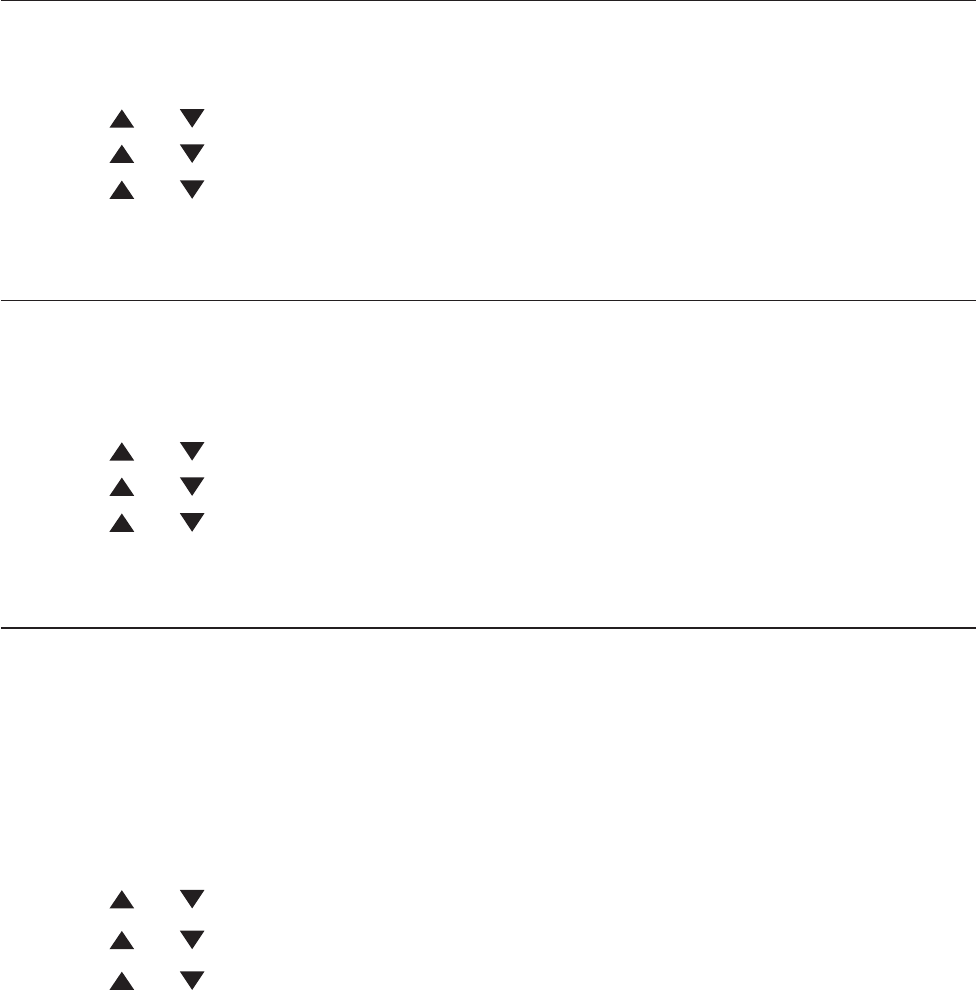
69
Answering system
Private mailbox setup
You can set your main console as a private mailbox in the telephone system.
The private mailbox can answer a call when you turn off the auto attendant
feature, the auto attendant is busy or run out of recording memory, or you
set a shorter private mailbox delay than the auto attendant delay.
Private mailbox on/off
You can turn the private mailbox on or off.
When the console is idle, press ANS SYS.
Press or to scroll to Private Mailbox then press MENU/SELECT.
Press or to scroll to Priv MB ON/OFF then press MENU/SELECT.
Press or to choose ON or OFF.
Press MENU/SELECT. There is a confirmation tone.
Private mailbox delay
Use this feature to choose how long this phone rings before the private
mailbox picks up a call. One cycle lasts about six seconds.
When the console is idle, press ANS SYS.
Press or to scroll to Private Mailbox then press MENU/SELECT.
Press or to scroll to Auto ATT Delay then press MENU/SELECT.
Press or to choose the desired time (12 seconds to 40 seconds).
Press MENU/SELECT. There is a confirmation tone.
Announcement
An announcement plays when calls are answered by the private mailbox. The
system has a default announcement, “Hello, please leave a message after
the tone.” You can use this announcement or record your own.
You can record an announcement up to 75 seconds.
To record the announcement:
When the console is idle, press ANS SYS.
Press or to scroll to Private Mailbox then press MENU/SELECT.
Press or to scroll to Announcement then press MENU/SELECT.
Press or to scroll to Record then press MENU/SELECT.
The screen displays Record OGM and the time elapsed. Press
MENU/SELECT to select STOP to stop recording. The console beeps and
plays the recorded announcement. To exit without making changes,
press CANCEL.
1.
2.
3.
4.
5.
1.
2.
3.
4.
5.
1.
2.
3.
4.
5.
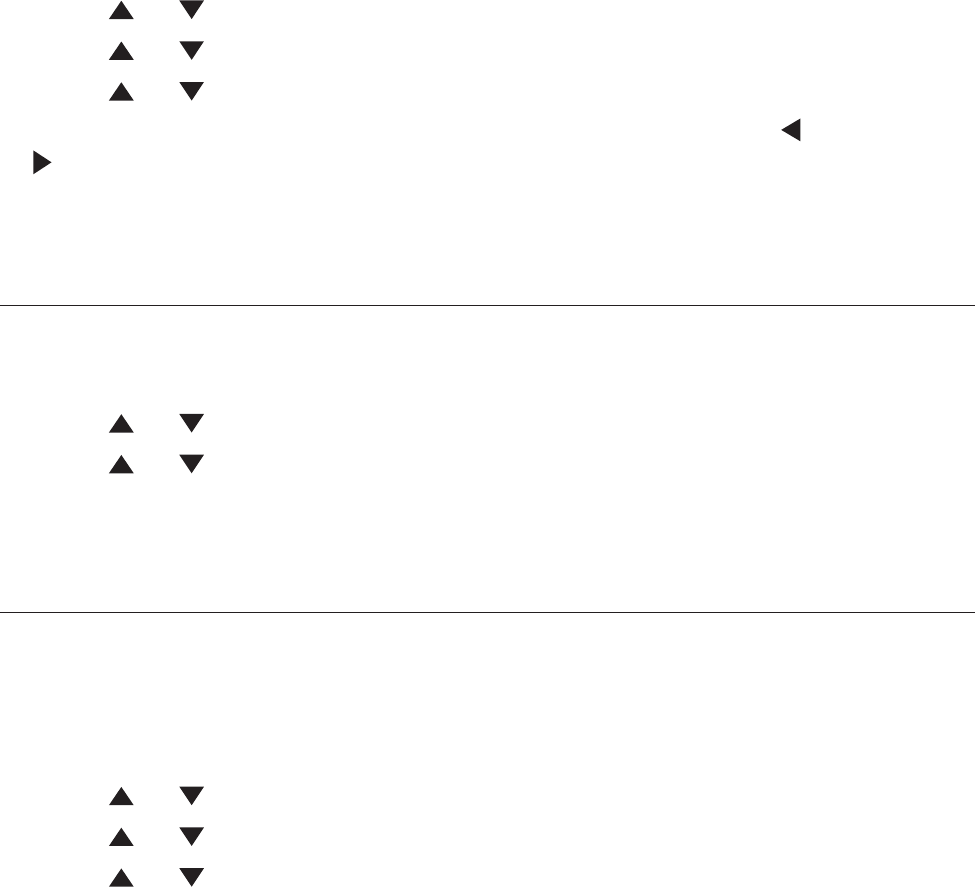
70
Answering system
Private mailbox setup
To play the announcement:
When the console is idle, press ANS SYS.
Press or to scroll to Private Mailbox then press MENU/SELECT.
Press or to scroll to Announcement then press MENU/SELECT.
Press or to scroll to Play then press MENU/SELECT.
The screen displays Play OGM and the time elapsed. Press /REPEAT or
/SKIP to select STOP to stop the announcement, PLAY to play the
announcement, RECORD to record a new announcement or RESET to
reset the announcement to default.
Delete all private mailbox messages
You can use this feature to delete all messages stored in the private mailbox.
When the console is idle, press ANS SYS.
Press or to scroll to Private Mailbox then press MENU/SELECT.
Press or to scroll to Delete all msgs then press MENU/SELECT.
The screen displays Delete all messages? Press MENU/SELECT to confirm.
There is a confirmation tone. To exit without making changes, press CANCEL.
Record memo
Memos are messages you record as reminders for yourself. You can record
your own memos using a system handset. Play and delete them the same
way as incoming messages.
When the console is idle, press ANS SYS.
Press or to scroll to Private Mailbox then press MENU/SELECT.
Press or to scroll to Record memo then press MENU/SELECT.
Press or to scroll to Record then press MENU/SELECT.
Facing the Console, record your memo. The screen displays Record memo
and the time elapsed. Press MENU/SELECT to select STOP to stop recording.
To exit without making changes, press CANCEL.
1.
2.
3.
4.
5.
1.
2.
3.
4.
1.
2.
3.
4.
5.

71
Answering system
Private mailbox setup
Call intercept
Choose whether private incoming messages can be intercepted by other extension
phones. If call intercept is on when a caller leaves a message, someone on
another extension phone sharing the same line can answer the call by pressing
the corresponding line key.
When the console is idle, press ANS SYS.
Press or to scroll to Private Mailbox then press MENU/SELECT.
Press or to scroll to Call intercept then press MENU/SELECT.
Press or to choose On or Off.
Press MENU/SELECT to save the setting and return to the previous
menu. There is a confirmation tone. To exit without making changes,
press CANCEL.
1.
2.
3.
4.
5.
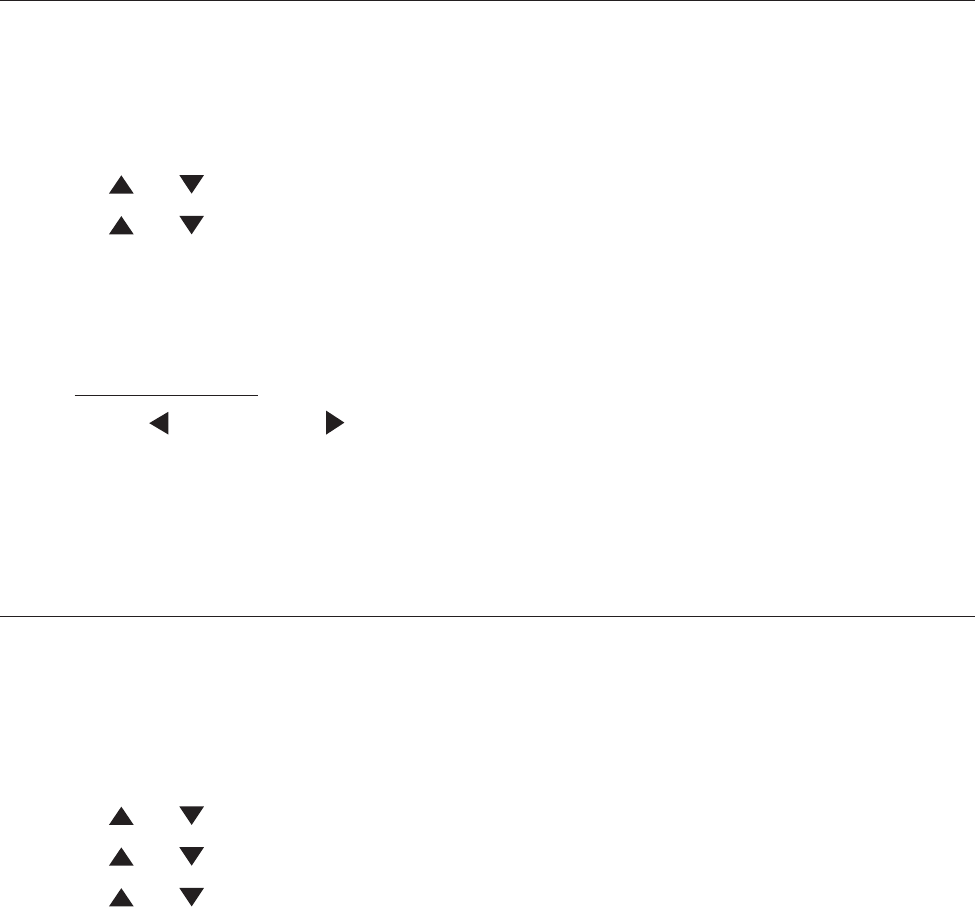
72
Answering system
Answering system setup
Remote access code
Use this code to select a three-digit number to allow remote access of
private mailbox from another telephone. You can change the code to any
number from 000-999. This code is 111 by default.
When the console is idle, press ANS SYS.
Press or to scroll to Ans Sys Setup then press MENU/SELECT.
Press or to scroll to Remote Code then press MENU/SELECT.
The screen displays Set Remote Code. Use the dialing keys to enter a
three-digit remote code.
Press DELETE to delete a digit.
Press and hold DELETE to delete all digits.
Press /REPEAT or /SKIP to move the cursor to the left or right.
Press MENU/SELECT to save the setting and return to the previous
menu. There is a confirmation tone. To exit without making changes,
press CANCEL.
Message alert
Use this feature to turn the audible message alert on or off.
If the message alert tone is on, the telephone beeps every 30 seconds when
there are new private or central messages.
When the console is idle, press ANS SYS.
Press or to scroll to Ans Sys Setup then press MENU/SELECT.
Press or to scroll to Message Alert then press MENU/SELECT.
Press or to choose On or Off.
Press MENU/SELECT to save the setting and return to the previous
menu. There is a confirmation tone. To exit without making changes,
press CANCEL.
1.
2.
3.
4.
•
•
•
5.
1.
2.
3.
4.
5.
Answering system
Answering system setup
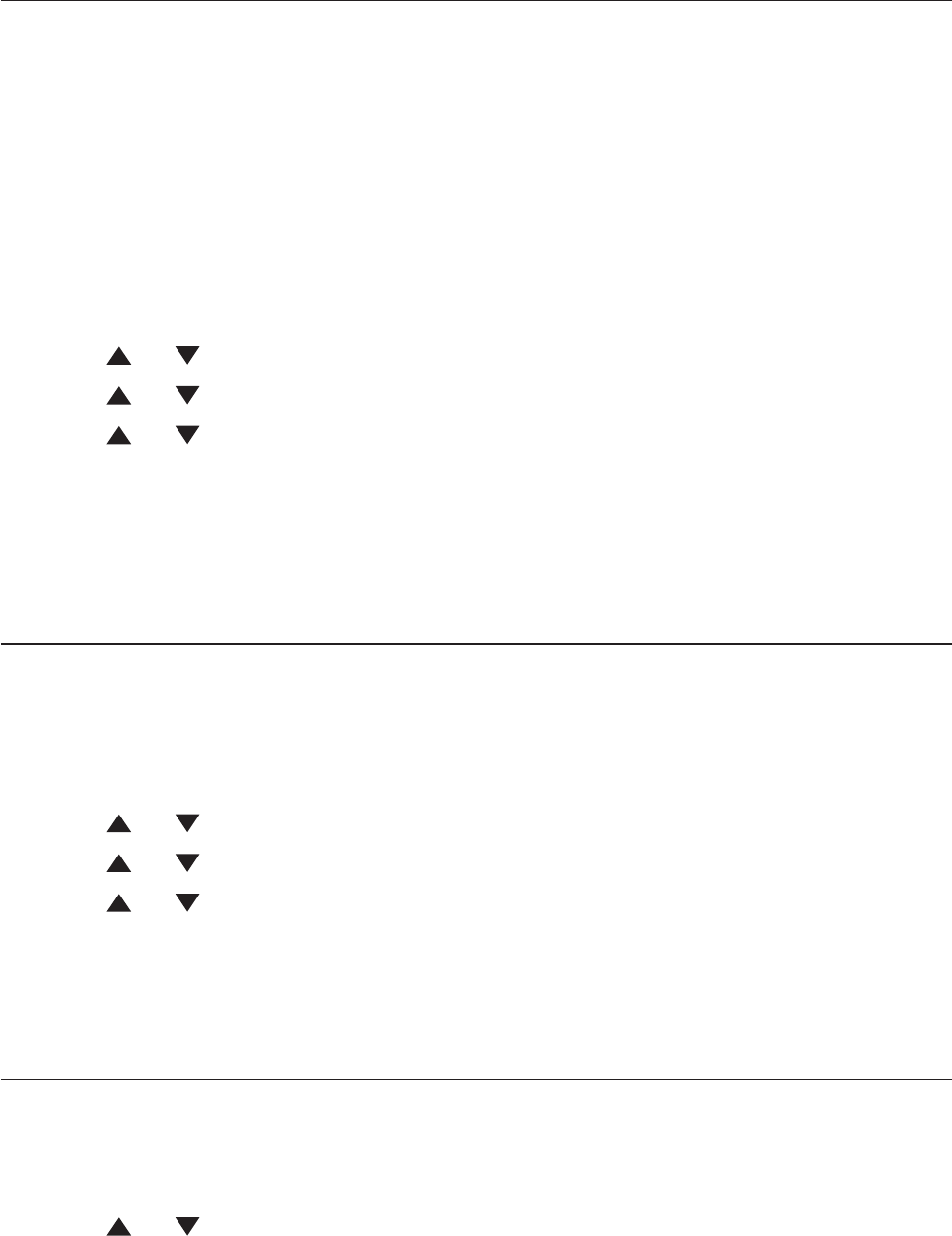
73
Answering system
Answering system setup
Message Length
Use this feature to set the maximum length of recorded messages.
You can select the maximum length for the messages callers can record. If
you choose Greeting only, the caller hears the selected announcement but
is not able to record a message. If you choose 1 minute,2 minutes or
3 minutes, the caller can record a message up to on one minute, two
minutes or three minutes. If you choose Unlimited, the caller can record a
message of any length, up to the amount time remaining for all messages,
memos, and announcements.
When the console is idle, press ANS SYS.
Press or to scroll to Ans Sys Setup then press MENU/SELECT.
Press or to scroll to Message Alert then press MENU/SELECT.
Press or to choose Greeting only,1 minute,2 minutes,3 minutes,
or Unlimited.
Press MENU/SELECT to save the setting and return to the previous
menu. There is a confirmation tone. To exit without making changes,
press CANCEL.
Call screening
Use this feature to choose whether incoming messages can be heard over
the speaker when they are being recorded. If you turn call screening on, your
hear the incoming message on your telephone when a call comes in.
When the console is idle, press ANS SYS.
Press or to scroll to Ans Sys Setup then press MENU/SELECT.
Press or to scroll to Call Screening then press MENU/SELECT.
Press or to choose On or Off.
Press MENU/SELECT to save the setting and return to the previous
menu. There is a confirmation tone. To exit without making changes,
press CANCEL.
Record time
Use this feature to check the amount of space currently in the system for the
estimated remaining recording time and number of messages.
When the console is idle, press ANS SYS.
Press or to scroll to Recording Time then press MENU/SELECT.
Press CANCEL to return to the previous menu.
1.
2.
3.
4.
5.
1.
2.
3.
4.
5.
1.
2.
3.

74
Answering system
About the auto attendant
You telephone system has two mailboxes, namely the central mailbox and
private mailbox.
If the auto attendant feature is off but the private mailbox is on, callers can
leaves messages in the private mailbox like an ordinary answering system.
If the auto attendant feature is on, it can store three kinds of messages,
private messages, central messages or system extension messages.
If both the auto attendant and private mailbox are turned on and you want
the auto attendant instead of the private mailbox to pick up an incoming call,
make sure you set the Auto ATT Delay of the auto attendant at a shorter
time than that of the private mailbox.
The auto attendant feature only works with a multi-phone system. Make sure
you have purchased MS2015 extension to expand your system before using
this feature. Only this MS2085 Console can serve as an auto attendant in the
telephone system and it redirects an incoming call from a shared outside line
to another phone in the same system. An auto attendant can only answer
one call at a time.
NOTES:
Only outside calls are answered by an auto attendant. The auto attendant phone does not answer
calls when the phone is being used for setup, message review, call history review, or a phone call.
If an auto attendant is active, adjust the delay times for different features to let the auto
attendant system answer outside calls. The private mailbox time (see Private mailbox delay on
page 69) of the console must be longer than the auto attendant answer delay time (see Auto
attendant delay on page 66).
Answering system capacity
You can record up to four outgoing announcements and a directory
announcement for the auto attendant, and one announcement for the private
mailbox. Each announcement can be up to two minutes.
Auto attendant and private mailbox announcements both require system
memory to record, so we suggest recording brief announcements in order to
leave more space for messages.
The maximum recording time of the console is 60 minutes. The actual
recording time depends on individual message characteristics. Messages
remain available for review until you delete them.
If the system memory is full, the screen displays Memory is full, and you
cannot record new messages until old ones have been deleted. Check
remaining system space frequently to maintain availability of space for
incoming messages.
NOTE: You cannot record an announcement when the telephone system is out of space.
You will hear a two-beep alert tone and voice prompt “Memory is full.”
1.
2.

75
Answering system
Auto attendant operation
Using the auto attendant
When auto attendant is on, it automatically picks up a ringing line after the
pickup delay time you programmed (see Auto attendant delay on page 66),
and plays the appropriate auto attendant announcement. You can choose
from the following options.
Enter an extension number after the auto attendant announcement
is played. The system plays the default announcement ”Calling that
extension, Please wait.”
If the destination extension does not answer after around 12 seconds,
the call will be directed to the Console. If the call is not picked up after
45 seconds, the auto attendant answers the call again and announces,
“That extension is not answering. Enter a new extension number, or,
to leave a central message in the general mailbox, please dial nine.” If
the caller does not enter a command in 12 seconds, the auto attendant
announces, “That extension is not answering. Thank you.” and drops the
call.
If the destination extension does not pick up after around 45 seconds,
the system announces, “That extension is not answering. Enter a
new extension number, or, to leave a central message in the general
mailbox, please dial 9.”
If the private mailbox on the destination extension is on and the call
is not picked up after the programmed delay time, the extension
announces, “Hello, please leave a message after the tone,” then you
can record a private message in that extension mailbox.
Press 9 to enter central mailbox and leave a message.
Press 0 to play the directory announcement. The caller can then decide
whether to enter an extension number or not, and the auto attendant
responds as described above.
Enter the remote access code when the auto attendant announcement is
being played to access the answering system remotely.
A.
•
•
•
B.
C.
D.
Answering system
Auto attendant operation
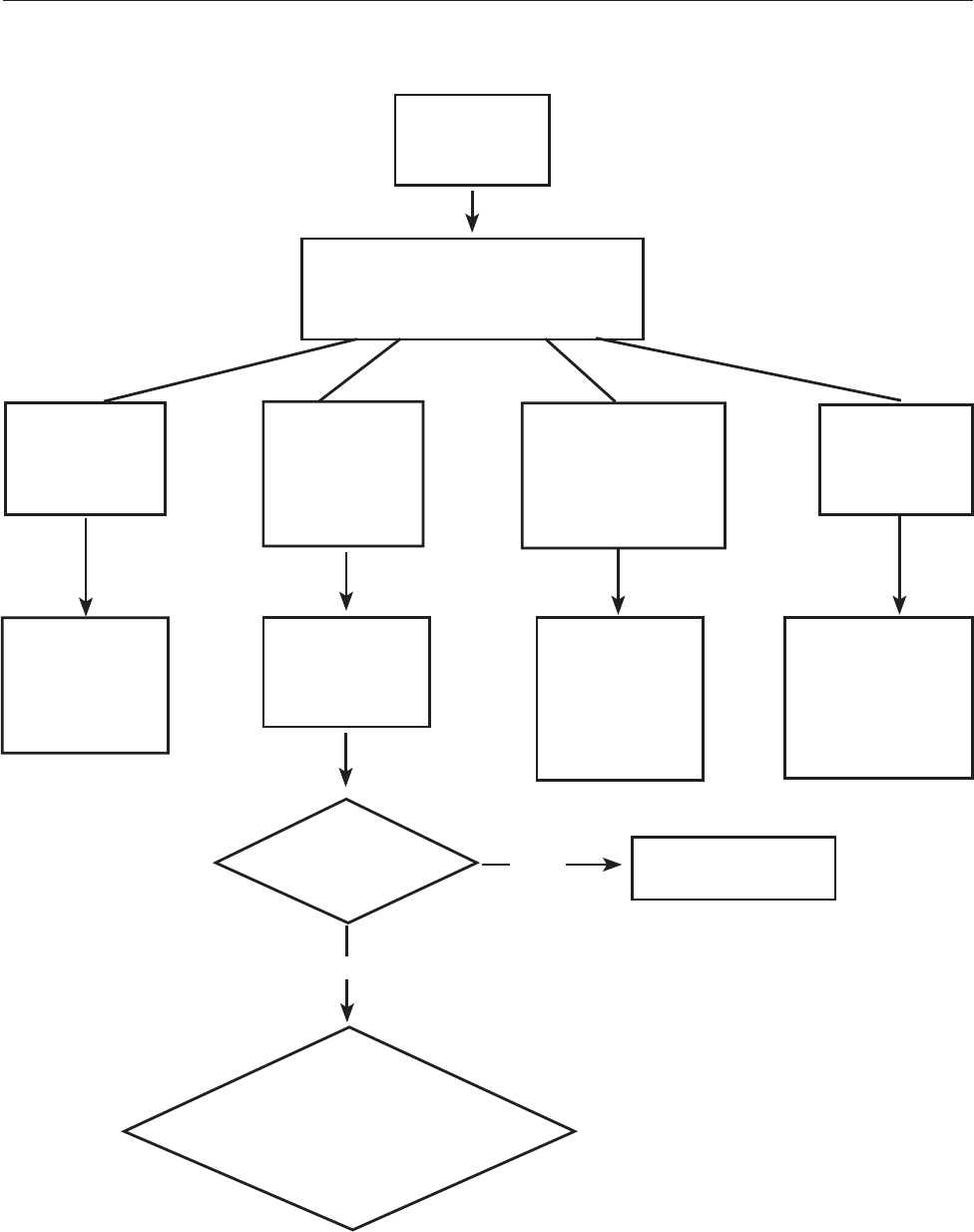
76
Answering system
Auto attendant operation
AA
records
central
message
Incoming
call
AA answers and plays
outgoing announcement
Person
answers call? Normal call
Caller
enters another
extension
or records a
message
Yes
No
AA calls
extension
Caller dials
extension
number
Caller dials
9
Caller enters
remote access
code
No caller
input
Call ends
Answering
system
remote
access
Auto attendant flow chart
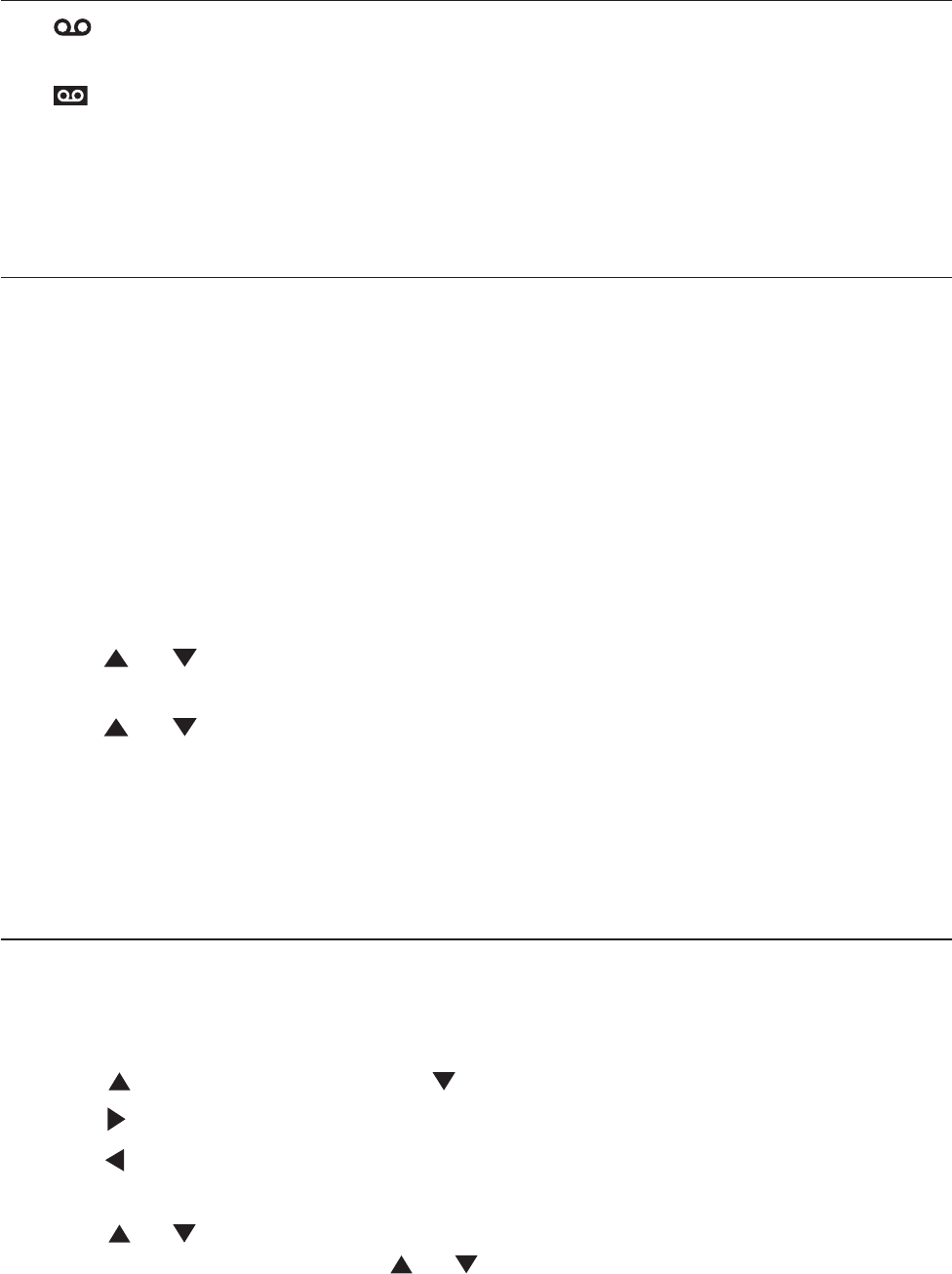
77
Answering system
Answering system operation
New message indication
The displays on the console when there are new messages in the
central mailbox.
The displays on the console when there are new messages and memos in
the private mailbox.
The MESSAGE WAITING indictor on the Condole flashes when there are
messages in either the central or private mailbox.
Message playback
From the console, you can play the messages in both the central and
private mailboxes.
If you have new messages, you hear only the new messages (in chronological
order). If there are no new messages, the system plays back all the messages (in
chronological order).
When playback begins, the total number of messages is announced. Before
each message, you hear the date and time of the recording. After the last
message, you hear “End of the messages.”
To listen to messages in the mailbox:
While the telephone is idle, press ANS SYS on the console.
Press or to choose Central Mailbox or Private Mailbox, then press
MENU/SELECT.
Press or to choose Play new msgs to play the new message only or
Play all msg to play all the messages in the mailbox.
Press MENU/SELECT to play the messages.
The system announces the number of new or missed messages in
the mailbox.
Options during playback
When a message is playing, you can adjust the playback volume, skip, repeat,
or delete the message.
When a message is playing on the Console:
Press /VOLUME+ or VOLUME/ to adjust the message playback volume.
Press /SKIP to skip to the next message.
Press /REPEAT or to repeat the current message. Press twice to hear the to repeat the current message. Press twice to hear the
previous message.
Press or to scroll to choose Pause, then press MENU/SELECT to pause
the message playback. Press or to scroll to choose Resume, then
press MENU/SELECT to resume.
Press DELETE to delete the message. The system announces “Message deleted.”
1.
2.
3.
4.
5.
•
•
•
•
•
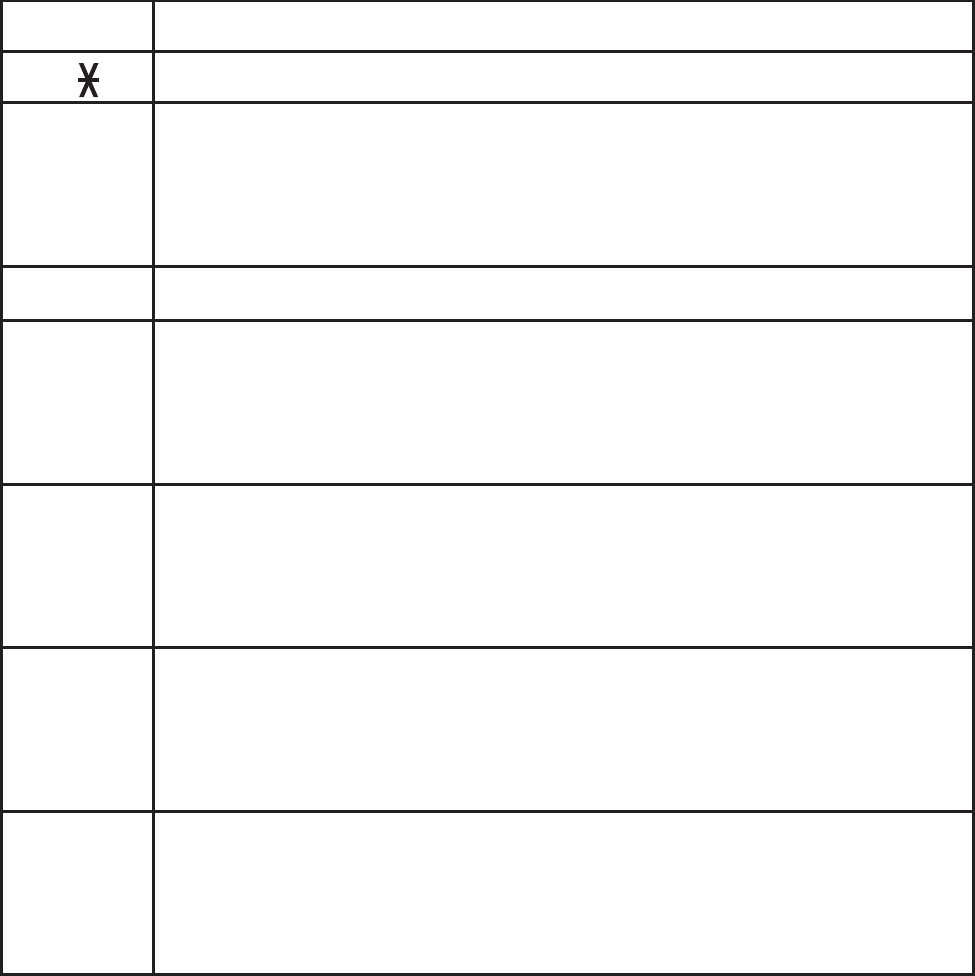
78
Answering system
Remote access
Use this feature to reach your answering system remotely by dialing your
telephone number from any touch-tone telephone.
To remotely reach the answering system:
1. Dial your telephone number from any touch-tone telephone.
2. When the system answers, enter the three-digit remote access code (111
is the default code; see Remote access code on page 72 to change it).
The system automatically announces the number of messages (new and/or
old) if there are any, and then begins to play them.
3. You can also enter the following remote commands.
Remote commands:
1Press to play to all messages.
1Press to play all messages.
2
Press within three seconds of the message playing to go back
to the previous message.
Press after three seconds of the message playing to repeat the
message currently playing.
3Press to delete the current message (during playback).
41
Press to play the auto attendant announcement Day OGM 1.
Press 9and wait for the beep before speaking.
Press 8 to stop recording and listen to the playback of the
new announcement.
•
•
42
Press to play the auto attendant announcement Day OGM 2.
Press 9and wait for the beep before speaking.
Press 8 to stop recording and listen to the playback of the
new announcement.
•
•
43
Press to play the auto attendant announcement Day OGM 3.
Press 9and wait for the beep before speaking.
Press 8 to stop recording and listen to the playback of the
new announcement.
•
•
5
Press to play the auto attendant announcement Night OGM.
Press 9and wait for the beep before speaking.
Press 8 to stop recording and listen to the playback of the
new announcement.
•
•
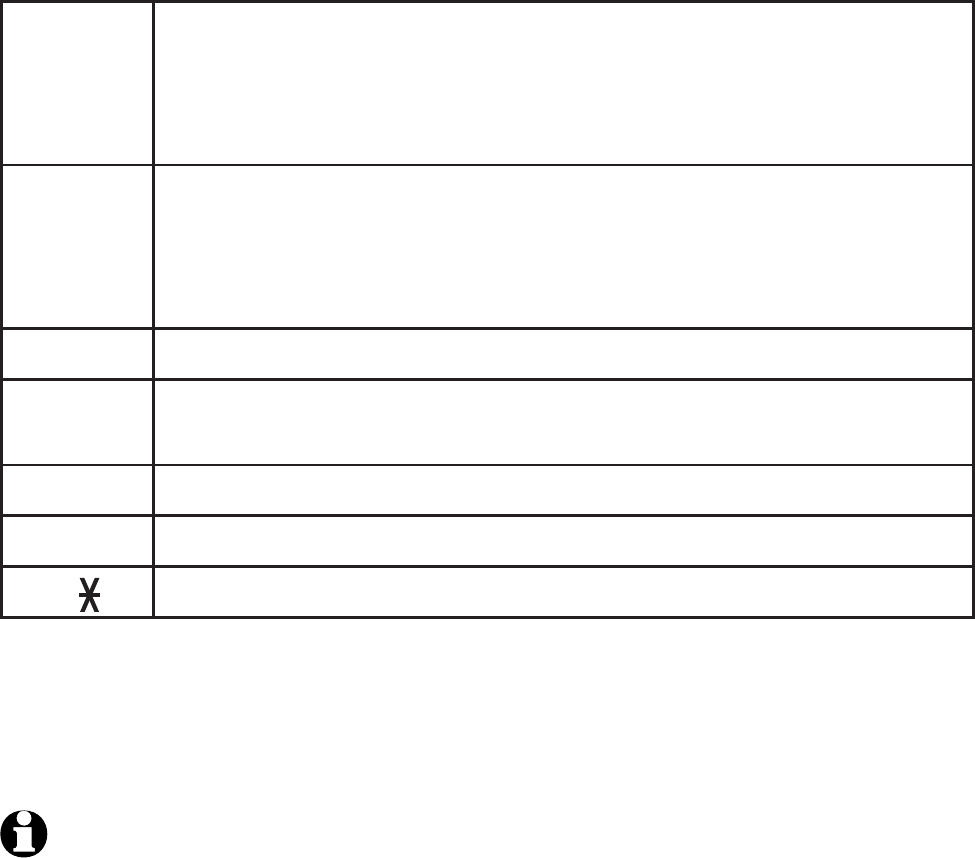
79
Answering system
Remote access
6
Press to play current auto attendant directory announcement
Press 9and wait for the beep before speaking.
Press 8 to stop recording and listen to the playback of the
new announcement.
•
•
7
Press to play current answering system announcement.
Press 9and wait for the beep before speaking.
Press 8 to stop recording and listen to the playback of the
new announcement.
•
•
8Press to end the call.
9Press to start recording a memo
Press 8 to stop recording.•
0Press to turn the answering system on or off.
## Press during a message playback to delete current message.
#Press to delete all messages.
4. Hang up to end the call and save all undeleted messages.
Cut out the remote access wallet card at the back of this user’s manual for
quick reference.
NOTES:
1. If you do not enter a valid remote access code, the answering system answers the call as usual
and all the voice and digits entered will be recorded as messages stored in your general mailbox.
2. If you do not enter any remote access code, the answering system announces “Thank you for
calling,” and the call ends.
3. When there is no new message or all the new messages are played during remote access, you
hear a help menu listing all features and commands. If there is no command after the help menu is
played three times, the call ends automatically.
4. If the memory is full, you hear a two-beep alert tone and the answering system announces,
“Memory is full.” The console screen displays Message full. and you cannot record new messages
until old ones have been deleted. Check the system remaining space () frequently to maintain
availability of space for incoming messages.
5. If you press 4 within five seconds of each message playback start, the previous message plays
instead of repeating the current message.

Taking care of your telephone
Your telephone base contains sophisticated electronic parts, so you must treat it with care.
Avoid rough treatment.
Place the corded handset down gently.
Save the original packing materials to protect your telephone base if you ever need to ship it.
Avoid water
You can damage your telephone base if it gets wet. Do not use the corded handset in the rain,
or handle it with wet hands. Do not install the telephone base near a sink, bathtub or shower.
Electrical storms
Electrical storms can sometimes cause power surges harmful to electronic equipment. For
your own safety, take caution when using electric appliances during storms.
Cleaning your telephone
Your telephone base has a durable plastic casing that should retain its luster for many years.
Clean it only with a soft cloth slightly dampened with water or a mild soap.
Do not use excess water or cleaning solvents of any kind.
•
•
•
•
•
•
•
•
Appendix
Maintenance
80
Remember that electrical appliances can cause serious injury if used when you are wet or
standing in water. If the telephone base should fall into water, DO NOT RETRIEVE IT UNTIL
YOU UNPLUG THE POWER CORD AND TELEPHONE LINE CORDS FROM THE WALL. Then pull
the unit out by the unplugged cords.

This symbol is to alert you to important operating or servicing instructions that may
appear in this user’s manual. Always follow basic safety precautions when using this
product to reduce the risk of injury, fire, or electric shock.
Safety information
Read and understand all instructions in the user’s manual. Observe all markings on
the product.
Avoid using a telephone during a thunderstorm. There may be a slight chance of electric shock
from lightning.
Do not use the telephone to report a gas leak in the vicinity of the leak. Under certain
circumstances, a spark may be created when the adapter is plugged into the power outlet,
or when the handset is replaced in its cradle. This is a common event associated with
the closing of any electrical circuit. The user should not plug the phone into a power
outlet, and should not put a charged handset into the cradle, if the phone is located in an
environment containing concentrations of flammable or flame-supporting gases, unless there
is adequate ventilation. A spark in such an environment could create a fire or explosion. Such
environments might include: medical use of oxygen without adequate ventilation; industrial
gases (cleaning solvents; gasoline vapors; etc.); a leak of natural gas; etc.
Do not use this product near water, or when you are wet. For example, do not use it in a wet
basement or shower, or next to a swimming pool, bathtub, kitchen sink, or laundry tub. Do
not use liquids or aerosol sprays for cleaning. If the product comes in contact with any liquid,
unplug any line or power cord immediately. Do not plug the product back in until it has
dried thoroughly.
Install this product in a protected location where no one can trip over any line or power cords.
Protect cords from damage or abrasion.
If this product does not operate normally, see the Troubleshooting section on pages 93-99
of this user’s manual. If you cannot solve the problem, or if the product is damaged, refer to
the Limited warranty section on pages 85-86. Do not open this product except as directed
in your user’s manual. Opening the product or reassembling it incorrectly may expose you to
hazardous voltages or other risks.
Replace backup battery only as described in your user’s manual (see ). Do not burn or
puncture batteries — they contain caustic chemicals.
This power adapter is intended to be correctly oriented in a vertical or floor mount position.
The prongs are not designed to hold the plug in place if it is plugged into a ceiling, an under-
the-table or cabinet outlet.
Caution: Use only the power adapter provided with this product. To obtain a
replacement, visit our website at www.telephones.att.com or call
1 (800) 222-3111. In Canada, dial 1 (866) 288-4268.
•
•
•
•
•
•
•
•
Appendix
Important safety information
81

Especially about cordless telephones
Electrical power: The telephone base must be connected to a working electrical outlet. The
electrical outlet should not be controlled by a wall switch. Calls cannot be made from the
handset if the telephone base is unplugged, switched off or if the electrical power
is interrupted.
Power adapter: The power adapter is intended to be correctly oriented in a vertical or floor
mount position. The prongs are not designed to hold the plug in place if it is plugged into a
ceiling, under-the-table or cabinet outlet.
Precautions for users of implanted cardiac pacemakers
Cardiac pacemakers (applies only to digital cordless telephones):
Wireless Technology Research, LLC (WTR), an independent research entity, led a multidisciplinary
evaluation of the interference between portable wireless telephones and implanted cardiac
pacemakers. Supported by the U.S. Food and Drug Administration, WTR recommends to
physicians that:
Pacemaker patients
Should keep wireless telephones at least six inches from the pacemaker.
Should NOT place wireless telephones directly over the pacemaker, such as in a breast pocket,
when it is turned ON.
Should use the wireless telephone at the ear opposite the pacemaker.
WTR’s evaluation did not identify any risk to bystanders with pacemakers from other persons
using wireless telephones.
Especially about telephone answering systems
Two-way recording: This unit does not sound warning beeps to inform the other party that the
call is being recorded. To ensure that you are in compliance with any federal or state regulations
regarding recording a telephone call, you should start the recording process and then inform the
other party that you are recording the conversation.
SAVE THESE INSTRUCTIONS
•
•
•
•
•
Appendix
Important safety information
82
This equipment complies with Part 68 of the FCC rules and with technical requirements adopted
by the Administrative Council for Terminal Attachments (ACTA). The label on the back or
bottom of this equipment contains, among other things, a product identifier in the format US:
AAAEQ##TXXXX. This identifier must be provided to your telephone service provider upon request.
The plug and jack used to connect this equipment to premises wiring and the telephone network
must comply with the applicable Part 68 rules and technical requirements adopted by ACTA. A
compliant telephone cord and modular plug is provided with this product. It is designed to be
connected to a compatible modular jack that is also compliant. An RJ11 jack should normally be
used for connecting to a single line and an RJ14 jack for two lines. See Installation Instructions in
the user’s manual.
The Ringer Equivalence Number (REN) is used to determine how many devices you may connect
to your telephone line and still have them ring when you are called. The REN for this product is
encoded as the 6th and 7th characters following the US: in the product identifier (e.g., if ## is
03, the REN is 0.3). In most, but not all areas, the sum of all RENs should be five (5.0) or less. For
more information, please contact your telephone service provider.
This equipment may not be used with Party Lines. If you have specially wired alarm dialing
equipment connected to telephone line, ensure the connection of this equipment does not
disable your alarm equipment. If you have questions about what will disable the alarm equipment,
consult your telephone service provider or a qualified installer.
If this equipment is malfunctioning, it must be unplugged from the modular jack until the problem
has been corrected. Repairs to this telephone equipment can only be made by the manufacturer
or its authorized agents. For repair procedures, follow the instructions outlined under the Limited
Warranty.
If this equipment is causing harm to the telephone network, the telephone service provider may
temporarily discontinue your telephone service. The telephone service provider is required to
notify you before interrupting service. If advance notice is not practical, you will be notified as
soon as possible. You will be given the opportunity to correct the problem and the telephone
service provider is required to inform you of your right to file a complaint with the FCC. Your
telephone service provider may make changes in its facilities, equipment, operation, or procedures
that could affect the proper functioning of this product. The telephone service provider is required
to notify you if such changes are planned.
If this product is equipped with a corded or cordless handset, it is hearing aid compatible.
If this product has memory dialing locations, you may choose to store emergency telephone
numbers (e.g., police, fire, medical) in these locations. If you do store or test emergency numbers,
please:
Remain on the line and briefly explain the reason for the call before hanging up.
Perform such activities in off-peak hours, such as early morning or late evening.
Industry Canada
Operation is subject to the following two conditions: (1) this device may not cause harmful
interference, and (2) this device must accept any interference, including interference that may
cause undesired operation.
The term ‘’IC:‘’ before the certification/registration number only signifies that the Industry Canada
technical specifications were met.
The Ringer Equivalence Number (REN) for this terminal equipment is 0.1. The REN is an indication
of the maximum number of devices allowed to be connected to a telephone interface. The
termination on an interface may consist of any combination of devices subject only to the
requirement that the sum of the RENs of all the devices does not exceed five.
This product meets the applicable Industry Canada technical specifications.
Appendix
FCC part 68 and ACTA
83
This equipment has been tested and found to comply with the limits for a Class A digital
device, pursuant to Part 15 of the FCC Rules. These limits are designed to provide reasonable
protection against harmful interference when the equipment is operated in a commercial
environment. This equipment generates, uses, and can radiate radio frequency energy and,
if not installed and used in accordance with the instruction manual, may cause harmful
interference to radio communications. Operation of this equipment in a residential area is
likely to cause harmful interference in which case the user will be required to correct the
interference at his own expense.
This Class A digital apparatus complies with Canadian ICES-003.
Cet appareil numérique de la classe A est conforme à la norme NMB-003 du Canada.
Warning: Changes or modifications to this equipment not expressly approved by the party
responsible for compliance could void the user’s authority to operate the equipment.
Caution: To maintain the compliance with the FCC’s RF exposure guideline, place the console
(base unit) at least 20 cm from nearby persons
Appendix
FCC part 15
84
The AT&T brand is used under license - any repair, replacement or warranty service, and all
questions about this product should be directed to: In the United States of America, visit
www.telephones.att.com or call 1 (800) 222-3111. In Canada, call
1 (866) 288-4268.
1. What does this limited warranty cover?
The manufacturer of this AT&T-branded product warrants to the holder of a valid proof of
purchase (“CONSUMER” or “you”) that the product and all accessories provided in the sales
package (“PRODUCT”) are free from defects in material and workmanship, pursuant to the
following terms and conditions, when installed and used normally and in accordance with the
PRODUCT operating instructions. This limited warranty extends only to the CONSUMER for
products purchased and used in the United States of America and Canada.
2. What will be done if the PRODUCT is not free from defects in materials and workmanship
during the limited warranty period (“materially defective PRODUCT”)?
During the limited warranty period, the manufacturer’s authorized service representative will
repair or replace at the manufacturer’s option, without charge, a materially defective PRODUCT.
If the manufacturer repairs the PRODUCT, they may use new or refurbished replacement parts. If
the manufacturer chooses to replace the PRODUCT, they may replace it with a new or refurbished
PRODUCT of the same or similar design. The manufacturer will retain defective parts, modules, or
equipment. Repair or replacement of the PRODUCT, at the manufacturer’s option, is your exclusive
remedy. The manufacturer will return repaired or replacement products to you in working
condition. You should expect the repair or replacement to take approximately 30 days.
3. How long is the limited warranty period?
The limited warranty period for the PRODUCT extends for ONE (1) YEAR from the date of
purchase. If the manufacturer repairs or replaces a materially defective PRODUCT under the terms
of this limited warranty, this limited warranty also applies to repaired or replacement PRODUCT
for a period of either (a) 90 days from the date the repaired or replacement PRODUCT is shipped
to you or (b) the time remaining on the original one-year limited warranty; whichever is longer.
4. What is not covered by this limited warranty?
This limited warranty does not cover:
PRODUCT that has been subjected to misuse, accident, shipping or other physical damage,
improper installation, abnormal operation or handling, neglect, inundation, fire, water, or other
liquid intrusion; or
PRODUCT that has been damaged due to repair, alteration, or modification by anyone other
than an authorized service representative of the manufacturer; or
PRODUCT to the extent that the problem experienced is caused by signal conditions, network
reliability or cable or antenna systems; or
PRODUCT to the extent that the problem is caused by use with non-AT&T accessories; or
PRODUCT whose warranty/quality stickers, PRODUCT serial number plates or electronic serial
numbers have been removed, altered or rendered illegible; or
PRODUCT purchased, used, serviced, or shipped for repair from outside the United States of
America or Canada, or used for commercial or institutional purposes (including but not limited
to products used for rental purposes); or
PRODUCT returned without a valid proof of purchase (see item 6 below); or
Charges for installation or setup, adjustment of customer controls, and installation or repair of
systems outside the unit.
•
•
•
•
•
•
•
•
Appendix
Limited warranty
85

5. How do you get warranty service?
To obtain warranty service in the United States of America, visit
www.telephones.att.com or call 1 (800) 222-3111. In Canada, call
1 (866) 288-4268. NOTE: Before calling for service, please review the user’s manual; a
check of the PRODUCT’s controls and features may save you a service call.
Except as provided by applicable law, you assume the risk of loss or damage during transit and
transportation and are responsible for delivery or handling charges incurred in the transport
of the PRODUCT(s) to the service location. The manufacturer will return repaired or replaced
PRODUCT under this limited warranty to you. Transportation, delivery or handling charges are
prepaid. The manufacturer assumes no risk for damage or loss of the PRODUCT in transit. If the
PRODUCT failure is not covered by this limited warranty, or proof of purchase does not meet the
terms of this limited warranty, the manufacturer will notify you and will request that you authorize
the cost of repair prior to any further repair activity. You must pay for the cost of repair and
return shipping costs for the repair of products that are not covered by this limited warranty.
6. What must you return with the PRODUCT to get warranty service?
You must:
Return the entire original package and contents including the PRODUCT to the service
location along with a description of the malfunction or difficulty; and
Include a “valid proof of purchase” (sales receipt) identifying the PRODUCT purchased
(PRODUCT model) and the date of purchase or receipt; and
Provide your name, complete and correct mailing address, and telephone number.
7. Other limitations
This warranty is the complete and exclusive agreement between you and the manufacturer of
this AT&T branded PRODUCT. It supersedes all other written or oral communications related to
this PRODUCT. The manufacturer provides no other warranties for this PRODUCT. The warranty
exclusively describes all of the manufacturer’s responsibilities regarding the PRODUCT. There are
no other express warranties. No one is authorized to make modifications to this limited warranty
and you should not rely on any such modification.
State/Provincial Law rights: This warranty gives you specific legal rights, and you may also have
other rights which vary from state to state or province to province.
Limitations: Implied warranties, including those of fitness for a particular purpose and
merchantability (an unwritten warranty that the PRODUCT is fit for ordinary use) are limited to
one year from date of purchase. Some states/provinces do not allow limitations on how long
an implied warranty lasts, so the above limitation may not apply to you. In no event shall the
manufacturer be liable for any indirect, special, incidental, consequential, or similar damages
(including, but not limited to lost profits or revenue, inability to use the PRODUCT or other
associated equipment, the cost of substitute equipment, and claims by third parties) resulting
from the use of this PRODUCT. Some states/provinces do not allow the exclusion or limitation of
incidental or consequential damages, so the above limitation or exclusion may not apply to you.
Please retain your original sales receipt as proof of purchase.
•
•
•
Appendix
Limited warranty
86

1921.536MHz - 1928.448MHz
5
32°F - 122°F
0°C - 50°C
5.1VDC @1200mA
RF frequency band
Channels
Operating temperature
Telephone base voltage
(AC adapter output)
PSTN Jacks 1-4 (FXO ports)
Appendix
Technical specifications
87
Ethernet Network Ports 10/100 Mbps RJ-45 Port
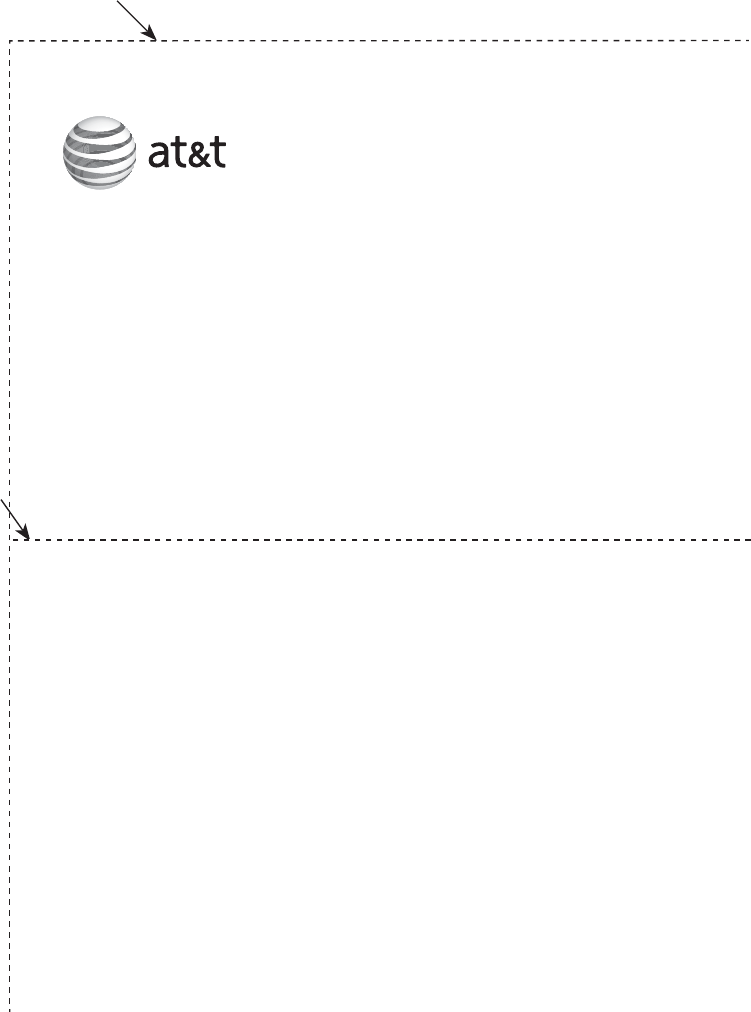
Use the wallet card below to help you remember commands to control your
answering system from any touch-tone telephone.
Fold here.
Cut along dotted line.
Action Remote command
Play all messages .............................................................1
Delete the message.........................................................3
Repeat the message........................................................4
Listen to the previous message.................................4(twice)
Help menu and return to the
remote commands .....................................................5
Skip the message..............................................................6
Transfer the message......................................................7
End remote access call ..................................................*(or hang up)
Call your telephone number,
then enter your four-digit
access code (preset to 0000).
Model name: MS2085
Type: DECT 6.0 4-line corded/cordless small business systemDECT 6.0 4-line corded/cordless small business system
© 2010 Advanced American Telephones. All Rights Reserved. AT&T and
the AT&T logo are trademarks of AT&T Intellectual Property licensed to
Advanced American Telephones, San Antonio, TX 78219. Printed in China.
Remote access wallet card

© 2012 Advanced American Telephones. All Rights Reserved.
AT&T and the AT&T logo are trademarks of AT&T Intellectual Property licensed to
Advanced American Telephones, San Antonio, TX 78219.
Printed in China. Issue 1 AT&T 03/12.
www.telephones.att.com